News
Press
June 2024
Specifications Exaggerations
Our phono stages have a guaranteed RIAA accuracy of +/- 0.1 dB or better.
We recently became aware of an inexpensive transimpedance phono stage, the subject of many online reviews, that also claimed +/- 0.1 dB RIAA accuracy. Knowing that it takes hand-selected components to achieve this performance level, and intrigued how this spec could be achieved in a mass produced, inexpensive product, we purchased one of these units and measured the RIAA accuracy.
The claimed +/- 0.1 dB accuracy (no frequency range given), wasn't met. The broad peak in the upper bass would definitely be audible, affecting the tonal balance. See graph below comparing to Lino C 3.3, and an expanded graph highlighting the 0.01 dB range.
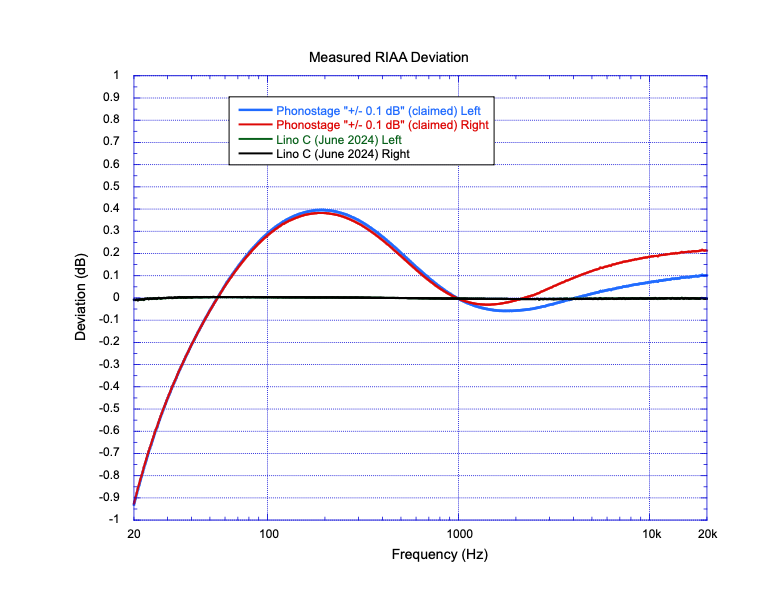
(Above) RIAA Accuracy.
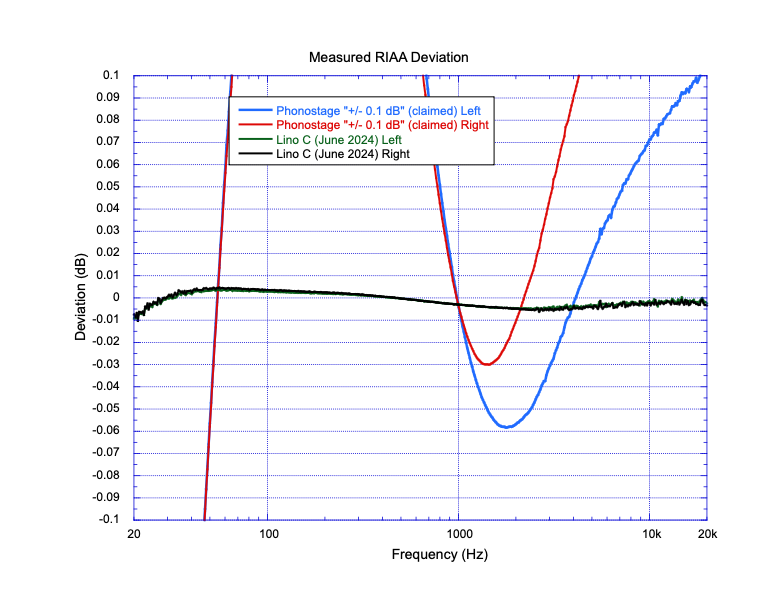
(Above) RIAA Accuracy, magnified vertical scale.
While at it, we also measured the distortion with a 1 kHz input signal. See below.
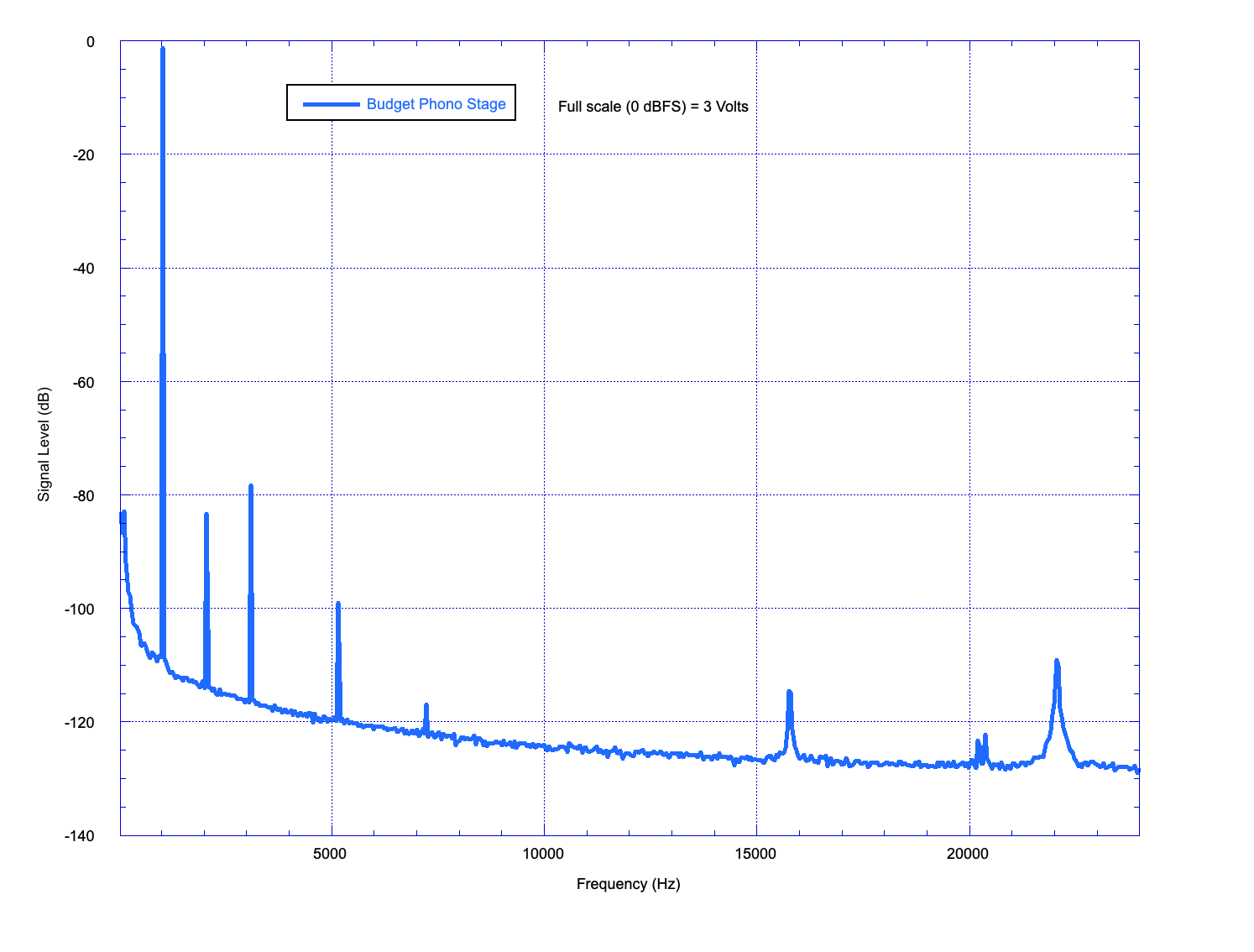
(Above) Budget phono stage, 1 kHz distortion.
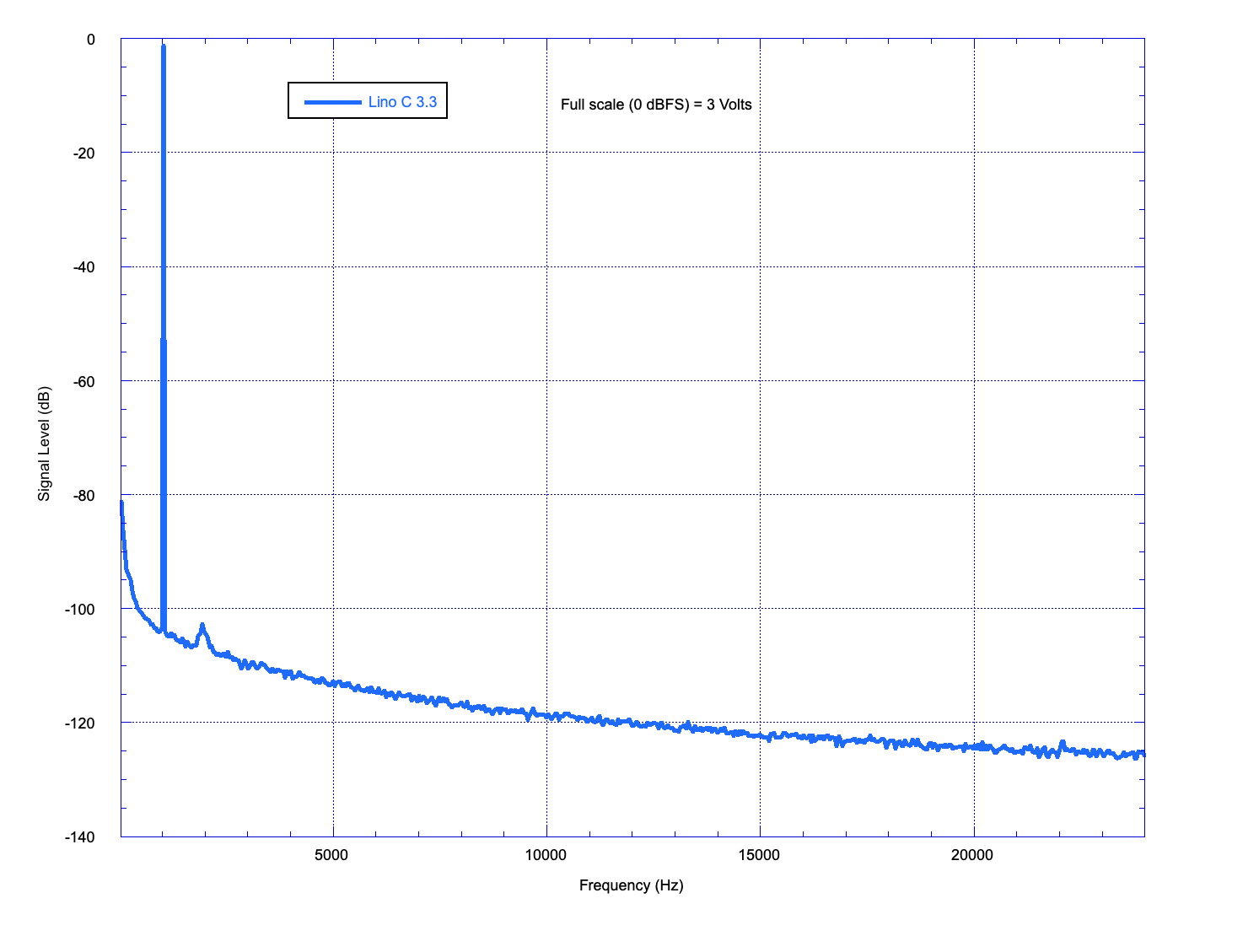
(Above) Lino C 3.3, 1 kHz distortion.
Budget priced phono stages are welcome in the marketplace but beware of exaggerated specifications and performance limitations. Every single phono stage we ship has its RIAA accuracy measured, verified, and guaranteed to meet our specification. Which, for the Lino C 3.3 recently has been upgraded to be within +/- 0.05 dB 20 Hz to 20 kHz, standard, for all units manufactured May 2024 and later. Optional +/- 0.01 dB certification remains available.
All of our phono stages allow disabling the RIAA equalization for using digital domain RIAA EQ and integration with computer audio, but aside from this feature function the same as all standard phono stages with built in RIAA equalization (that is, no computer required).
November 2023
Lino C 2.x Battery Upgrade Kit
The original 9 AH battery used in the Lino C 2.0 has been discontinued due to pandemic related closure of production lines and production shifting to other factories. There are similar, third-party replacements available but they have proven to have disappointing performance and longevity. The replacement, 10 AH battery (used in the Lino C 3.3) is almost a drop-in replacement...
..."almost" meaning the thickness is about 0.3 inch greater. This interferes with the positioning of the chassis cover. The battery can be used, but the cover cannot be attached. Another minor problem is that the terminals are 0.187" instead of 0.250" wide. This is addressable by gently bending the battery terminals to create friction with the 0.25" connectors used in the Lino C 2.0 on the battery printed circuit board.
Of course, all Lino C phono stages can be operated without the internal battery, by moving the protection fuse to the adjacent set of terminals, but optimal performance is realized with the battery installed.
We have designed and are announcing a user-installable chassis add-on shim kit for the chassis panels to accommodate the newer version of the battery. We expect this kit to be available in Q1 2024. In the meantime, it would be helpful to hear from Lino C users to gauge the level of interest in the kit; kindly reach out to our support email listed on our Contact page.
November 2023
Software und Hardware
It's been more than a year since our last "News" posting.
Our audio hardware business has been more successful than anticipated and has been commanding allocation of limited resources… compounded by having to unexpectedly spend time on hardware product redesigns because of pandemic supply chain disruptions and component shortages of certain critical components that persisted past the middle of 2023. We now are buttressed against that problem through time-consuming, and iterative design revisions and stockpiling of critical and expensive components.
That situation has upended and substantially delayed the anticipated schedule for delivering software updates.
There is a conflict between the hardware and software sides of the business. It has been a business based decision to allocate resources in this way, but we have definitely not forgotten our software products.
We have four Apple Silicon Macs for development and testing. There have been no unanticipated nor insurmountable obstacles, but there is more to do.
The user interface code base developed and revised over a 16+ year period based on Apple’s APIs was made obsolete by Apple’s new OS versions. This wasn’t a capricious decision on their part, but necessary to improve computer security for the “impolite” world we live in. All of the underlying code for audio - the foundation of the product - required no revision to “just work” - it was already using 64 bit addressing - but of course software without a user interface is of limited use, and the user interface is where efforts have been focussed (when not interrupted by other business matters as described above).
It is not a simple matter of replacing a few lines of UI code with the 64 bit counterparts (although making Pure Music compatible with the Music app instead of iTunes only involved a few lines of code). The UI required a complete redesign entirely from scratch using newer and quite different Apple APIs.
The effort in producing an Apple Silicon compatible version and one with 64-bit memory addressing is a parallel process requiring negligible additional effort for the former (mostly in the form of requiring added testing) for the Apple Silicon version.
We won’t go so far as to say “the wait will be worth it” because the “wait” part of that has been shamefully long, but the end result will be software that has been substantially refreshed and improved. The updated software is a Universal binary that runs natively on Apple Silicon and Intel processor computers.
We don’t have any further information at this time, other than developing the updates is still in progress. We wish we could snap our fingers and have the updates today.
November 2023
Pure Vinyl / Pure Music workarounds
This information is not being offered as an acceptable solution to the OS compatibility problem, but in hopes that it may help some users who are able to maintain or have available legacy computer systems.
If an Intel processor Mac has been upgraded beyond MacOS 10.14.6, reverting the OS upgrade from a backup, or partitioning the hard drive and installing an OS <= 10.14.6 or installing on an external HD (preferably SSD) and booting from that partition / HD is a workaround.
Products and pricing as of time of posting:
External SATA SSD ($35):
https://www.amazon.com/Crucial-MX500-500GB-NAND-Internal/dp/B0786QNS9B
2.5” SATA to USB ($11):
https://www.amazon.com/StarTech-com-SATA-USB-Cable-USB3S2SAT3CB/dp/B00HJZJI84
USB-C to SATA adapters also are available at a comparable price, but it’s preferable to use an Apple USB to USB-C adapter with the above, if directly using a USB C port.
Format the SSD using Disk Utility, then install Mojave OS. Download Mojave from the App Store and follow instructions to create a bootable installer, per this document:
https://support.apple.com/en-us/HT201372
When finished, reboot the Mac with the Option key held down and select the external SSD with Mojave.
If the internal drive is formatted as APFS it can be partitioned using Disk Utility without any loss of space (APFS “Partitions” seamlessly share space on the drive, and a partition size doesn’t need to be specified when creating a new partition). Next, clone the above created startup drive to the partition (e.g., use Carbon Copy Cloner, version CCC 5, available at https://bombich.com/download). Because of security constraints with Apple’s 64 bit OS versions, the OS can’t be installed directly on the partition; it first must be installed on an external drive, then cloned to the new internal partition.
The amount of extra space consumed on the internal SSD by the extra boot partition will be less than 20 GB. However because of the way APFS is designed, configuring the boot partition requires restarting with the Option key held down, this cannot be done directly using the Startup Disk control panel when there is more than one OS partition on the internal drive; the Startup Disk control panel only works with external drives.
Note: inexpensive (starting at well under $200) used 2012 and later Mac Minis with 2.5+ GHz Intel Core i5/i7 processors, internal SSDs and 8+ GB RAM which are perfect for running Pure Music / Pure Vinyl are available in customized configurations from online vendors such as OWC:
https://eshop.macsales.com/configure-my-mac/mac-mini
These can be operated using Mac Screen Sharing from any Mac running any OS (including the very latest) as though sitting at that computer with its own mouse, keyboard and monitor. This allows keeping a purpose-built inexpensive computer for "computer audio" and a newer computer for secure Internet use.
September 2022
Class A+ : Lino C 3.3 placed in Stereophile's Recommended Components "A+" Category!
Big news for us in the October 2022 "RC" issue of Stereophile: the Channel D Lino C 3.3 has now become one of only three phono stages recommended by Stereophile to be placed into their exclusive "Class A+" Category of Recommended Components!
Also honored as "Class A" phono stages (formerly the highest category before Class A+ was added as a category) are the Lino C 2.0 and Seta L (2012 production version).
We are over the moon thrilled by this! A big thank you to Stereophile.
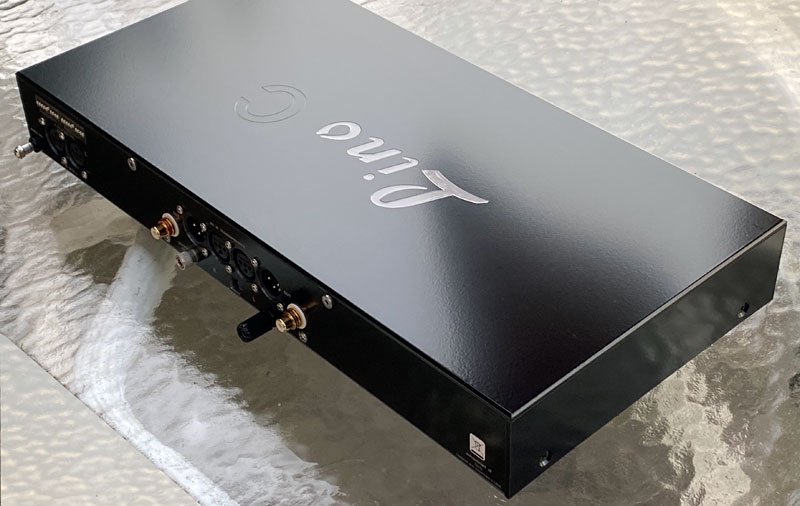
Lino C 3.3 with optional black powder coat finish.
August 2022
Seta Model L 2022 Edition
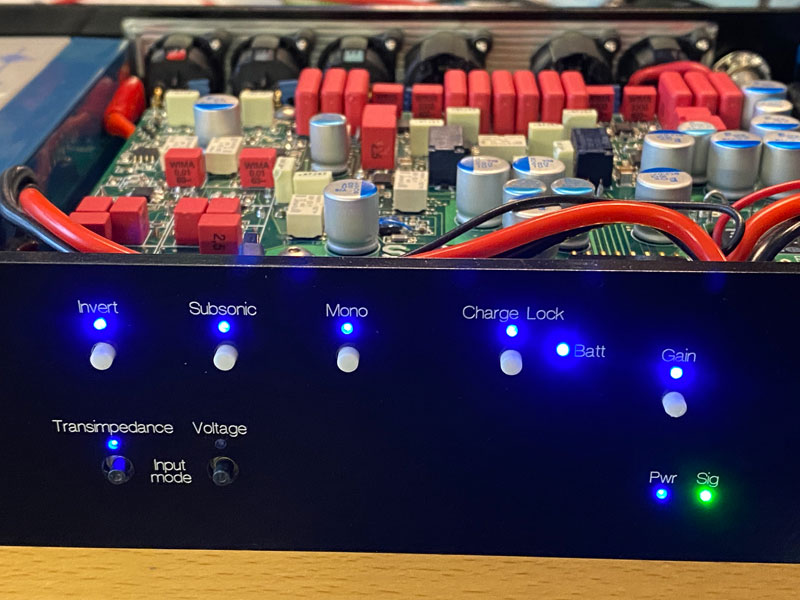
Seta L 2022 Edition with switchable Voltage/Transimpedance Mode, Polarity Invert, Subsonic Filter, Stereo/Mono.
We're now shipping the updated version of our very-highly-reviewed (Stereophile's former Editor John Atkinson even purchased his 2012 model review unit) Stereophile "Class A" and The Absolute Sound Editors' Choice, 5-megahertz-bandwidth, ultra low distortion Seta L phono stage. Now included is the ability to instantly switch between standard, voltage-mode and Transimpedance mode on the fly. Also included are new front-panel and Remote-Control-operable switches for absolute polarity, stereo/mono output, and 16 Hz subsonic filter.
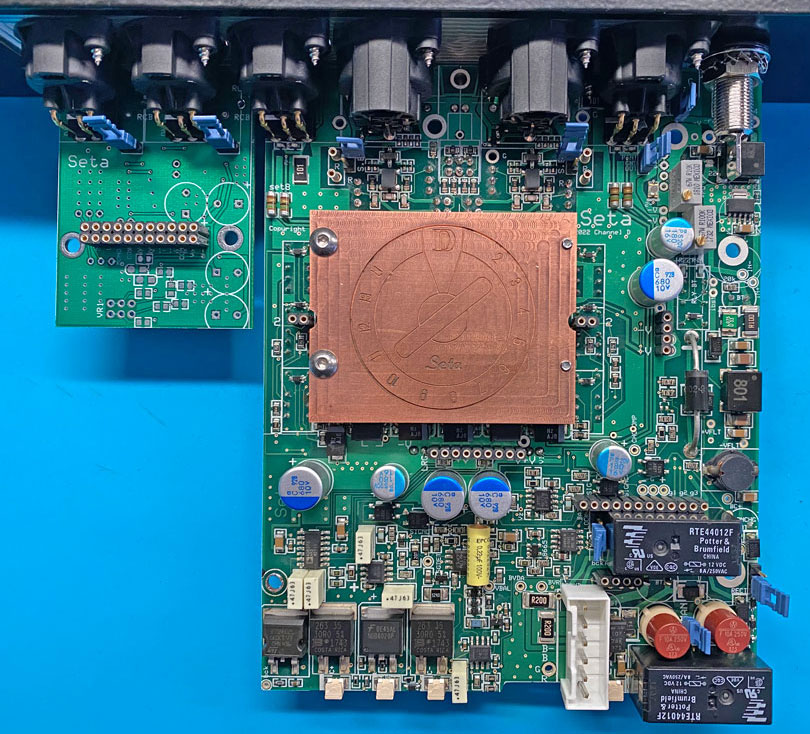
Seta L 2022 Edition Front End and Power Supply PCB with input circuitry in machined copper block. RIAA / signal processing daughterboard not attached.

Seta Model L 2022 Edition "overkill" Latching Relay Array, needed for highest quality Transimpedance / Voltage Mode switching. This daughterboard attaches to and is mounted directly under the input circuitry PCB.
August 2022
Software progress
We're still working hard on the updates to Pure Music and Pure Vinyl. We currently have four Apple Silicon computers in house for development. One of those is Apple's newest 20-Core CPU Apple Mac Studio M1 Ultra computer, driving three 4k monitors, shown in photo below of one of our development workstations.
Here is a marriage with 32-year-old technology: the Apple Extended Keyboard II from 1990, with its silky Alps Electric switches is regarded as one of the best designed computer keyboards ever produced (a difficult to find ADB adapter is needed to connect to the computer USB port, however). Mural on wall is an iPhone panorama photo of rainbow taken from Point Lobos State Reserve facing Monterey, California - inspiring because our Apple Silicon Macs are running Monterey OS, also!
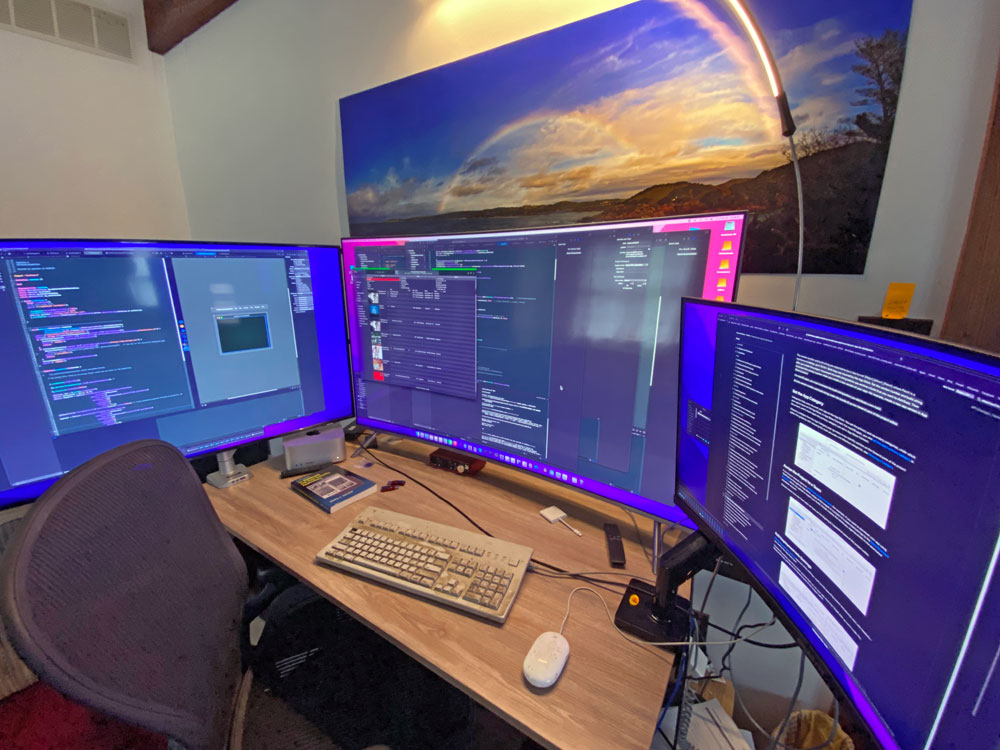
Apple Mac Studio M1 Ultra computer driving three 4k monitors, one of our workstations used for software development.
One of the sticking points, now nearly completely addressed, was Apple's unexpectedly sidelining their graphically-oriented Quartz Composer development tool, along with the underlying OpenGL graphics environment, in the Big Sur OS. Apple is no longer supplying Quartz Composer with the XCode software development package. We used Quartz Composer to create the visual portions of the metering in Pure Vinyl and Pure Music. Shown in the image below is the "patch" diagram that controls the metering logic. Besides what's visible here, there is additional underlying complexity in the patch's subroutines, which are colored blue in the image (and which also have their own underlying patch subroutines). This core UI code was originally created in 2008, thoroughly tested and debugged, and re-used successfully with only minor modifications since then.
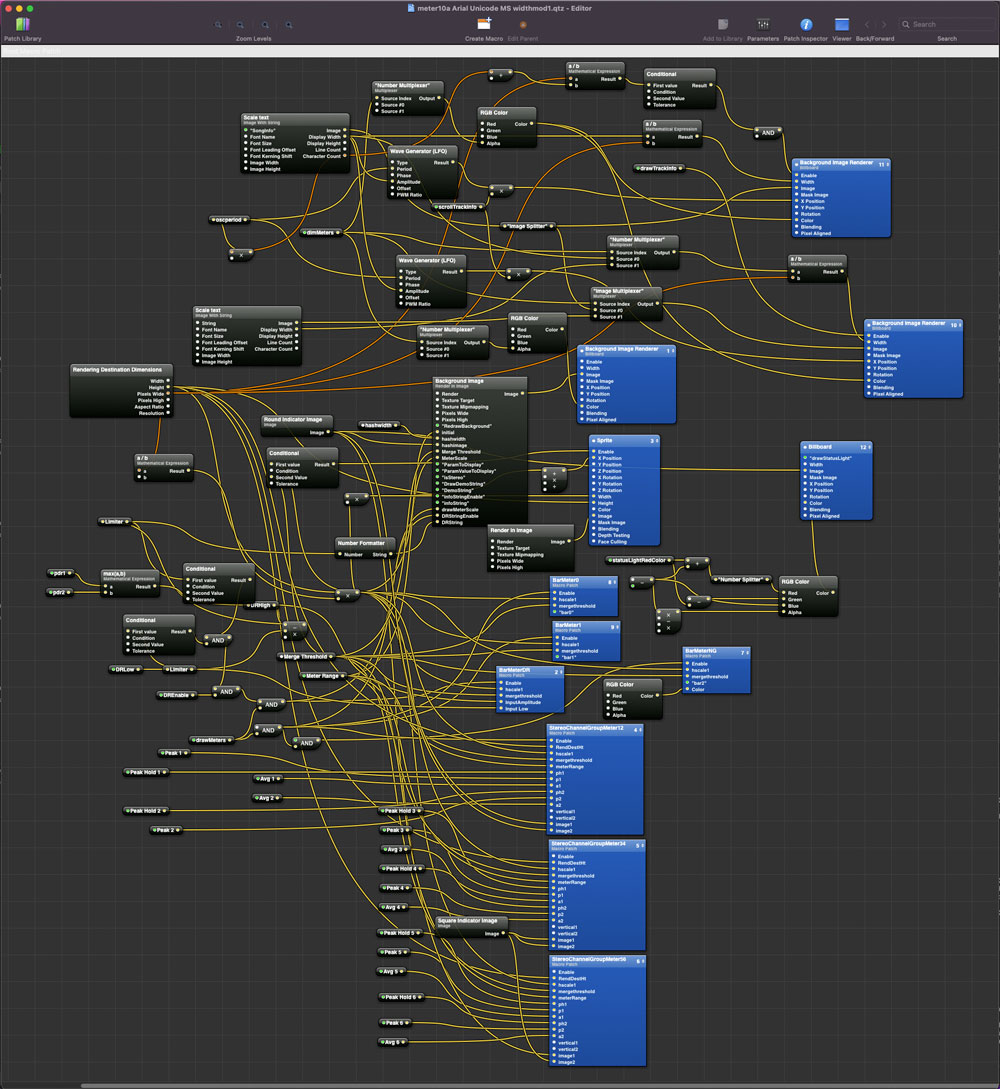
Quartz Composer patch diagram for original Pure Music / Pure Vinyl metering interface. API deprecated by Apple as of MacOS Big Sur.
To recreate the meters we had to learn a new programming paradigm from scratch: Apple's "Metal" graphics renderer, used mainly for game animation graphics programming and rendering. And instead of being able to create the meter layout graphically and intuitively using the Quartz Composer, by making connections graphically between routines, all of this had to be re-created using conventional, low level programming.
Think of spreadsheet software: an intuitive user interface for number manipulation, just plug in your numbers and formulas. That was like Quartz Composer for creating graphical animations and rendering. Now, imagine that instead of working at that high level, the spreadsheet user interface itself had to be re-created from scratch. That is what was required for designing the metering UI with Metal.
The silver lining to this cloud is that the metering CPU overhead has been reduced to a fraction of what it was previously.
The forthcoming Pure Music and Pure Vinyl are Universal software that run natively on Intel or Apple Silicon. OS requirement: Mac OS 10.12 (Sierra) or later.
August 2022
Stereophile's John Atkinson wrote: "Channel D's Lino C 3.3 is the best-measuring phono preamplifier I have encountered. Wow!"
Click to read the follow up measurements review in the July issue of Stereophile.

Lino C 3.3 with optional black powder coat finish.
Manufacturer's comment in the print edition of the July issue, not published in the online edition of the review - Editor:
It’s quite an honor to have John Atkinson, considering the sheer number of products he has encountered and reviewed over decades, write that our Lino C 3.3 "is the best-measuring phono preamplifier” he’s encountered. Michael Fremer had already written favorably about the sound quality of the Lino C 3.3 in the June issue, so how important is the measurement side of things?
As a thought-experiment, imagine two different phono preamplifier implementations using identical circuit components and, while we’re at it, the same amount of negative feedback. Now suppose that only by making certain choices in the layout, number of circuit board layers, component placement, trace routing, and power supply bypassing, that a substantially more linear phono preamplifier results.
That’s exactly what’s been done in the design of the Lino C 3.3. I have found that artful and rational choices in optimizing product design, resulting in demonstrably lower distortion - and better measurements - are more likely than not to also result in better sound quality.
Robert Robinson
Director of Engineering
Channel D
August 2022
Stereophile review of Lino C 3.3 by Michael Fremer
Michael Fremer wrote: "Lino C 3.3 offered ultratransparency; jet-black backgrounds; deep, tightly gripped, powerful bass; airy, fully extended highs free of etch, grain, or hardness. The soundstage was expansive with solid, 3D imaging—not surprising considering the quiet and wide bandwidth. The sound was fast, responsive, effortless. Macro- and microdynamics were impressive, producing forceful macro slam and subtle micro shifts when on the record."
"The Lino C 3.3's sonic performance seemed flawless in every category you could list."
Click to read Michael Fremer's highly favorable review in the June issue of Stereophile.
Manufacturer's comment in the print edition of the June issue, not published in the online edition of the review - Editor:
Thank you for the opportunity to provide a Manufacturers’ Comment, and Michael Fremer for his careful attention in reviewing the Lino C 3.3 phono preamp.
As an aside, since Michael mentioned our software products, I am painfully aware that new Apple computer compatibility updates are shamefully (to put it mildly) overdue. Our preamps have diverted this effort, but software has not been forgotten.
Michael covered the problem of electromagnetic interference (EMI) from modern cellular/WiFi traffic causing sound quality degradation.
EMI may enter via output, input, and direct radiative routes. “Backwash” from output connections is easiest to address, but input is by far the most challenging problem, given that a phono cartridge also acts as an antenna. Circuit modeling, prototyping and EMI testing, and using components only 10 thousandths of an inch wide resulted in an effective cellular/WiFi filtering solution.
Lino’s 4-layer circuit boards were designed with the shortest trace lengths and compact layouts, closing inductive loops for combating direct EMI. This also resulted in substantially smaller circuit boards with higher rigidity, reducing microphonic audio pickup. Optimal trace routing, visualizing electromagnetic fields and current return paths plus localized bulk bypassing of all active components using ultra low ESR/ESL capacitors conferred many benefits, confirmed through extensive listening evaluations.
Cellular/WiFi interference is a relatively new elephant in the room for phono stage design. By focusing on addressing this issue, we realized a big payoff in sound quality, especially for customers in EMI-dense urban locations.
Previous Lino C purchasers receive 80% credit upon return of an older Lino C for upgrading to the new 3.3 version.
Robert Robinson, Channel D
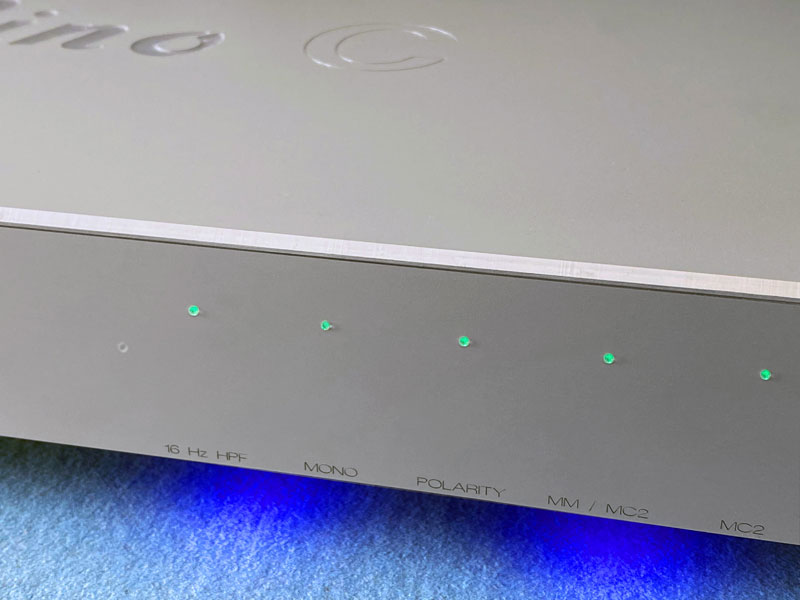
Lino C front panel.
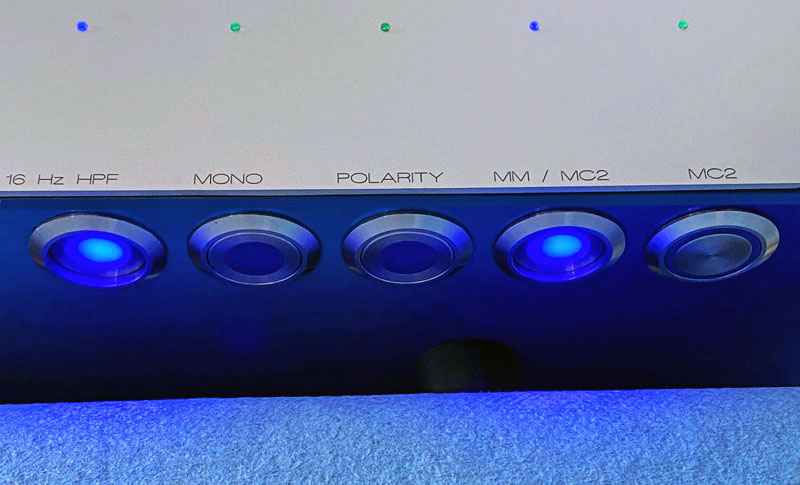
View of illuminated function switches under the edge of the front panel. Manual "lockout" mode overrides Remote Control for function, reflected by front panel LED indicator colors.
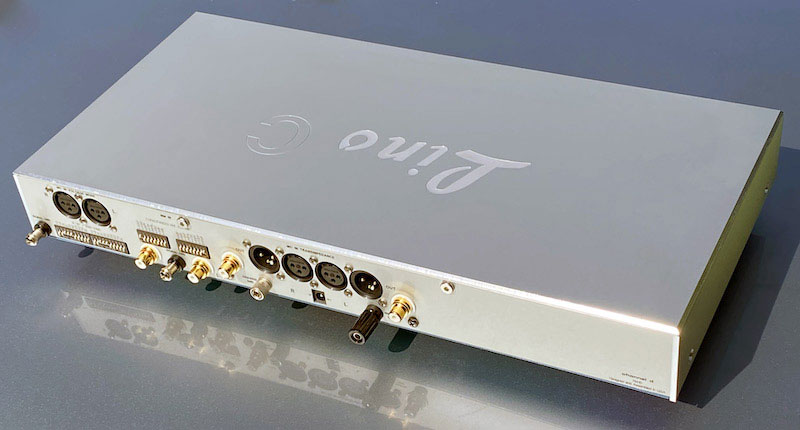
Lino C 3.3 rear panel with optional MM and voltage-mode MC inputs.
March 2022
The Role of the "Polarity" Button
We've received questions regarding the role of the optional Polarity button on the Lino C 3.0/3.3 (and also found on the Seta L20 mk2 and Seta Model L 2022 production).
The Polarity button doesn't invert the relative polarity ("phase") of the right and left channels, as when one speaker has its connections reversed. The Polarity button inverts the polarity of both channels.
Why is this important? Some music recordings are erroneously mastered with inverted absolute polarity (sometimes imprecisely called "inverted phase").
Here's a "thought experiment" example, using a drum and microphone for recording:
When the drum is stuck, a "compression" wave is generated, causing the microphone diaphragm to be pushed "in," the same way the sound wave causes your eardrums to respond.
However, sometimes the recording electronics can "have a wire switched around somewhere" inverting the polarity of the signal chain that causes the resulting recording of the drum response to be "sucked out" instead of pushed in. This can happen if the LP was cut on an LP mastering setup that inverts the polarity, for example.
For an actual example, we can examine four different release versions of the Fairport Convention LP, Liege & Lief (there are at least 105 versions extant, according to Discogs). Shown below are waveforms of the kick drum on the track "Tam Lin." In the waveform display, the right channel is red and the left blue, though the drum track itself is essentially recorded in mono.
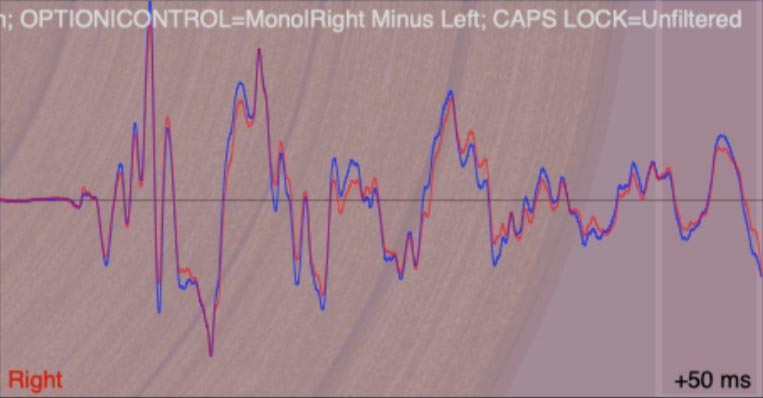
Release: 4 Men With Beards 4M159, 2008 Reissue (US)

Release: Island ILPS 9115 (unknown release year) (Blue Label) (UK)
The above two waveforms are nearly identical, with the "kick" transient polarity and amplitudes the same. Now, a different release:
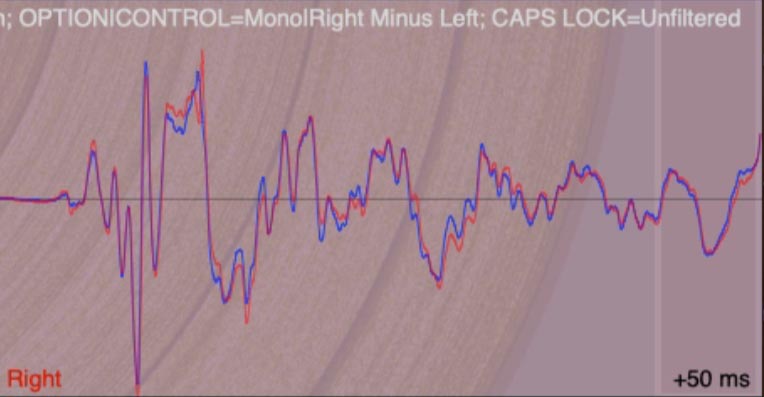
Release: Island 9115, 1970 Repress (Pink Rim Label) (UK)
The polarity of the kick drum is inverted compared to the first two; look at the initial transient with the largest "spike" pointing down, instead of up. The entire waveform looks "upside down" because it is inverted in polarity compared to the first two.
This problem is relatively easily corrected. Absolute polarity can be electronically inverted in a preamplifier with this feature (such as by using the Polarity button of the Lino C, Seta L20 or Seta L phono stages) or using digital audio computer software (with a digital audio recording). The operation also can be depicted visually by simply flipping the waveform image vertically:
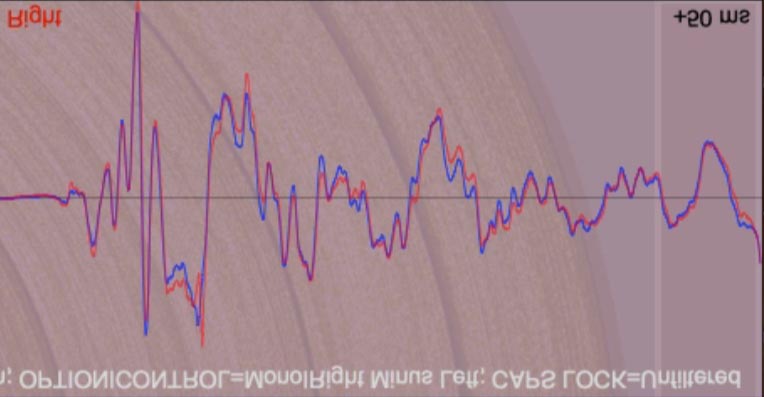
Release: Island 9115, 1970 Repress (Pink Rim Label) (UK) INVERTED POLARITY
The waveform above now resembles the first two. Finally, here's one more example using a different LP release:

Release: A&M SP 4257, 1986 Reissue(US)
The polarity is the same as in the first two and the "corrected" example, except the transients are altered in amplitude. This is probably due to different touch-up EQ or limiting done during LP mastering, or it could indicate that the LP was mastered from a CD-quality source; the first CD format version of this album happens to have been released just a year later.
So, what is the correct setting of the Polarity button? There is no simple answer to that question. One can digitally sample the LP and examine the waveform to evaluate (not necessarily a simple thing to do) whether the recorded polarity is correct or not. But lacking the equipment needed for that process, in general, listening to a recording with different absolute polarity settings will reveal the correct setting, especially with acoustic percussion, brass, or plucked instruments, which will lack "snap" and sound slightly muffled and dead when played back in the wrong absolute polarity.
Click to see an article published in Positive Feedback Online that covers this subject in more detail.
A quote from the article: "Wrong polarity, when isolated, is obvious to everyone."
February 2022
Lino C 3.3 Transimpedance Phono Preamplifier Updates
The latest enhancements to the Lino C 3.x phono stage are being incorporated into shipping product, and include:
1. Optional Wireless Remote Control for controlling the High Pass Filter, Mono and Polarity functions. This can be retrofitted to any Lino C 3.0.
2. Improved electromagnetic interference (EMI) rejection, based on modelling improved EMI networks for rejecting ultra high frequency GHz+ (cellular and WiFi) interference, plus testing and selecting components, designing and creating prototypes and testing in conjunction with recently acquired EMI testing apparatus.
This is necessary in our modern world of EMI "soup." EMI causes sound quality degradation such as haze, lack of definition, and edginess in the midrange and treble.
This corresponds to the observation that audio systems often sound better in the very early hours of the morning. This has usually been ascribed to utility mains power being putatively "less polluted with electronic noise" at that time. However, there also is substantially less cellular and WiFi traffic, because most cellular and WiFi users are asleep (and in the "old days," EMI from television and radio diminished in the middle of the night because broadcast stations went off the air). The reality is that audio systems sounded better at night not necessarily because of cleaner utility power, but because radio frequency EMI was greatly diminished at that time of the night.
The problem has grown worse with the increasing pervasiveness of WiFi and cellular interference, which are substantially more difficult to address in electronics than EMI from old-style broadcast AM/shortwave/FM radio and television.
It's certainly better to design effective EMI rejection into components instead of causing users to wait until 3 AM or move far away from cellular transmission and WiFi networks for maximum listening enjoyment. Unfortunately, it's not trivial to design and implement circuit designs and EMI rejection filters that are effective at modern, gigahertz EMI frequencies.
Traditional "through-hole" components are completely ineffective at these frequencies because of their physical size. This is related to a concept called "loop area" which refers to the path taken by signal currents through the circuit components, circuitry, and circuit board layout.
Compared to modern surface mount components, the size of the body of the component and connecting leads results in substantial loop area and self-inductance in the high megahertz to gigahertz-plus range of cellular and WiFi. At these frequencies, through-hole component behavior deviates substantially from "ideal," and just "does not work."
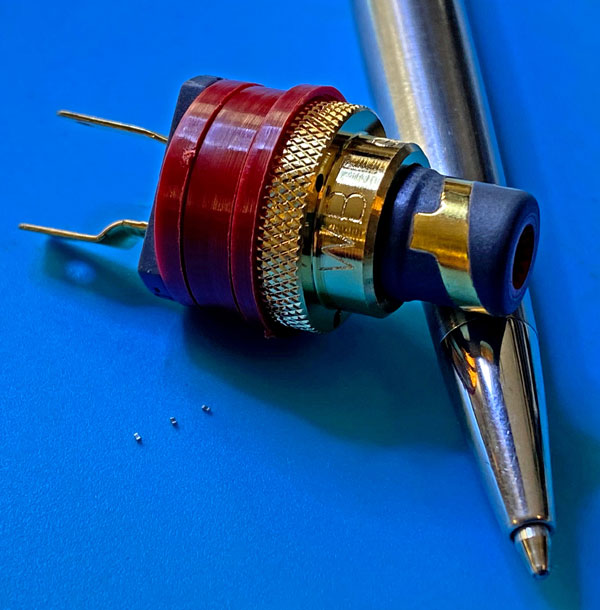
Tiny, surface-mount components used for cellular and WiFi EMI input filtering network in the Lino C 3.3, next to RCA panel jack and ballpoint pen tip
Using SPICE based models to simulate non-ideal component behavior and using extremely tiny, ultra low stray inductance (ESL) surface mount components, new networks were designed that are extremely effective at blocking broadband, low MHz through to GHz and higher frequency range radio generated EMI. The modelling phase of design was especially important, by accounting for non-ideal component behavior. Without proper modelling, designing by trial and error more often than not results in a "filter" that actually amplifies EMI through unanticipated resonances, making things worse than doing nothing at all.
The performance of the EMI rejection incorporated into the Lino C 3.3 was validated by subjecting actual phono cartridges mounted on tonearms and connected to the Lino 3.3 to very high levels of focused electromagnetic interference, and by seeding updated units to customers in urban areas known for having extremely high densities of cellular and WiFi traffic - with resounding success. The new improvements have reduced the EMI susceptibility by over a factor of 100 compared to previous Lino V1.0 and V2.0 versions.
3. The Off The Grid flag port now sets the output to 0 volts instead of 5 volts when the Lino is in battery charging mode. This makes it easier to set up and use the Automatic OTG feature / IoT relay because the relay's normally closed utility socket can be used instead of the normally open socket, which required a startup "priming" step.
Customers with older Lino C V1.0 and V2.0 models can trade in their older Lino for 80% credit of their Lino C purchase price towards a Lino C 3.3 upgrade (the top chassis from the existing Lino will be reused in the upgrade).
November 2021
Capital Audiofest: Channel D Director of Engineering - presentation on Transimpedance phono stages
Channel D's Director of Engineering was invited to give a talk on transimpedance phono stages to a lively (and masked) audience at the recent Capital Audiofest!
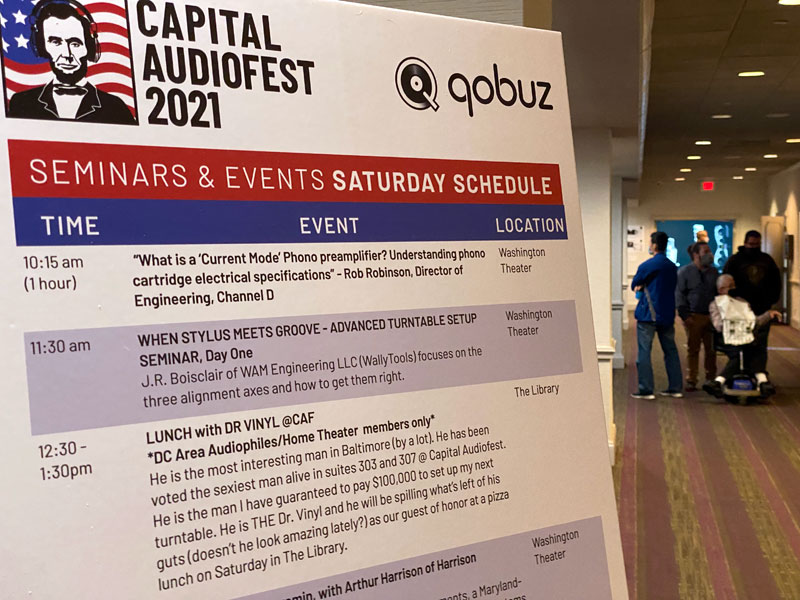
August 2021
NEW! Lino C 3.0 Transimpedance Phono Preamplifier
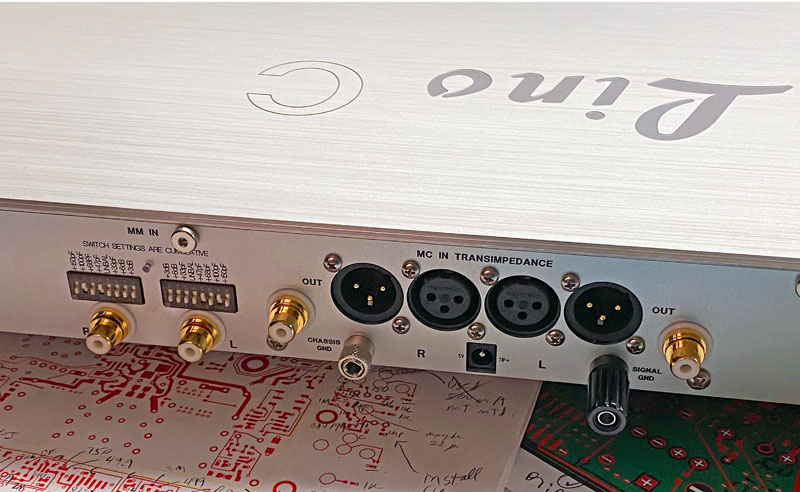
View of Lino C 3.0 rear panel shown with optional Moving Magnet input
Over one year in development, a new addition to our Lino C phono preamplifier line is now available.
The biggest changes include substantial improvements to all circuitry plus additional features. The Lino C 3.0 can be configured with externally selectable 16 Hz high pass filter, stereo / mono, and polarity invert switches, plus up to two additional turntable / tonearm inputs, each with their own separate and optimized input circuitry.
Feature and input selection are via elegant soft deep blue illuminated machined panel mounted buttons concealed under the front edge of the chassis.
The optional inputs may include one moving-magnet (with adjustable capacitive loading, gain, and balanced / unbalanced settings) plus one low-output moving coil (an extra Lino C 3.0 transimpedance input OR a Seta L front end configured for transimpedance or voltage mode, the latter also having external resistive loading switches) for up to one or two extra inputs.
Front panel feature selector LEDs with engraved function labels are optional depending on whether one prefers a "clean" appearance to the front panel, or be informed with subtle indicators showing blue for feature off or green for feature selected. These front panel LEDs respond to ambient light levels and automatically dim if the room lights are dimmed.
The Lino C 3.0 may be ordered in a "stock" configuration and any of the above features / inputs added later (user is responsible for shipping, and a $149 service fee will be assessed).
Other new features include a Standby mode that powers down the internal electronics and indicators except for battery charging; Galvanic Isolation Disable button that is useful if the battery is deeply discharged (extending control of a function that formerly used internal DIP switches); and a Shut Down button that completely shuts down the Lino C, which previously required unplugging the external power adapter.
One of the most significant new features is a new High / Low Damping setting, allowing optimizing the Lino C for high impedance MC cartridges (up to 40 ohms). (This also is available as a new option for the Lino C 2.0.)
The Lino C 2.0, which was reviewed extremely favorably by Stereophile and The Absolute Sound, will continue to be offered with its original configuration and pricing.
Customers with Lino C (1.0 or 2.0) preamplifiers may upgrade to the 3.0 version and receive 80 percent credit of their original purchase price. For the upgrade, all internal electronics will be replaced plus the back and front panels (if needed to support any additional options ordered), and the bottom chassis panel updated with the 3.0 livery and new Damping feature. Customers with Seta Piccola preamplifiers (the Piccola has a single input, configurable for MM/MC) will likewise receive the same credit on returning their Piccola and upgrading to a Lino C 3.0 purchased with at least the optional additional MM input configuration.
At this time both the Lino C 2.0 and 3.0 will be offered in a standard smooth, natural clear anodized aluminum finish. The previous standard brushed aluminum is now optional and has limited availability due to supply chain constraints. A glossy black powder coated chassis option is also available.
We'll be updating our website with additional information about the Lino C 3.0 soon, as well as posting the new Lino C 3.0 user manual.
July 2021
jamais deux sans trois
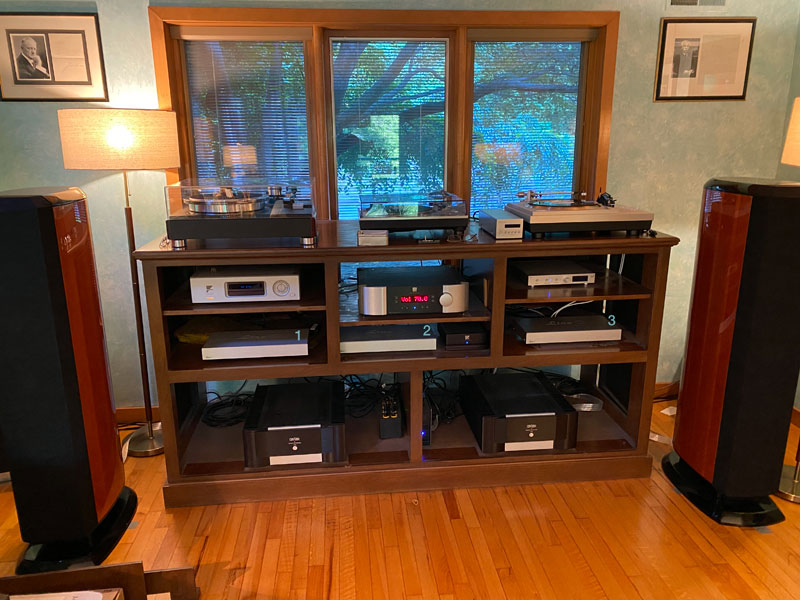
One of our Lino C users was so tickled by the performance of his Lino C that he purchased not one, not two - but three Lino C phono stages to use with his three turntables!
June 2021
Software updates for Pure Music® and Pure Vinyl™
We've successfully tested development builds against the developer Beta of MacOS 12 (Monterey) and the Apple Music application included with the OS installation. There is still work to be done, but any extra effort needed for Monterey compatibility appears to be negligible. Preliminary testing also indicates that the application CPU footprint is even smaller than in Big Sur, and this is fantastic news for performance.
We're also excited about a new feature that will affect Pure Vinyl users, now available in MacOS 12.
Apple purchased the Shazam music recognition service a few years ago, and at WWDC this week, Apple announced that it is opening up the Shazam music recognition framework for developers. The Shazam music database is one of, if not the most, comprehensive music databases available. What this means is nearly instantaneous song / album recognition and automated retrieval of metadata (artist, album, etc.) just by playing an LP!
March 2021
Big Sur software updates for Pure Music® and Pure Vinyl™
Work continues on updates for the latest MacOS versions for our software. We have had a new M1 CPU "Apple Silicon" computer in house for several months. Development builds of the software are running natively on the M1 and Intel Macs and delivering impressive performance.
Most notably, critical sections of UI code have been rewritten from scratch with an eye towards reducing the CPU footprint on both the M1 and on older, Intel processor computers. Of course, reducing and levelling the CPU footprint has always been a key design philosophy, since it correlates directly with playback quality. "Bits are bits," yes, except for real-time processes like audio playback which involve another factor: time. Namely, the orderly and carefully regulated delivery of the audio stream to the DAC.*
CPU activity directly affects computer power demand. This can be easily verified with a consumer watt meter such as the "Kill-A-Watt." Unless computer power demand remains low and as steady as possible, fluctuations in CPU / computer power demand can induce noise on the electrical utility line. This noise affects the stability of the sample clock low/high transition comparator, causing uncertainty (clock jitter) in transition timing, causing "haze" and a loss of definition in musical presentation.
Reducing CPU footprint requires painstaking and time-consuming code optimization; it can take many days (and nights, literally "dreaming in code") of testing, optimization, and re-testing even for seemingly small, but critical, sections of code. Then, improvements require extensive testing inside the whole software ensemble to insure there are no unanticipated side effects. Rather than performing a quick "port" to the new OS, we've taken the opportunity to reconstruct the underlying foundation. There are dramatic improvements coming in our updates, unlike products which seem to have other priorities than CPU footprint minimization, even requiring purchasing a new computer to support their bloated CPU requirements. This illustrates a critical and important difference in design philosophies. The CPU requirements of our coming updates will actually be decreased - not increased; by doing more with less. We do not have a target delivery date at this time, but can definitely say that the wait will be worth it. As we get closer, we can confirm that the released product will be a universal binary with full native support for Intel and Apple Silicon CPUs.
There is a possibility that the minimum supported OS may need to be bumped up to MacOS 10.12 (Sierra) rather than MacOS 10.11 as noted previously. We are trying to keep the minimum supported OS version lower to support users with older computers. This makes development slightly more challenging, requiring working around deprecated APIs, but something may have to give. If you are a Pure Music or Pure Vinyl user who needs support for MacOS 10.11, please let us know soon.
*Note: as used here, "DAC" refers to the circuit-board and chip level final destination of the digital audio stream before conversion to analog. That is, the internal sub-components comprised of the sample clock managing the transfer of data plus the delta-sigma converter chip (or resistor array of a ladder DAC) which make up the heart of a digital-to-analog audio "DAC" component connected to your computer / audio system. This also includes all-in-one, turn-key audio servers, which are subject to the same kinds of issues. The troublesome noise is imposed on the circuit-board-level power supply and ground reference for the sample clock / DAC chip, and can be common-mode (imposed on power supply and ground reference together) or differential (imposed on one or the other); not including noise in connections between the computer and the DAC component or analog signals, though these also can contribute jitter-inducing noise.
February 2021
Pure Vinyl 5 Maintenance Update
We've released a Pure Vinyl 5 maintenance update (5b33) addressing Internet track lookup issues resulting from the reconfiguration of the lookup page. We recommend all Pure Vinyl 5 users adopt this update. Note: this is not a compatibility (MacOS Catalina / Big Sur) update, which is still in progress. (But the core code for this maintenance update was actually written and tested on a new M1 CPU Mac running Big Sur / MacOS 11.2, before transferring the changes to the older development stem for release.)
November 2020
Seta Model L now includes Current Mode (Transimpedance) operation!
The Seta L now can be configured for standard voltage mode - or current (transimpedance) mode. This capability is now included in currently shipping product. Can be retrofitted to existing Seta Model L phono stages manufactured after April 2016 (older units addressed on a case by case basis). Price is $995 plus shipping. Contact us for more information on upgrading your existing Seta L phono stage.
October 2020
Stereophile Review of Seta Model L and Pure Vinyl 5 is online
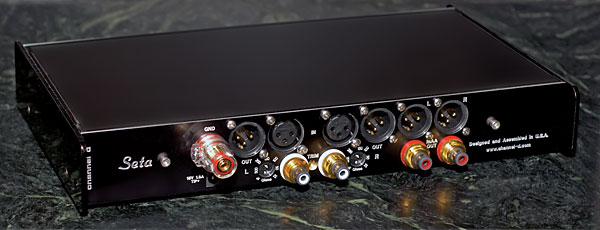
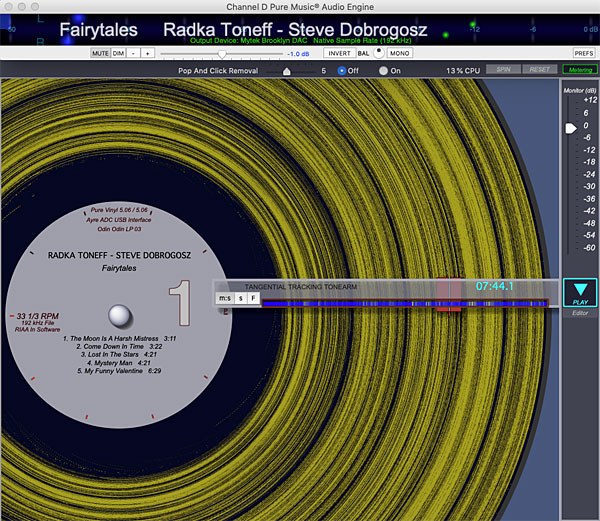
John Atkinson wrote a very detailed and complimentary follow-up review of our Seta Model L MC phono preamplifier which he purchased from us, and described using our Pure Vinyl 5 software in conjunction with the Seta. Read everything John Atkinson had to say in his review published in the November 2020 issue of Stereophile.
Note: there are pricing and technical (namely the listed gain settings are 12 dB too low) errors in the article, that were not corrected despite responding with the needed corrections to Stereophile Editor Jim Austin's email requesting proofreading the article for errors. Please see this page for pricing and technical specifications.
September 2020
Pure Vinyl 5 Maintenance Update
We've released a Pure Vinyl 5 maintenance update (5b32) addressing an Unexpected Quit during automatic track location in certain types of recordings. We recommend all Pure Vinyl 5 users adopt this update. Note: this is not a compatibility (MacOS 15) update, which is still in progress.
September 2020
Lino C Review published in The Absolute Sound
"...completely non-fatiguing, summoning up a sense of serenity around musical playback ...each time I spun the album, I ended up playing through all three movements to sustain the enjoyment this music delivers—that is the mark of a good phonostage."
"Overall, the Lino C 2.0 is a winner of a phonostage at its $2699 price, with features that are not usually available in this range of products (internal high-current AGM battery, current-mode input, meticulous circuit layout, surface-mount components to produce low-noise, direct-coupling, and balanced operation available from input to output)."
Read everything Andre Jennings had to say about our Lino C 2.0 phonostage in his review published in the September 2020 issue of The Absolute Sound.
August 2020
Lino C latest improvements
In the sidebar accompanying the measurements of our Lino C 2.0 phono preamplifier in Stereophile, John Atkinson stated the Lino "featured superbly accurate RIAA equalization" - then continued to elaborate further, saying it was "the best I have measured." That's saying quite a lot, considering the sheer number of measurements of phono preamplifiers he has made since becoming the Editor of Stereophile in 1986, and continues making as Stereophile's Technical Editor.
As it happens, the 2019-manufactured Lino C provided to Stereophile for measurements, while well within our specification of +/- 0.1 dB RIAA accuracy, was actually on the "loose" side of accuracy typical for the Lino C. Since the review, we've continued to improve the performance of the Lino C, including refining its already high RIAA accuracy.
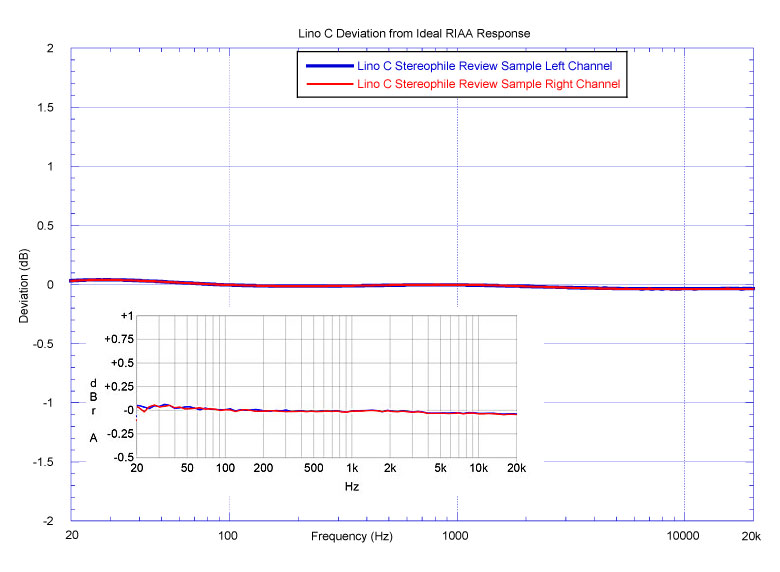
The overlay (adapted from the Stereophile review) seen on the above graph compares John Atkinson's RIAA equalization accuracy measurement of the Lino C with our own measurement of that same unit. (The RIAA equalization accuracy of every single phono preamplifier we manufacture is measured and confirmed as part of our quality control procedures.) Stereophile's and our own measurements are in extremely close agreement.
Now, let's incorporate RIAA accuracy measurements of six consecutive production units of the Lino C manufactured in 2020, while keeping the same graph scale:
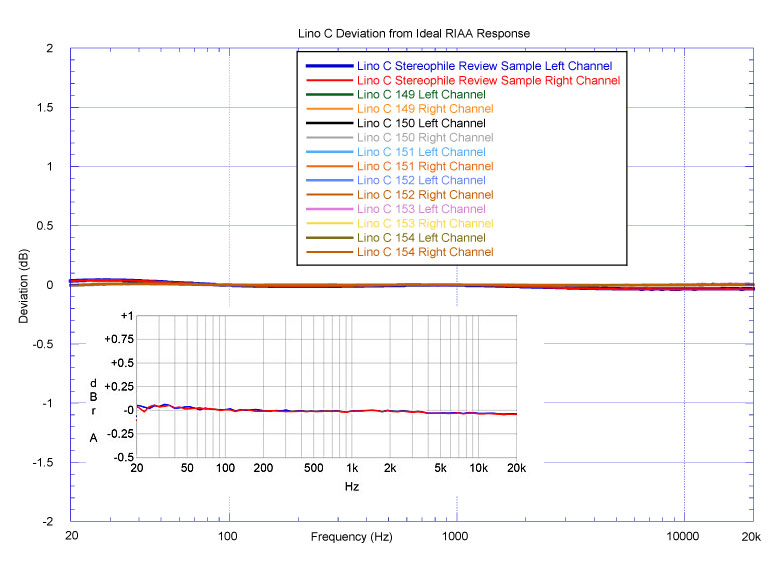
It's possible to discern the measurement of the Stereophile sample from the others at the scale used in the graph, though all of the measurements are closely grouped together.
Now, let's magnify the graph scale substantially:
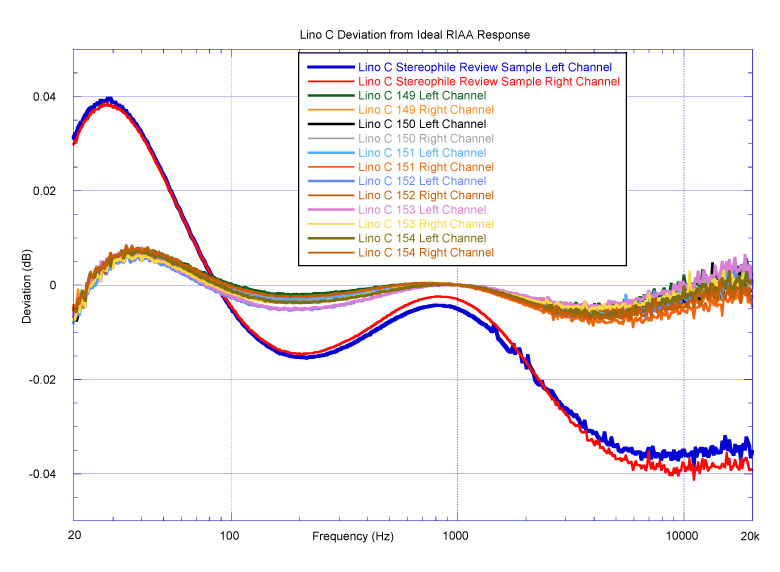
In case it seems like there is a lot of "waviness" in the curves, keep in mind this is at a super-super-extreme magnification level, where even the tiniest of flaws (including measurement noise) become evident. Imagine a very close shave: super smooth to the touch, though when examined under a microscope would resemble a bristly, rough landscape. (There is no data smoothing in the graph; the frequency sweep starts at 20 kHz and changes to a much slower and lower noise setting below 2 kHz).
All of the measurements shown above are well within our 20 Hz to 20 kHz, +/- 0.1 dB RIAA accuracy specification. The graph range is from -0.05 to +0.05 dB, a magnification of 40 times compared to the previous two graphs. The Stereophile review sample had RIAA EQ accuracy better than +/- 0.04 dB, and these production Lino C units matched the standard RIAA curve to within an even more astonishing +/- 0.01 dB, 20 Hz to 20 kHz!
The graph demonstrates two things:
- The RIAA accuracy of recent production Lino C is even better than Stereophile's 2019 review sample that John Atkinson proclaimed as "the best I have measured."
- The unit-to-unit consistency of Lino C phono stages, while comfortably within our published specifications before, has become absolutely outstanding.
Capacitors used are hand selected and painstakingly matched to within a high tolerance level, and resistor values are trimmed to exact manufacturing specifications. Note: this accuracy persists over product life and also over temperature variations. Capacitors and resistors used are the most stable types available, and temperature coefficients of the resistors are chosen to complement those of the capacitors: the negative TC of the capacitors is balanced by the positive TC of the resistors selected for the RIAA network, resulting in stable RIAA network performance over temperature.
To the best of our knowledge, no other phono preamplifier on the planet comes anywhere close to this degree of RIAA equalization accuracy. (This, and other improvements found in current production are outlined on the Lino C product page.) Why go to so much trouble? Although many factors contribute to the sound quality of a phono stage, isn't having better accuracy and fidelity in reproducing the music from an LP recording preferable to having less? That is our goal and philosophy in designing our products, and reflects on our attention to detail in every aspect of design - and the successful execution of the design.
April 2020
Pure Vinyl 5 Maintenance Update
We've released a patched Pure Vinyl 5 update addressing an Unexpected Quit that results when using the Internet Track Lookup feature. The recent proliferation of third-party links and advertising on Discogs causes a memory and CPU usage overload several minutes after performing the lookup. We urge all Pure Vinyl 5 users to adopt this update. Note: this is not a compatibility (MacOS 15) update, which is still in progress.
April 2020
Lino C 2.0 honored with Stereophile Editors' Choice Award (Class "A" Phono Preamplifier)
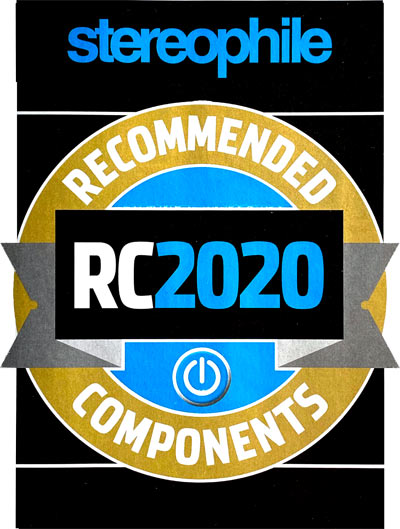
March 2020
Michael Fremer's Stereophile review of the Lino C 2.0 is online
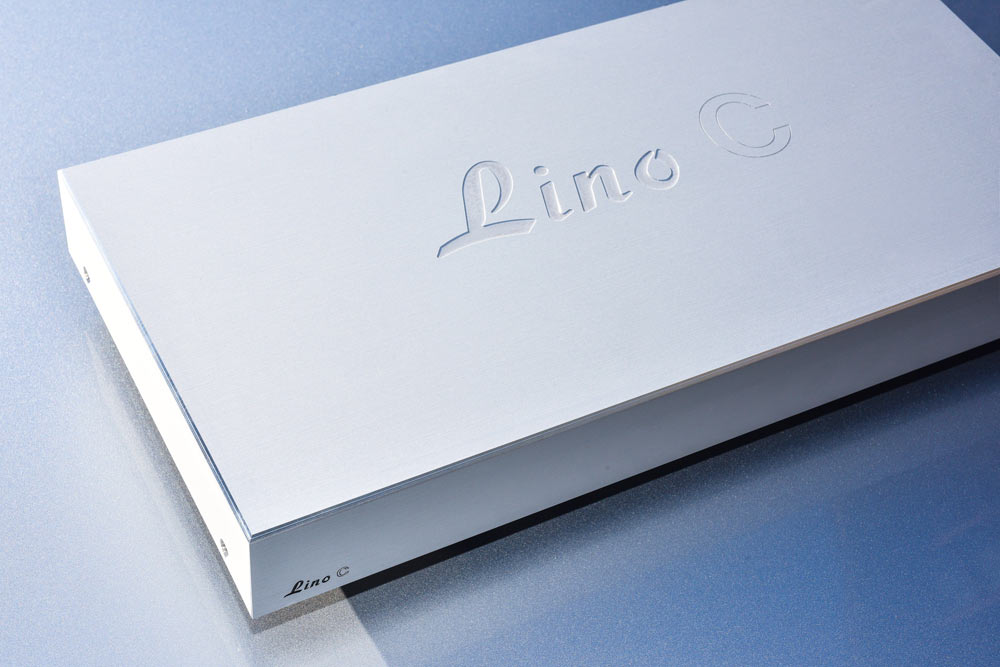
Michael Fremer's extremely favorable June 2019 review of the Lino C 2.0 has been posted on Stereophile's website, along with measurements by John Atkinson showing its outstanding performance, including describing the RIAA accuracy as "the best I have measured." Coming from John Atkinson, that is saying a lot!
March 2020
User review of Lino C 2.0 on YouTube
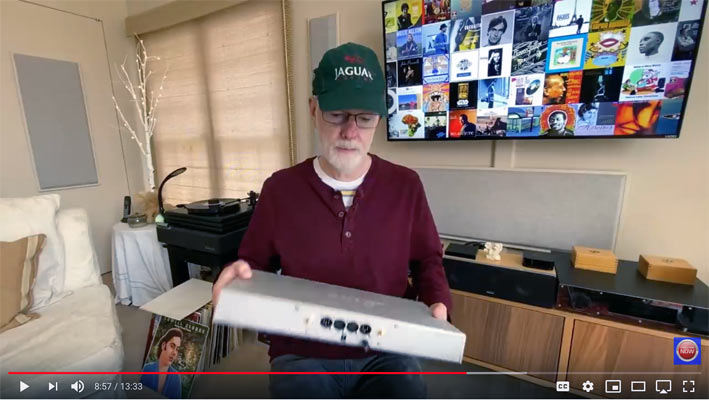
Hosted on Steve Guttenberg's Audiophiliac YouTube Channel, Mark Block conveys his positive impressions of the Lino C 2.0.
March 2020
Measurements and the audibility of amplifier / preamplifier distortion: Part 1
We’ve noticed comments from certain manufacturers claiming that, below a certain threshold, amplifier distortion is inaudible and aspiring to reduce it further in an amplifier is useless.
The folks involved often cite anecdotal listening tests backing up this claim, purportedly indicating that in listening tests, people cannot detect distortion below such-and-such a level. Perhaps coincidentally - the cited threshold also happens to conform to the specified distortion level of their product…
There are a few things to consider here:
1. Distortion in loudspeakers is an order of magnitude or more greater than distortion in an amplifier. If loudspeaker distortion is so much greater, then why does reducing amplifier distortion matter? We’ll address this at the end of this post.
2. We’ve never seen (or observed someone making the above claim give) a citation of a solid reference of the origin of distortion threshold audibility tests. What would be most interesting about these tests is the protocol used in the selection of test participants.
It’s not difficult to imagine that the outcome would be substantially different depending on if the participants were chosen from the general population pool, or if they were chosen from a pool of careful, experienced listeners: golden ear audiophiles, who have trained their listening skills to detect tiny nuances in sound quality.
This would be akin to conducting a tasting test to determine if the difference between cheap and expensive bottles of wine is discernible. Any long-term, experienced wine enthusiast would have no trouble accepting the idea that a casual wine drinker would be considerably less likely to discern between inexpensive wine and small-batch (controlled, low vineyard yield), quality wine from boutique wineries. Taking this further, an experienced wine enthusiast is demonstrably able to discern between different high quality wines relatively easily (the pinnacle of such folks aspiring to become certified sommeliers), whereas the general public would be much less likely to do so.
Likewise, a “distortion threshold” listening test would need to be conducted with participants from a pool of people representing the pinnacle of listening skills and acuity - since the same people would also be interested in high end products delivering performance greatly surpassing consumer level electronics.
Absent confirmation of the existence of such evaluations or citations of these type of evaluations, one starts to begin to wonder what is to be gained by making the claim that below a certain level, reducing the distortion of an amplifier is meaningless? Or, that measurements are of extremely limited importance?
Here’s something that comes to mind:
One hot summer's day a fox was strolling through an orchard till he came to a bunch of grapes just ripening on a vine which had been trained over a lofty branch. ‘Just the thing to quench my thirst', he thought.
Drawing back a few paces, he took a run and a jump, and just missed the branch. Turning round with a One, Two, Three, he jumped up, but with no greater success.
Again and again he tried after the tempting morsel, but at last had to give it up, and walked away with his nose in the air, saying: ‘I am sure they are sour.’
The fox thinks itself nimble and able to easily jump and reach the grapes, but upon discovering that it wasn’t as nimble as it thought, disparages the goal (grapes) - rather than admitting it simply couldn’t reach them.
Consider the possibility that a product designer, upon realizing that their aspiration to design but failing to design a product that has extremely low distortion (it’s not easy!), might "sour grapes rationalize" and denigrate the desirability of low distortion in favor of a less stringent benchmark - and perhaps even go further by also denigrating low distortion as something that somehow interferes with sound quality.
But does creating a low distortion amplifier adversely affect the sound quality? A corollary to the argument made by a designer seeking but failing to design a low distortion preamplifier would seem to be that one cannot have the “low distortion cake” and eat it too. And, almost always, a nasty thing called “negative feedback” is invoked in describing how distortion is reduced - as if that were the only way to accomplish it!
In Part 2 we’ll discuss methods of reducing distortion in a preamplifier. Hint: “negative feedback” is really a very, very minor part of the tools at the disposal of a competent amplifier designer for reducing amplifier distortion.
Finally - what about loudspeakers? The argument that distortion is greater in loudspeakers than in amplifiers and that amplifier distortion is therefore unimportant assumes that loudspeaker distortion somehow masks the distortion of an amplifier. It does not - it passes it along in sum, and though loudspeaker distortion is greater, the characteristics of amplifier distortion impart a different signature upon the sound quality.
Certainly, different loudspeakers sound different. Part of the difference is due to different levels of distortion, part due to tonal balance, part due to dispersion, part due to the temporal coherence of the design, for example. But after living with and becoming accustomed to a certain loudspeaker, one will, over an extended time, acclimate oneself to and “tune out” its nonlinearities - after that time, any upstream, quite minor changes to the sound quality would be discerned immediately. It’s as when living in a city, one “tunes out” the background commotion of traffic noise, while remaining sensitive to detecting any unusual sounds or events that aren’t part of the accustomed background.
By the same token, can one become used to the distortion from an amplifier or preamplifier? Sure, for certain kinds of amplifier distortion: harmonic distortion in particular, but not intermodulation, which causes listening fatigue and discomfort. Changing to an amplifier with substantially lower distortion can be relevatory in terms of system resolution and less congestion, especially in more complex ensemble recordings.
As a “tone control,” harmonic distortion in an amplifier can lend richness to simple arrangements or solo instruments, but a dense instrumental mix turns to mush, like adding too many different spices to food. It is fatiguing. Extremely low distortion is to audio what having the best, freshest ingredients are to the taste of food, conveying ease to the music and eliminating listening fatigue, making you eager to "crank up the volume" and thoroughly enjoy your sound system.
March 2020
Update: Catalina compatible software updates, COVID-19 measures
Our hearts and thoughts go out to everyone regarding the impact of the COVID-19 pandemic. We are all quite well, and sincerely hope everyone reading this is the same.
We have responded to this situation regarding our hardware products by designating a "hot room" area for incoming shipments, spraying packages with bleach solution, then disinfecting the contents with alkyl-benzylammoniumchloride wipes. Purely as a precautionary measure, selected items are sprayed and cleaned with 100% isopropyl alcohol and then exposed to germicidal UV-C light. Our operations and shipping and supply chains have remained intact and viable.
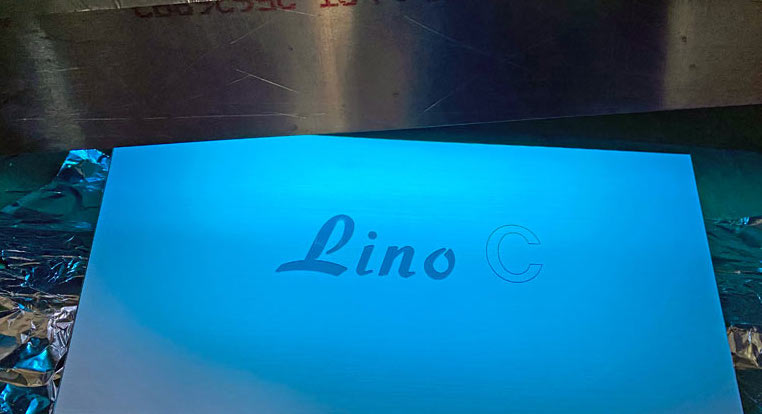
As communicated to our customers in email responses to questions regarding our software products, we’re still working on the Catalina compatible versions of our software. Updates are running behind schedule. There is more work to do. For instance, during this process, replacing a single API that seemed to be a straightforward operation that we anticipated taking at most a couple of hours of work ended up taking nearly 5 days of additional coding, testing - and optimization. Which is a way of saying that the release could happen soon, or take longer. There are no insurmountable obstacles. It is just a matter of the work taking time to complete. That being said, from our testing so far, the updates for Pure Music and Pure Vinyl substantially eclipse previous versions in terms of performance. Updates to our other software products will follow.
We thank you for your continued patience and understanding, and wish everyone the best during these trying times.
February 2020
Notice of OS Support Change
Notice is hereby given that upon release of Catalina (MacOS 10.15) - compatible versions of our software products, support for OS versions older than MacOS 10.11.6 ("El Capitan"), initially released in 2015, will be discontinued. Updated products will require MacOS 10.11.6 or later to run.
Minimum physical installed computer RAM will increase to 8 GB, with 16 GB or greater preferred.
January 2020
Catalina / MacOS 15
Per our previous posting, we had anticipated releasing Catalina compatible updates for our products by this time, but are running behind schedule. We thank everyone for their continued patience.
As posted previously, a short-term work-around involves making a dual-boot system:
Partition the startup drive and install Catalina on the new partition, using the previous OS partition for audio and the new one for tinkering with Catalina. If you have a modern Mac with SSD running High Sierra (MacOS 13) or later, drive partitioning under APFS format is nondestructive. Drive space can be recovered later by deleting the old partition. With APFS, partitions draw from the same pool of space on the SSD, so partitions are automatically resized adaptively. Rebooting a modern Mac with an SSD takes just a few seconds. Alternatively, restore a previous (any OS before Catalina) computer backup to an external SSD, and boot from the external drive.
November 2019
New York Audio Show - Channel D exhibit room judged Best of Show Runner Up
Out of the many rooms at the 2019 New York Audio Show, the Tweak Studio / T+A Electroakustik / Channel D exhibit room was honored by Part-time Audiophile with a Best of Show - Runner-Up: "very involving sound" with our Lino C 2.0 transimpedance phono stage.
November 2019
Channel D at the New York Audio Show
Featuring our Lino C 2.0 transimpedance phono stage, Part-Time Audiophile's Steve Marsh said: "The system beautifully captured the soul-penetrating power of [Maria Callas'] voice and proved to be one of the highlights of the show for me."
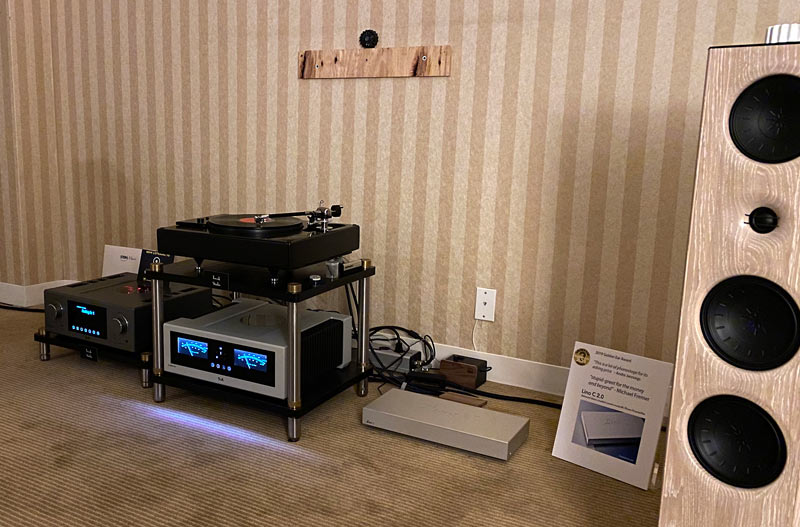
November 2019
Lino C 2.0 Phono Stage at the New York Audio Show
We'll be demoing (in conjunction with T+A, SOTA Turntables and Tweak Studio) our Lino C 2.0 at the New York Audio Show, November 8 through 10, at the Park Lane Hotel in New York City. We're in Room 709 - stop by to have a listen!

November 2019
Capital Audio Fest: Channel D Director of Engineering - lecture on Current-Mode phono stages
Channel D's Director of Engineering gave a talk on Current-Mode / transimpedance phono stages to a lively audience at the recent Capital Audio Fest.
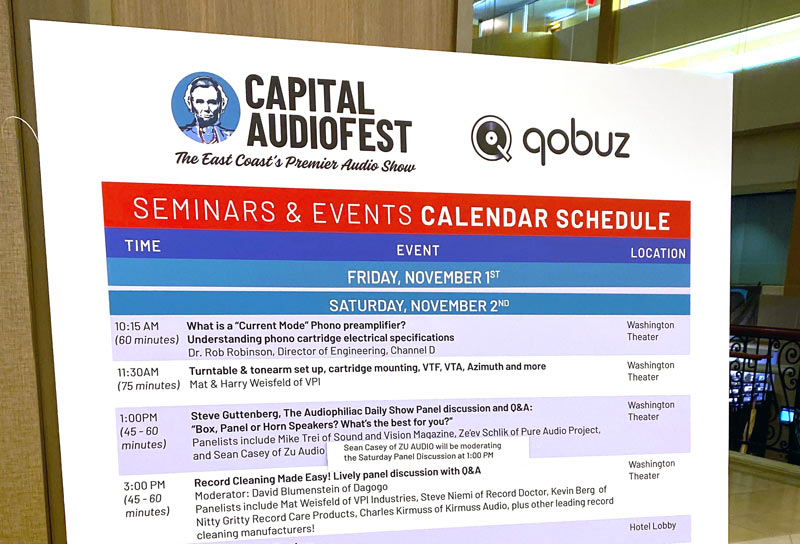
October 2019
Catalina / MacOS 15
The current versions of our software products will not run under Catalina / MacOS 10.15, recently released by Apple. As has been posted previously on our Support page, please do not install MacOS 10.15 at this time if you want to continue using our software.
There are two components involved in updating for Catalina: iTunes and 64-bit memory addressing.
iTunes
One question that comes up is: how will Pure Music work with iTunes, since iTunes has been "discontinued?" Actually, iTunes hasn't been discontinued (see the post below, from June); it has been renamed to Music. This was actually the most trivial part of the transition to Catalina. It involved adding a few simple lines of code:
The original line of code dependent on iTunes:
UInt8 bundleID[] = "com.apple.iTunes";
The "conditional" lines of code added for using the Music app instead of iTunes:
NSOperatingSystemVersion version = [[NSProcessInfo processInfo] operatingSystemVersion];
if (version.minorVersion > 14) {
UInt8 bundleID15[] = "com.apple.Music";
memcpy(bundleID, bundleID15, sizeof bundleID15);
bundleID[15] = 0;
}
The above modification simply "just works" for Catalina. The subsequent (and very complex) communication APIs (not shown) did not need updating other than being "told" to use the Music app instead of iTunes. Those critical, communication-related parts of Pure Music have already been tested and validated with Apple developer Catalina beta releases. Running under OS 14 and earlier, iTunes automatically continues to be used.
The downside is that the above and other changes necessitate dropping support for MacOS 10.9 (Mavericks) and earlier. For example, the operatingSystemVersion command requires MacOS 10.10 (Yosemite) or later, but the previous command that was used to determine the OS version required MacOS 10.8 or earlier. (Yes, that's a gap in OS support, and MacOS 10.9 required even a third, different way for a program to determine the running OS version...!) Dropping support for older OS versions has already been occurring in our software. For example, the track name lookup feature in Pure Vinyl requires MacOS 10.10 and later.
64 bit memory addressing
The Apple Catalina update installer issues a warning about incompatible software that won't work with Catalina, giving the user the chance to cancel the installation, or to proceed knowing that certain software will be unsupported. That warning would list, for example, Pure Music, Pure Vinyl, or incompatible software from other companies.
Over the years, we used the APIs (Application Programming Interfaces, the commands issued by programs to perform certain tasks such as drawing content in windows, handling menus, various system services, etc.) that Apple directed developers to use, always following Apple's recommended practices. But in a way, it is a curse to have been doing this for a long time (almost 25 years) because many of those Apple APIs have continued to be supported, but now are abandoned in Catalina because those APIs aren't 64-bit compatible, or weren't updated to be. This required rewriting, but more especially re-testing, large parts of the application involving the user interface and certain OS services.
That is the worst of it, and actually good news, because all the application programming code delivering the underlying, important audio-related functionality in our products didn't require revision and continues to work because that code was already 64-bit compatible. (This also includes the vital code used for communication with iTunes and the new "Music" application.)
Software from newer companies introduced for the first time in the last several years "already" has 64 bit compatibility only because those companies started late in the game and used recently-introduced Apple APIs, rather than using APIs previously endorsed by Apple (and the only ones available at the time), now discarded for Catalina. An example is the system version command mentioned above, which required using three different APIs over just a two-year period.
Timeline
We are currently conducting systematic tests for full compatibility as soon as possible. We anticipate this process to take an additional 4 to 6 weeks. Again, please do not install MacOS 10.15 at this time if you want to continue using our software. For the foreseeable future, Apple will continue to deliver Mojave/MacOS 14 security updates. Savvy, seasoned users have no downside to remaining on Mojave (or earlier) for the time being - other than satisfying an urge to update, or need the new features in Catalina (e.g., the Game Arcade).
Don't ignore a work-around of making a dual-boot system: partition the startup drive and install Catalina on the new partition, using the previous OS partition for audio and the new one for tinkering with Catalina. If you have a modern Mac with SSD running High Sierra (MacOS 13) or later, drive partitioning (APFS format) is nondestructive and drive space can be recovered later by deleting the old partition (with APFS, partitions draw from the same pool of space on the SSD, so partitions are automatically resized adaptively). Rebooting a modern Mac with an SSD takes just a few seconds. And as always, make a full computer backup before changing anything.
Thank you for your patience and understanding (especially our users who recently asked about this topic and were pointed to this page instead of getting a more personalized reply). Please periodically check this page, or our Support page (link below), for information on updated operating system requirements.
For additional information, see the topic "Catalina" OS support / 64 bit memory addressing / "software not optimized" notice in High Sierra and Mojave on our Support page.
September 2019
Fun with the Lino C 2.0
Click to see a comparison of measurements of our Lino C 2.0 and Seta L20 phono stages.
They sound great and measure great.
They measure great and sound great.
September 2019
Sailing to Catalina / MacOS 15 - Progress Report
Post moved to the Support page.
September 2019
Fun with the Seta™ L20 mk2
Recently, in the process of assembling a Seta L20 voltage- and current-mode MC/MM phono preamplifier for shipment to a customer (this is done by hand - the L20 is a built to order limited-production product), we performed a comprehensive set of measurements on the "naked" circuit board to try to push the L20 to the limit, highlighting its truly outstanding performance.
Highlights:
- An audio amplifier tested with a 1 megahertz (1 000 000 Hz) square wave
- Frequency response measured up to 24 megahertz
- Square waves at 17 Volts peak to peak up to 1 megahertz
- Sine waves at 36 Volts peak to peak up to 500 kHz
- Signal propagation delay measurement (spoiler: less than 50 nanoseconds all the way from input to output)
- Harmonic distortion less than 0.00005 percent (less than -126 dB) at 33 Volts peak to peak output!
- RIAA accuracy better than +/- 0.05 dB
- Intermodulation distortion below -130 dB
It sounds great and measures great.
It measures great and sounds great.
If high performance is your primary criterion for choosing a moving coil phono stage, then the Seta L20 is the world's best phono stage.
Unless you must have a remote. Our preamps don't have a remote control. :)
Click for details of the above highlights: Detailed measurements of the Seta L20.
August 2019
Lino C 2.0 phono stage honored with Golden Ear Award by The Absolute Sound!

August 2019
Andre Jennings writes our Lino C 2.0 phono stage is "a lot of phonostage for its asking price"

"...Sonically, the Lino C 2.0 is very linear and coherent-sounding, sure-footed, and solidly grounded..." "...completely non-fatiguing in any way... soundstage is reproduced with excellent width and depth, instrument location, performance interplay, and musical timbre..." - wrote Andre Jennings of our Lino C 2.0 MC phono stage in the September 2019 issue of The Absolute Sound (Golden Ear Awards announcement, full review forthcoming).
June 2019
Just posted - another Best-of at AXPONA 2019 - "pretty spectacular—like state of the art"
Enjoythemusic's Rick Becker calls our AXPONA 2019 exhibit "another of the Best Rooms at the show." Have a look at Rick's detailed coverage of our show exhibit in the Utopia D ballroom. Further validation of the sound quality achievable with our analog (phono preamps - on display were our Lino C 2.0, Seta L20 and Seta Model L) and digital (Pure Vinyl software) offerings!
June 2019
Has iTunes been "discontinued?"
Folks have recently been bombarded with attention-grabbing headlines about Apple "discontinuing" iTunes.
The actual truth was announced on June 3 by Apple at the WWDC keynote: Apple will be renaming iTunes to Music.
As very humorously pointed out by Craig Federighi during the keynote, the functionality unrelated to music (TV, podcasts, iOS device support, etc.) will be delegated to separate apps or the OS. This is a welcome development.
Unsurprisingly, Apple has retained the code base that enables interapplication communication, allowing Pure Music to interact with and control the new Music app, the same as with iTunes. Changing Pure Music to support the new Music app instead of iTunes amounts to changing a single line of code in Pure Music. (This change actually makes the Pure Music application binary one byte smaller!)
This is, of course, distinct from the changes needed for the 8 byte memory addressing required in the upcoming MacOS 10.15 ("Catalina"). But, that issue is not related to iTunes at all. We've already been working on it; see the topic "64 bit memory addressing / notice in High Sierra and Mojave" under the heading Newest Topics.
What about existing iTunes music libraries? The Music app included with the MacOS 10.15 Developer Beta distributed during WWDC imported our own 70,000+ song iTunes music library and associated playlists in a few seconds, and hit the ground running.
The headlines proclaiming "Apple Discontinues iTunes," as far as Pure Music is concerned, are much ado about nothing. Apple refocused and renamed iTunes to Music. We see this as a very positive change, improving the performance of Music (née iTunes) and Pure Music after Apple releases the upcoming MacOS 10.15 to all users, likely in late September 2019.
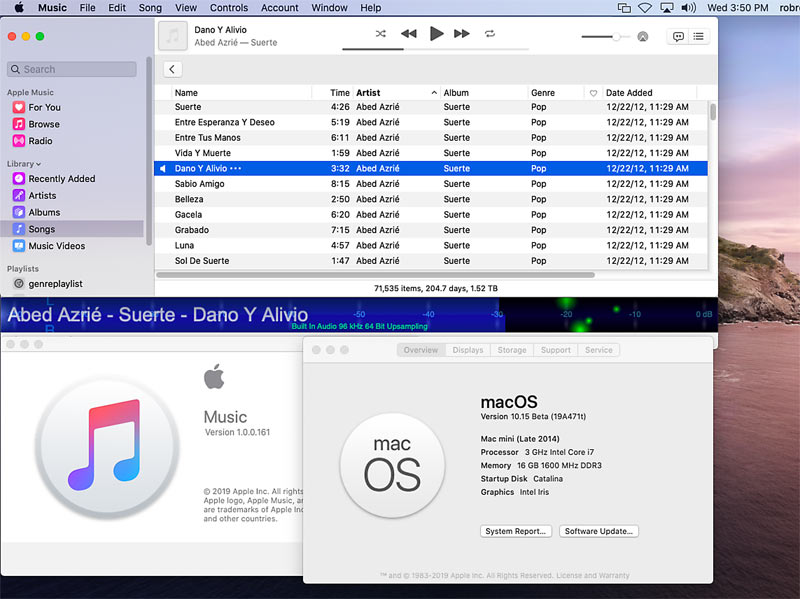
Shown above is Pure Music metering UI tiled below Apple's Music app, Catalina OS.
June 2019
Michael Fremer says Lino C 2.0 phono stage is "stupid-great for the money and beyond"

"...get ready for ultra-transparency, drop-dead backgrounds, and a no-nonsense accounting of the sound of the rest of your front end... After a few months of listening, my initial enthusiasm for the Lino C 2.0 continues." "...stupid-great for the money and beyond" - wrote Michael Fremer in his extremely favorable review of our new Lino C 2.0 MC phono stage in the June 2019 issue of Stereophile.
April 2019
Best Sound (Cost no Object) - AXPONA 2019
The Absolute Sound has honored our exhibit room with a Best Sound (Cost no Object) award at AXPONA 2019.
This is the second time that we've received a Best Sound (Cost no Object) award from The Absolute Sound.
The first time (see April 2014 News below), also at AXPONA, included Joseph Audio Pulsar loudspeakers. Yes, bookshelf speakers - augmented with our own subwoofer setup, bi-amped and time-aligned using Pure Music's / Pure Vinyl's built-in electronic crossover for seamless sub / satellite integration and a multichannel Lynx Hilo DAC.
At AXPONA 2019 we played either vinyl LP records / LPs transferred to digital high resolution (192/24) files, or files ripped from CDs.
All of our audio show vinyl playback, whether live or from recorded files, uses Pure Vinyl RIAA compensation as part of the signal chain.
The signal chain for vinyl was turntable->Seta phono preamplifier->Lynx Hilo ADC->Mac Mini/Pure Vinyl->Lynx Hilo DAC directly driving the power amplifiers.
April 2019
Channel D at AXPONA 2019
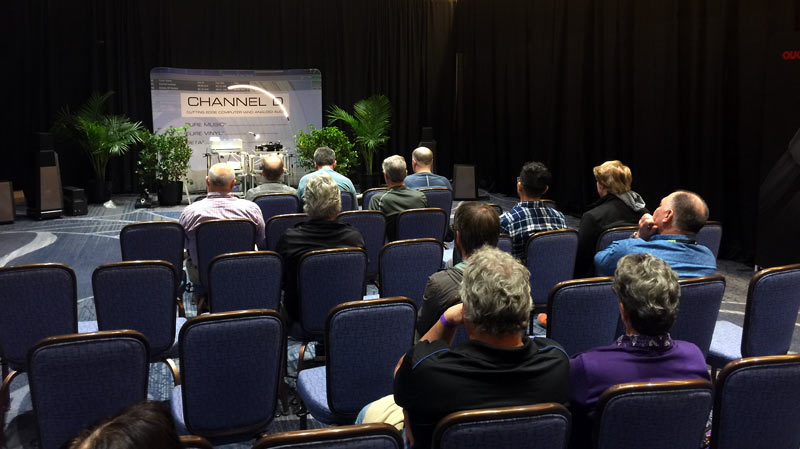
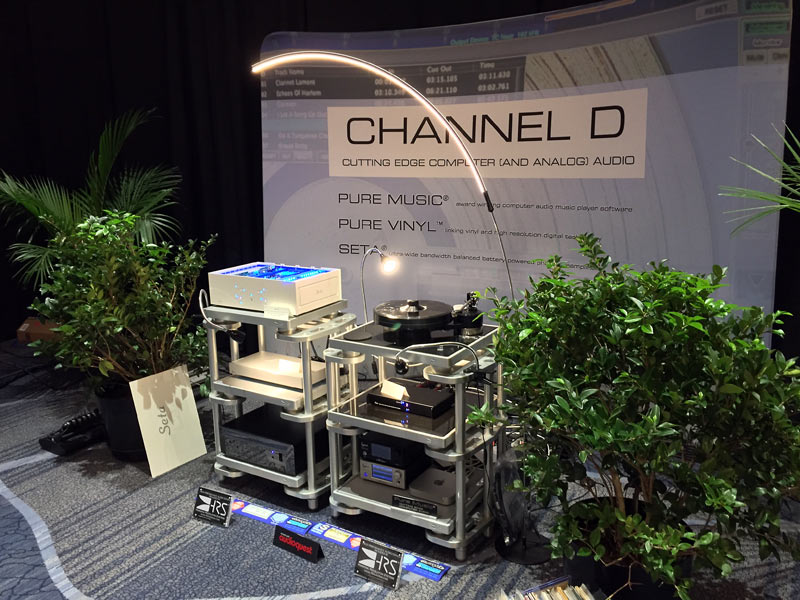
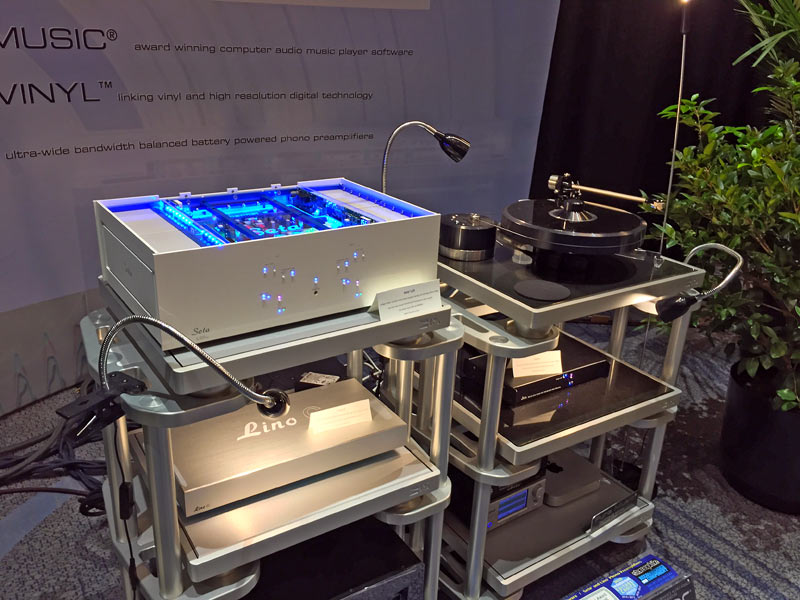
Press:
Stereophile's Jason Victor Serinus
Seminar on Current-Mode Preamplifiers
AudioQuest, Vandersteen, Channel D | AXPONA 2019
Part-Time Audiophile's Lee Scoggins: Best Soundstage at AXPONA 2019
April 2019
Another Ship(ment) has come in...

A new box of 2,400 WIMA evaporated metal film capacitors ready for selecting and matching to 0.1 percent tolerance, to meet the design specification for the precision (better than 0.1 dB) RIAA networks in all of our phono stages, from the Lino to the L20. The final assembly of the RIAA networks in our phono stages is done manually, using the selected capacitors.
March 2019
Channel D receives 2019 Editors' Choice Awards

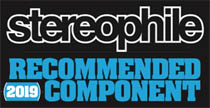
For the 10th consecutive year (2010-2019) in Stereophile, and 5th consecutive year (2015-2019) in The Absolute Sound, Channel D's Seta Model L preamplifier and Pure Music and Pure Vinyl (also 2014, The Absolute Sound) computer audio software are honored with Editors' Choice Awards from those publications. In addition, the Seta Model L phono preamplifier is ranked a "Class A" Recommended Component by Stereophile.
March 2019
Why high-end audio is sometimes expensive...
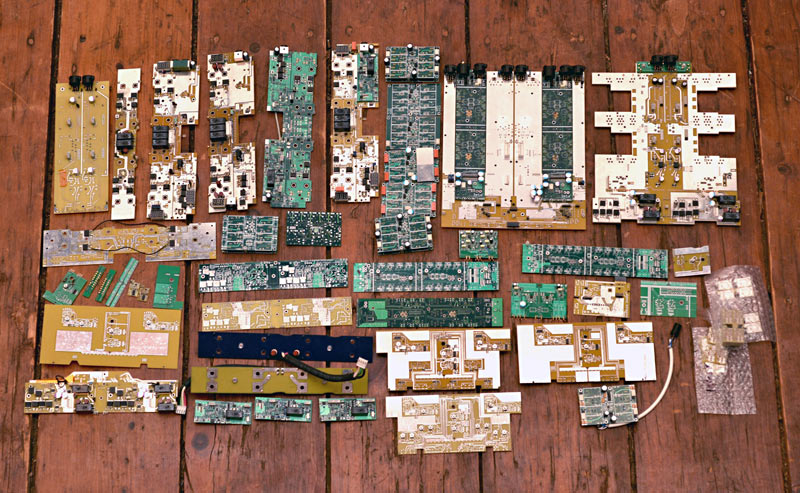
An example of some of the circuit board prototypes which were manufactured in the development of our Seta L20 (mk1), which took over 2 years. Chassis design went through a similar process. Cost scales exponentially with complexity; consequently, these prototypes were quite expensive to design, build, test and debug. However, this process is a necessity when designing and creating the highest performance products.
February 2019
LUX Global Excellence Awards
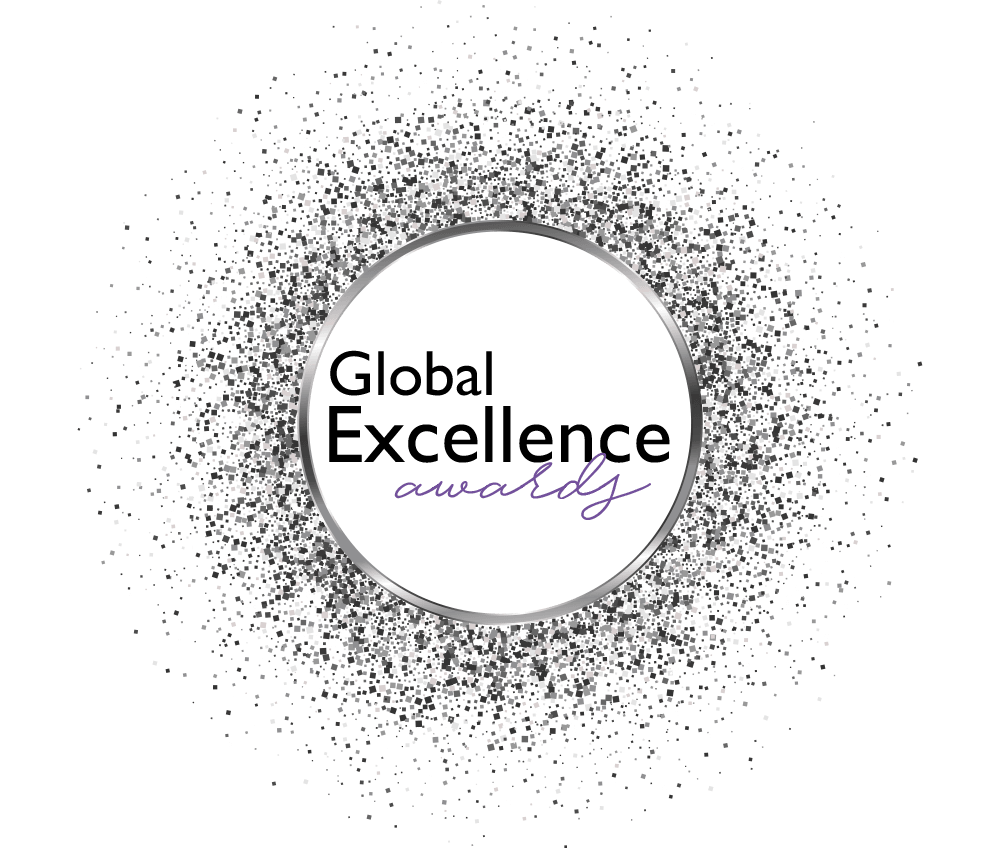
Channel D has been honored with the 2018 Global Excellence Award from LUX magazine for our software products!
December 2018
Seta L20 mk2
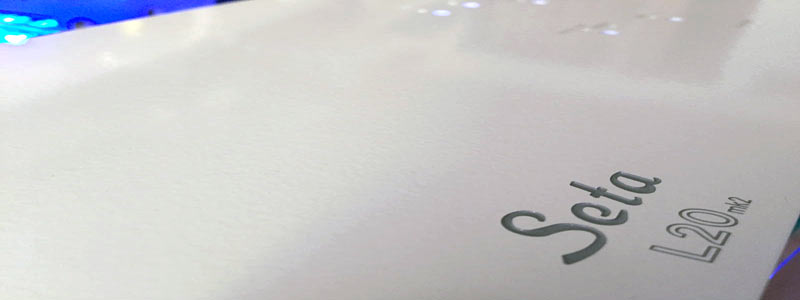
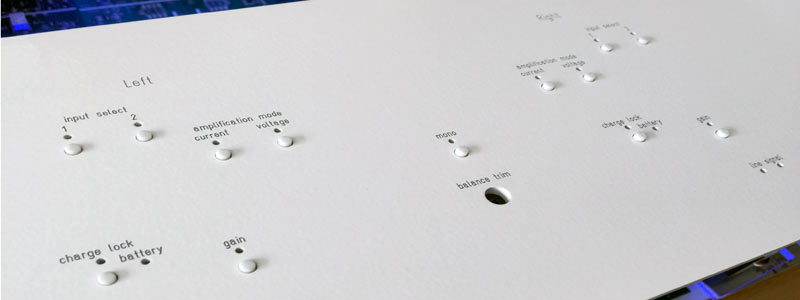
Our amazing Seta L20 has been updated to the mk2 model. New in the mk2:
Two separate, switchable moving coil (MC) inputs (previously single input)
One of the MC inputs may be configured for using a moving-magnet cartridge
New front panel buttons for selecting current or voltage mode and inputs 1 or 2
November 2018
Channel D at the 2018 Capital Audiofest
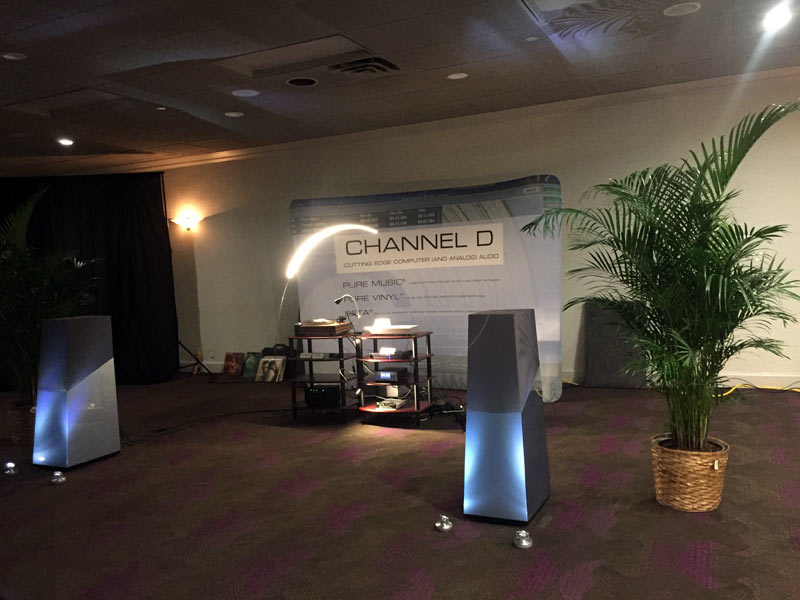
Thanks to Music Hall for joining us in staffing the exhibit room and showing their products, and Richard Vandersteen for loaning a set of Model 5A Carbon Loudspeakers (and himself!) for the event. We featured our Pure Music and Pure Vinyl software, plus Seta Model L and Lino C phono stages. Absent was our amazing Seta L20: rarer than hen's teeth, because we don't have any at the moment!
October 2018
Channel D will be at the 2018 Capital Audiofest, November 2 - 4 2018

We'll be showing Pure Vinyl 5, plus preamps from our renowned line of phono preamplifiers including our amazing and elegant new Lino C, as well as our Pure Music computer audio software.
Don't miss the Seminar at 1 PM Saturday in the expo seminar room, Washington theater: “What is a ‘Current Mode’ Phono preamplifier? Understanding phono cartridge electrical specifications.”
October 2018
Pure Vinyl 5 - latest beta preview (b29)

Rather than wait for the full version 5 update, this is a patched version of the otherwise stable b28 release that fixes two show stopping issues and several another annoying ones. Please be sure to read the enclosed READ ME document, before using the software. Click to download
August 2018
Seta L20 - in basic black!
We recently shipped a Seta L20 with custom black colored powder-coated chassis at a customer's request. Here it is undergoing the last stages of bench testing and quality control. The QC tests for each L20 take about two weeks!
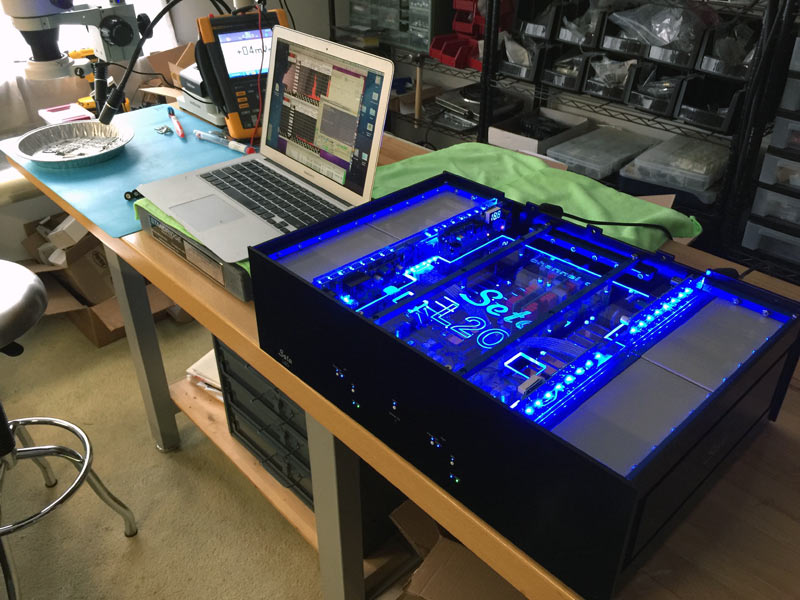
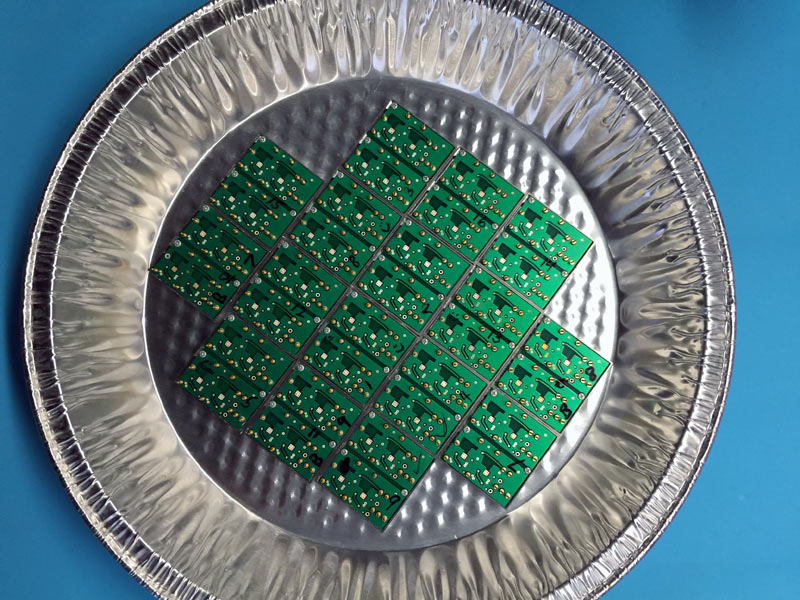
Set of sixteen tested and matched front-end modules that are to be used in one L20. Each module includes two fully balanced preamplifiers, so there are 8 per channel. These modules directly amplify the signal from the phono cartridge.

L20 inside illumination and battery condition monitors without internal cover, in the process of initial assembly and testing.
July 2018
Seta L20 now shipping with batteries installed
We've upgraded the shipping packaging for the Seta L20 and now ship the preamplifier complete with battery packs installed, instead of shipping the battery packs separately. The L20 is mounted to a framework which is secured inside a padded, air-tight road case, which is then double-boxed. The shipping weight is 112 pounds. The new packaging and framework makes it practical for one person to unbox and install. We've also upgraded the battery packs to include new digital "fuel gauges" to indicate the battery condition.
Our production of the L20 is now sold-out through the beginning of 2019. We will resume taking orders for the L20 in December 2018.
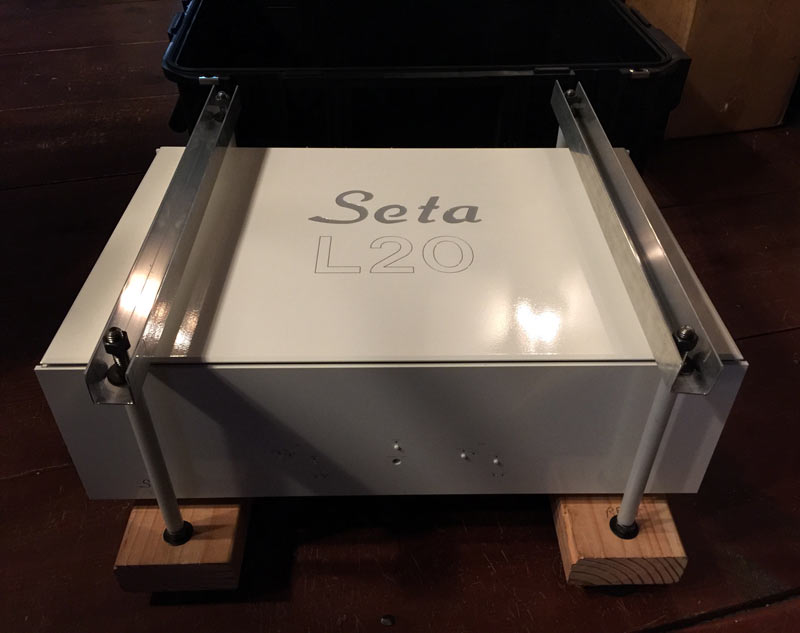
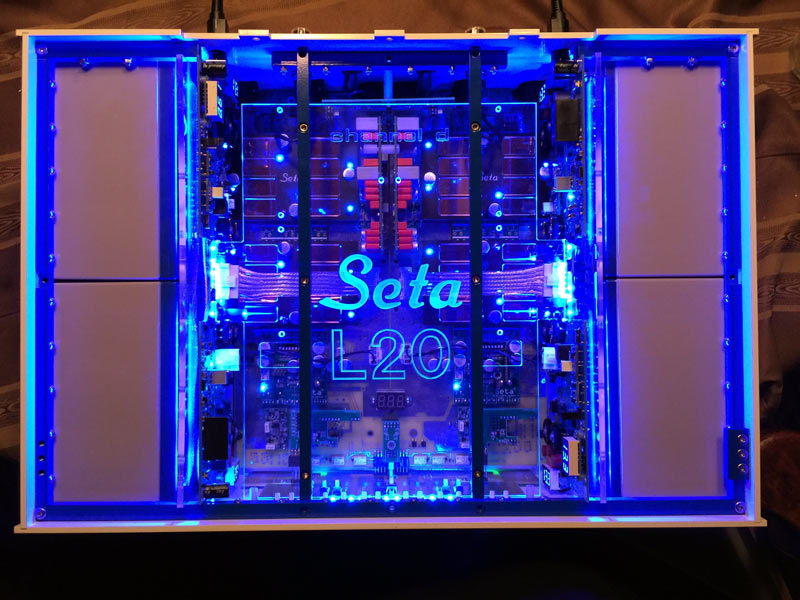
June 2018
Presentation on current mode preamplifiers
On June 23, 2018 Channel D's Director of Engineering gave a presentation on understanding cartridge electrical specifications and current mode phono preamplifiers to members of New York's Audiophile Society.
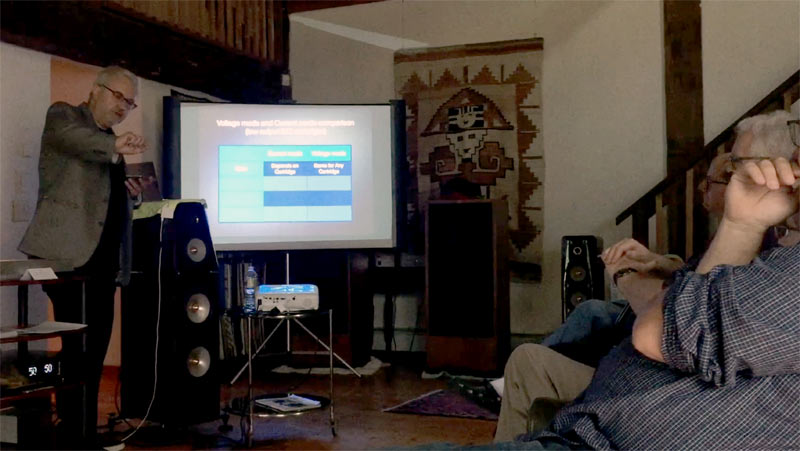
April 2018
AXPONA show press / AnalogPlanet video coverage of the Seta L20 and Lino C
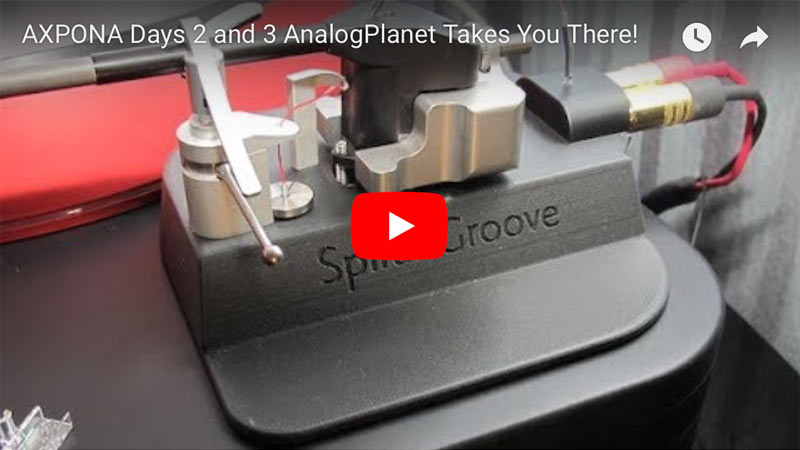
It's a long (1 hour 16 minutes) video... Channel D coverage begins at 1:04:42. AXPONA 2018 Day 2 and 3 AnalogPlanet Takes You There!
Here is a link to a higher-resolution version on YouTube.
April 2018
AXPONA show press / The Absolute Sound calls our new Lino C a "Most Significant" New Product

2018 AXPONA Show Report: Analog Sources
April 2018
NEW Lino C Current-Mode MC Phono Preamplifier introduced at AXPONA
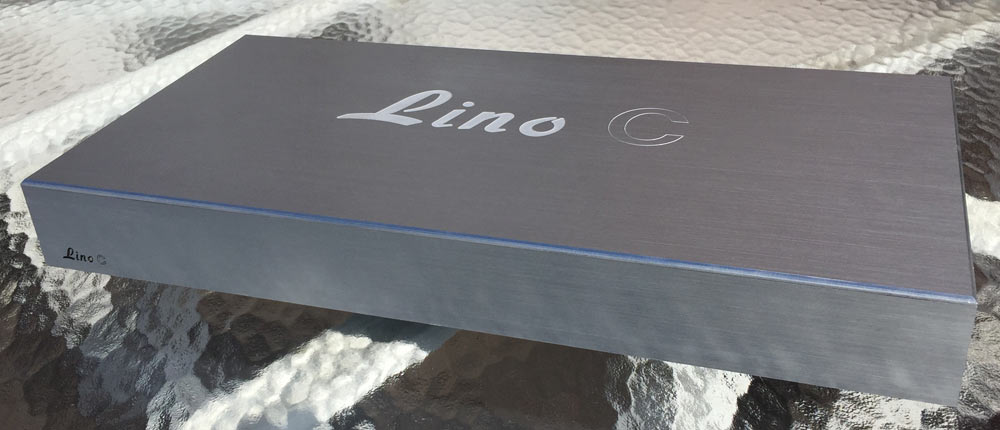
Lino C Current-Mode MC Phono Preamplifier
The Lino C is a very high performance, reference quality current-mode phono preamp priced like a high performance voltage mode MC preamplifier. The Lino C uses current-mode technology adapted from our Seta® L20 phono stage.
The Lino C features balanced inputs plus independent balanced and unbalanced outputs. Though the signal gain of a current-mode amplifier depends on the impedance characteristics of the cartridge used, gain is also adjustable over a 12 dB range.
RIAA EQ accuracy is better than 0.1 dB from 20 - 20kHz. The RIAA EQ also can be disabled on the balanced outputs, providing simultaneous “flat” (for LP to digital transfers) and RIAA unbalanced signal outputs. An internal ultra low noise AGM rechargeable battery power supply is optional, and is based on the technology used in our Seta phono preamplifiers.
The Lino C retail price is $2499. Chassis finish options are beautiful, brushed aluminum (shown above) and glossy black powder coat (extra cost).
April 2018
Photos from AXPONA 2018
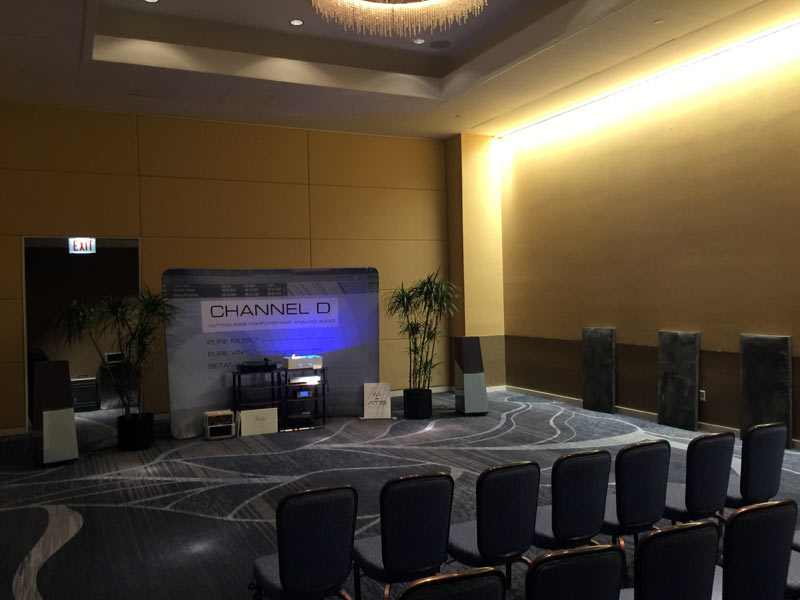
Channel D / Vandersteen Audio exhibit room

Richard Vandersteen loaned both himself and a pair of his Model 5A Carbon speakers. Anyone who knows Richard may be surprised to see him using a computer (here, running Channel D Pure Music / Pure Vinyl) to control an audio system
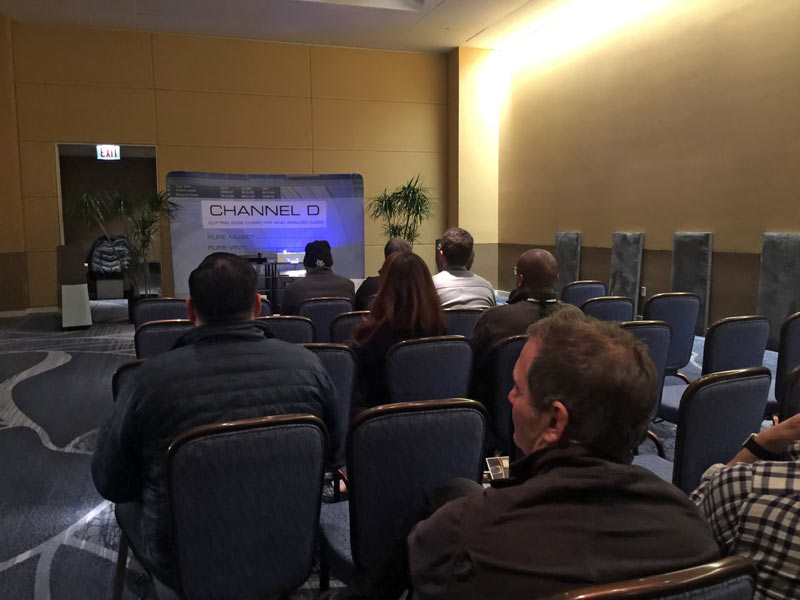
Another view of our exhibit room
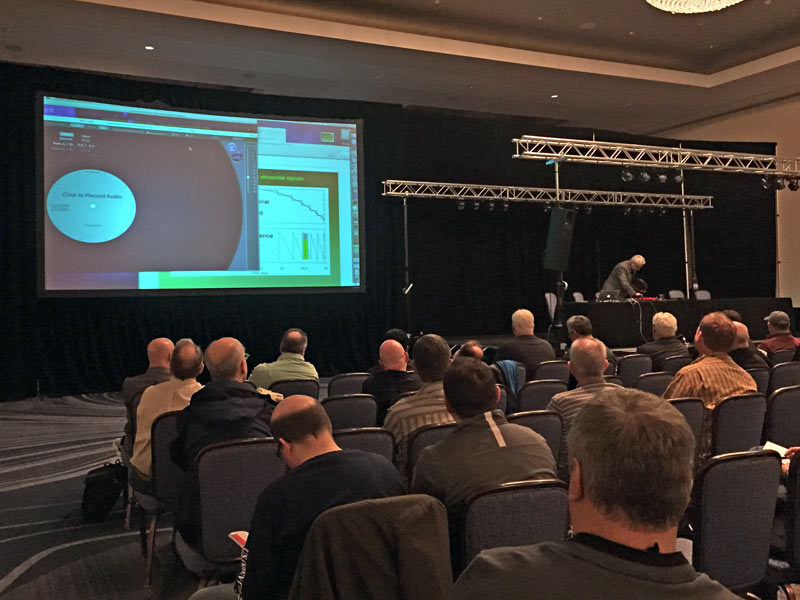
Vinyl Ripping Seminar, Saturday morning
March 2018
Channel D will be at AXPONA 2018
This will be our 10th time in a row setting up a listening room at this prestigious international gathering of audio enthusiasts!
AXPONA is at a new venue this year, and we will be at the show in Utopia D with room sharing partner Richard Vandersteen / Vandersteen Audio. Stop by and say hello!
Also, don't miss the Vinyl Ripping Seminar at 10:30 AM, Saturday April 14 in the Auditorium.
February 2018
Seta L20
Some images from around our office featuring our exciting new Seta L20 preamplifier, as we fill orders for our latest product.
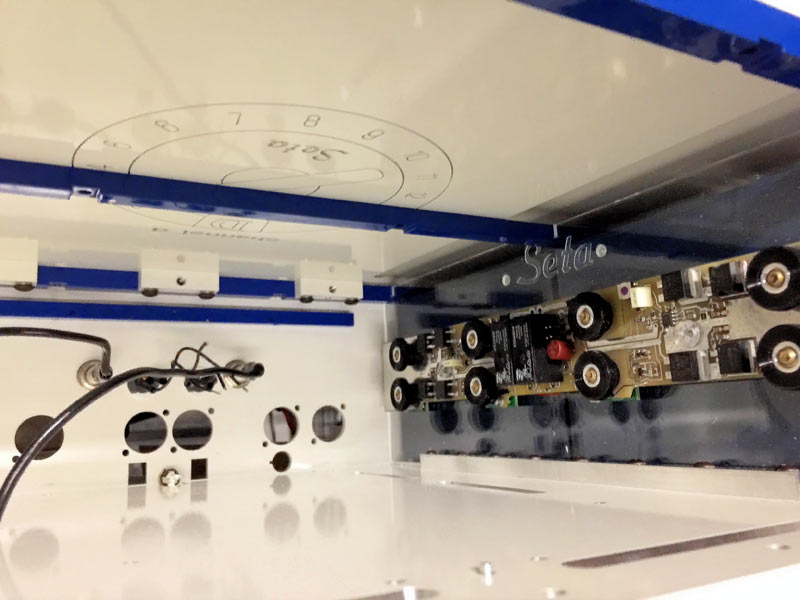
A view as if "standing in and looking up from inside" an L20 chassis awaiting installation of the main circuit boards.
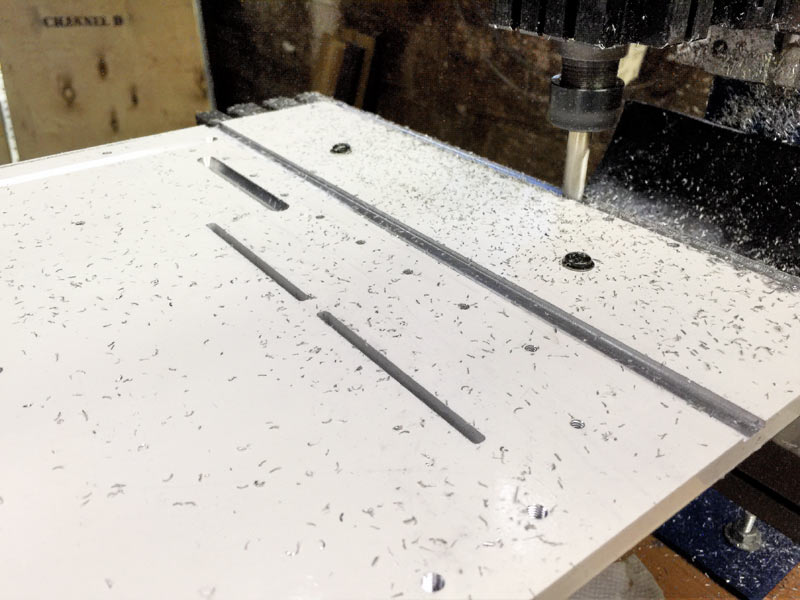
10mm thick L20 bottom chassis panel undergoing final milling operations in our machine shop.
Namely, milling cavities for the slide-in battery pack "feet" and chamfering of the chassis ventilation slots for more efficient airflow.
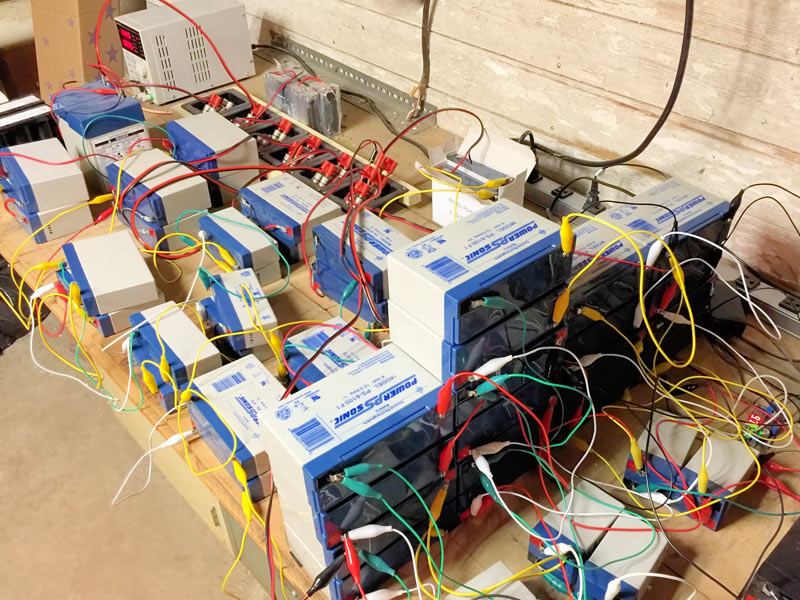
View of 6-volt and 4.5-volt AGM batteries undergoing final top-off charge and QC evaluation before installing in Seta preamplifiers.
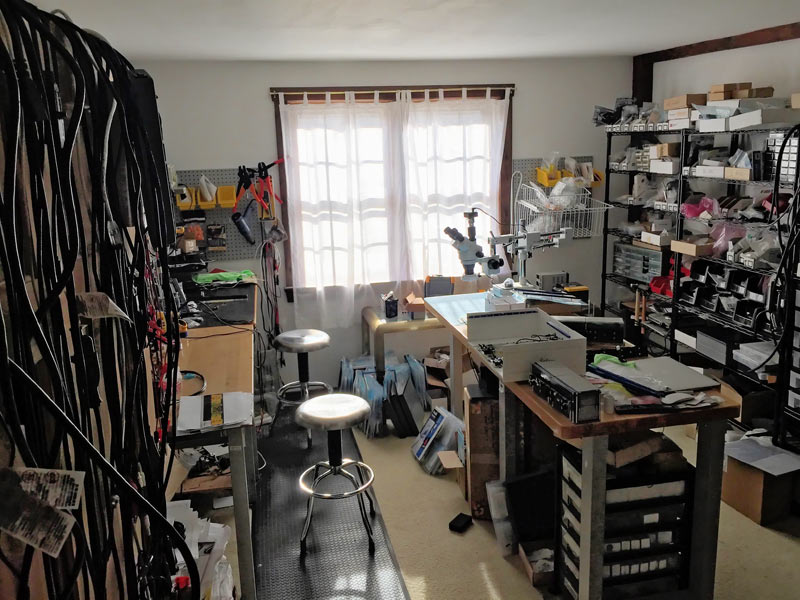
Part of our electronics lab where the major components of each L20 also undergo final inspection and QC.
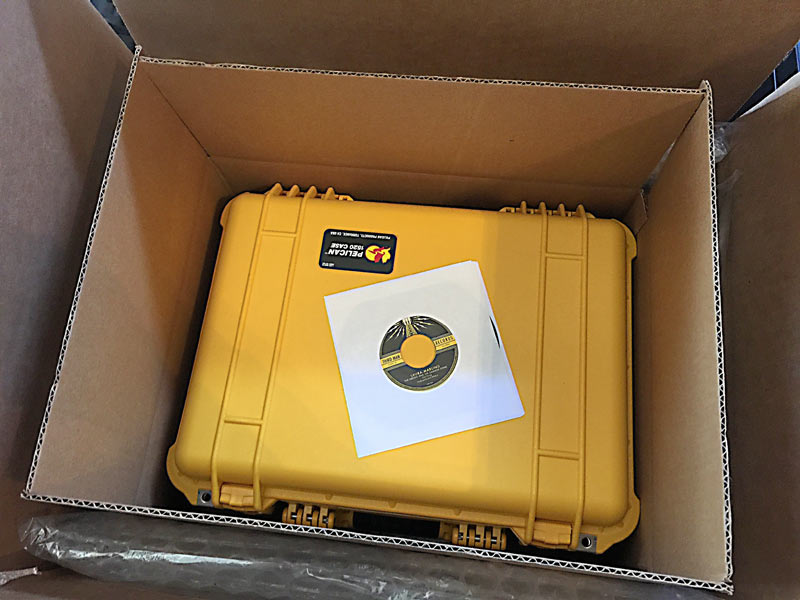
The L20's two user-installable/replaceable high-capacity long life rechargeable battery packs are shipped separately from the preamplifier to keep the L20's overall shipment weight manageable by one person.
The packs are protected from rough handling in transit by a shock-absorbing high density foam-filled 20" x 7" x 16" watertight road case (the 7" 45 is shown for scale) which is then double-boxed.
The L20 preamplifier itself is also packaged in a similar way for shipment.

Some local color. View from our office / circa - 1780 renovated barn on a recent winter morning with the treetops bathed in golden sunlight.

The nearby, bucolic and serene Delaware River on an icy winter morning. This pastoral, old-time milieu is an ideal environment for developing audio products.
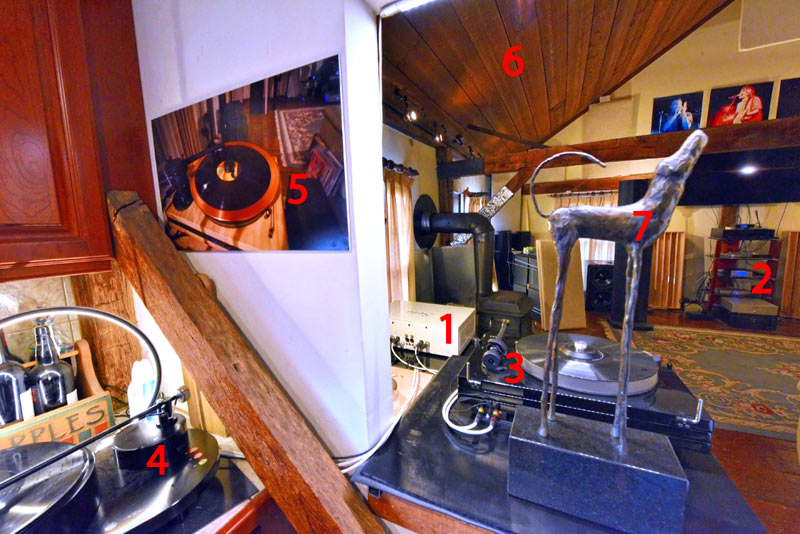
All of our phono stages are evaluated in our reference listening room.
Here is an L20 undergoing listening tests with different turntables and cartridges.
(1) Seta L20
(2) Reference audio system, on opposite side of room. The L20, as well as all of our other phono preamps, easily drives long signal interconnects.
(3) Music Hall MMF 9.3 with Ortofon Cadenza Bronze cartridge
(4) AMG Viella V12 with Grade 2 PRIME Zu DL-103 cartridge
(5) Artemis SA-1 (when swapped for the Music Hall at the same spot);
Kuzma 4Point tonearm with Ortofon A90 cartridge, interchangeable with Graham Phantom II tonearm with Haniwa HCTR01 ultra low impedance cartridge (especially useful for testing the L20's current-input mode)
(6) Circa - 1780 renovated barn listening room
(7) Our 21st - century "Nipper"
November 2017
Channel D at the 2017 Capital Audio Fest
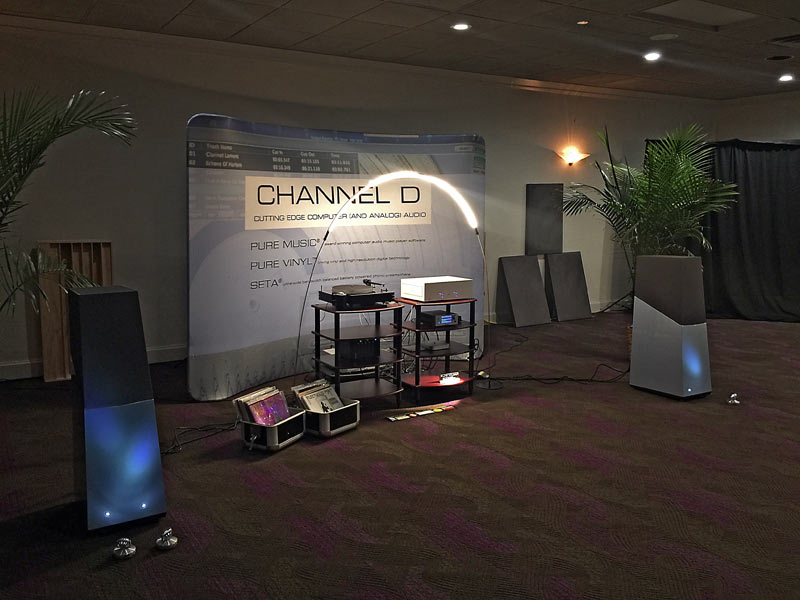
Exhibit Room, Seta L20 Phono Stage, Music Hall MMF 9.3 turntable, Lynx Hilo ADC/DAC, Vandersteen Model 5A Carbon Speakers
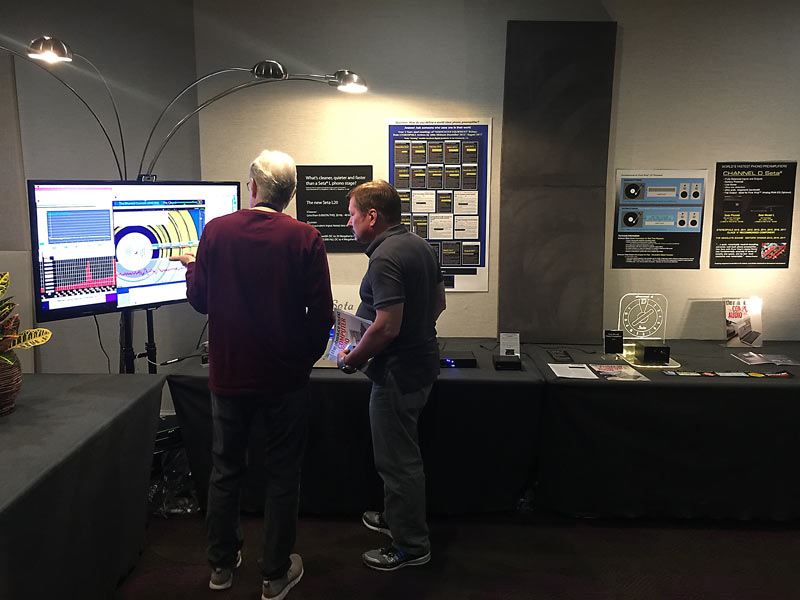
Pure Vinyl 5
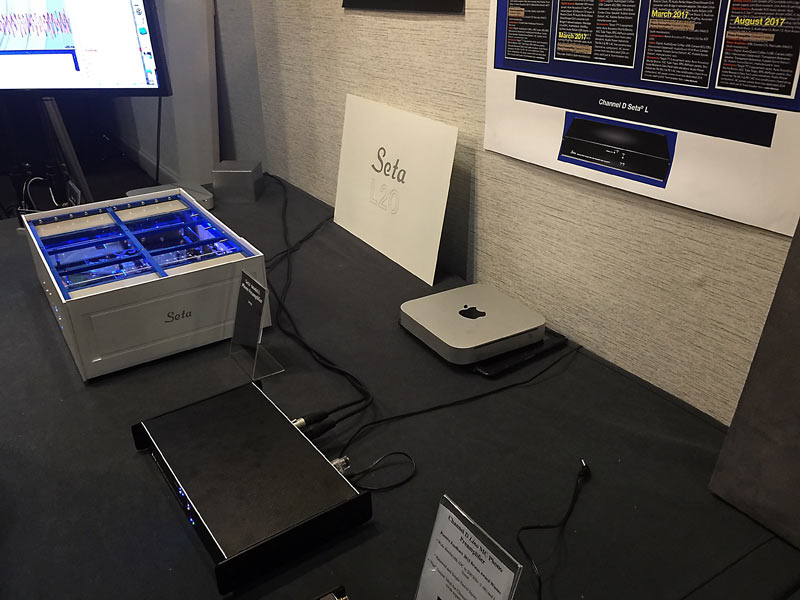
Seta L20 Phono Stage, Seta L Phono Stage
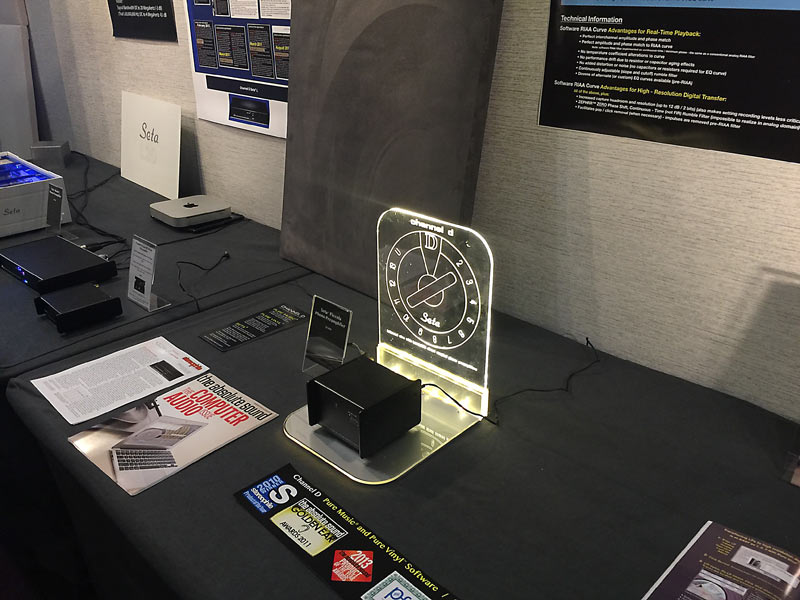
Seta L20 Phono Stage, Seta L Phono Stage, Lino Phono Stage, Seta Piccola Phono Stage
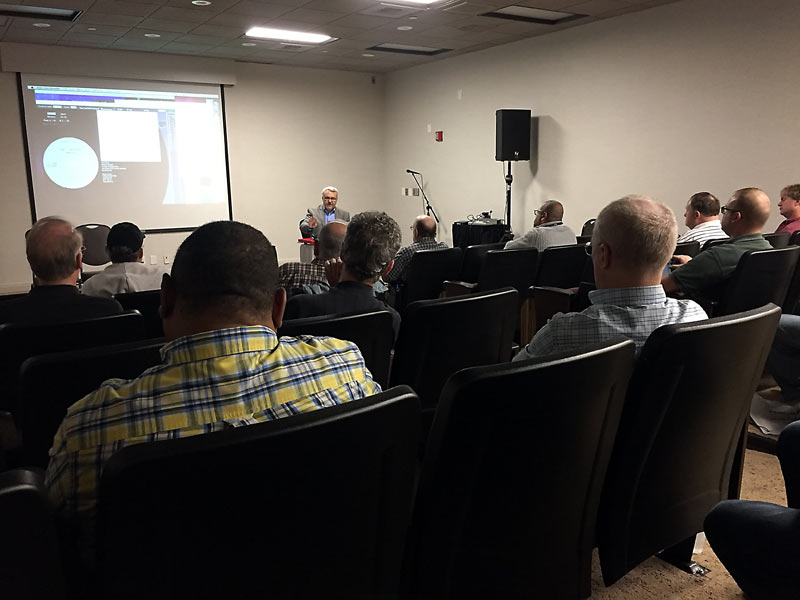
Vinyl Ripping Seminar
October 2017
Channel D will be at the 2017 Capital Audiofest, November 3 - 5 2017
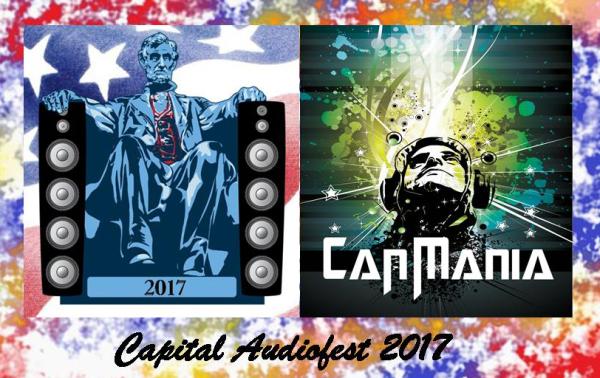
We'll be showing the incredible new Pure Vinyl 5, plus preamps from our renowned Seta line of phono preamplifiers (including our new Seta L20), as well as Pure Music.
Don't miss our popular Vinyl Ripping Seminar at 10 AM Saturday in the expo seminar room.
August 2017
Channel D at the 2017 California Audio Show
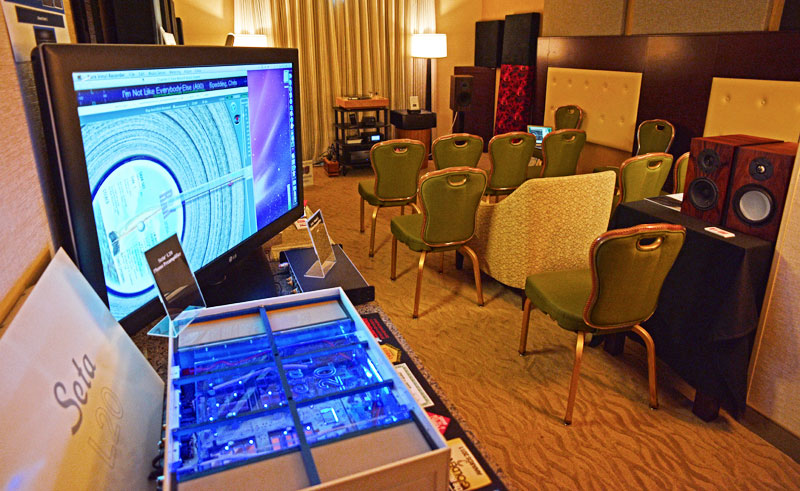
Exhibit Room, new Seta L20 Phono Stage, Pure Vinyl 5
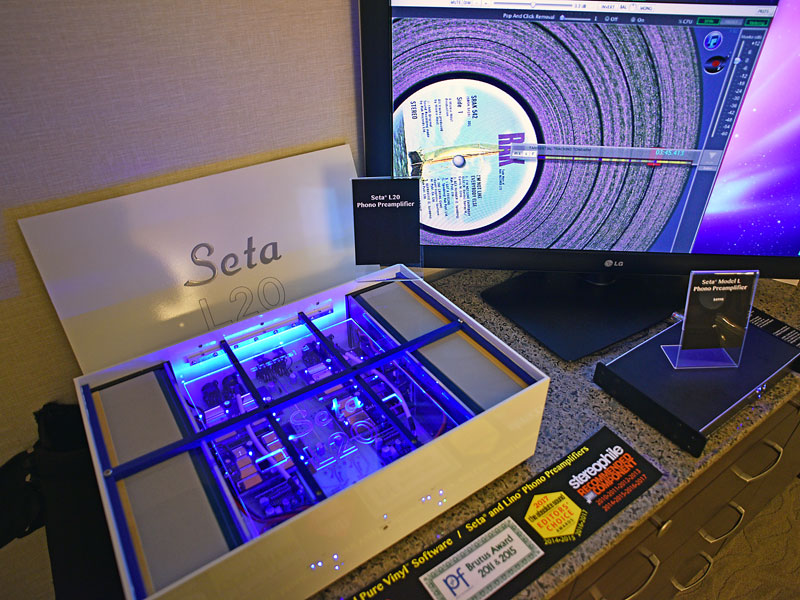
Exhibit Room, new Seta L20 Phono Stage, Pure Vinyl 5
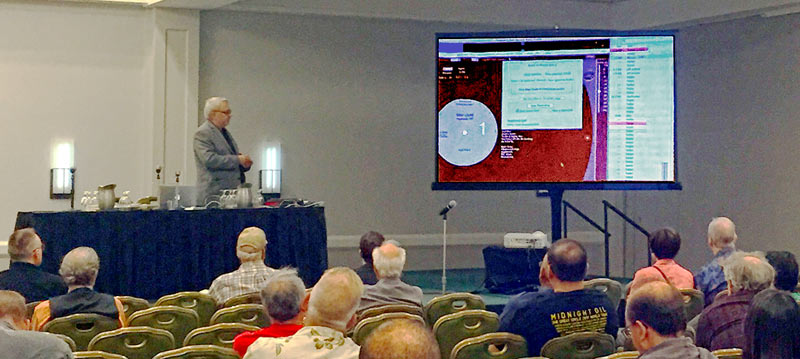
Vinyl Ripping Seminar
July 2017
Channel D at the California Audio Show, July 28 - 30 2017 - Update

As part of the California Audio Show's Prize Drawing, we're donating one of our award-winning Lino phono preamplifiers, with a retail value of $1,448.
We'll also be showing one of our new Seta L20 phono preamplifiers.
June 2017
Channel D will be exhibiting at the California Audio Show, July 28 - 30 2017

We'll be showing the incredible new Pure Vinyl 5, plus preamps from our renowned Seta line of phono preamplifiers, as well as Pure Music.
Don't miss our popular Vinyl Ripping Seminar at 1:30 PM Saturday in the expo seminar room.
May 2017
Active speakers with Pure Music and FabFilter Pro-Q: A Primer
A Pure Music user let us know about a well-written article regarding using Pure Music's / Pure Vinyl's multi-way crossover feature. Click to read article.
May 2017
The MacOS version compatibility / Internet transaction security dilemma

Ever since we began developing and marketing software products over 21 years ago, we've always endeavored to support as wide a range of legacy computer operating system (OS) versions and computers as technically possible. Due to extensive optimization for low CPU usage, our products can still be used on 12 year old computers running a 10 year old operating system (Mac OS X 10.5, first released in 2007)!
However, Internet commerce sites (including the merchant service that processes our transactions) are migrating their systems to something called TLS 1.2 ("Transport Layer Security," previously called SSL) due to Internet hacking and security concerns. Unfortunately, this technology is not backward compatible with older OS versions - or at least, old OS versions aren't being updated to support it.
So, while you may be able to use our products with computers running old OS versions, starting recently you cannot easily purchase them via the Internet with a web browser running under an old OS.
To reiterate:
Our software products are compatible with computers running Mac OS versions up to 10 years old.
However, beginning recently (April 2017) you cannot purchase our products using computers running 10 year old Mac OS versions. (There is a work-around, however.*)
This presents an unpleasant dilemma. Due to these circumstances which are beyond our control requiring supporting increasingly restrictive (but nonetheless necessary) Internet security policies, for future product releases we will likely be discontinuing support for older OS versions.
As of April 2017, the oldest Mac OS version that supports current Internet transaction security policy is 10.9 ("Mavericks"). Our products (that is, the software license codes) are delivered using email, so they also can be purchased with web browsers running under updated versions of Windows or Linux, as well as on portable devices running iOS, Android, etc. Apple computers supporting MacOS 10.9 are mid 2007 or later iMacs or 15 and 17 inch MacBook Pros; 2008 or later Mac Pro and MacBooks, and mid 2009 or later Mac Minis and 13 inch MacBook Pros.
*Mozilla Firefox 45.9.4 "Extended Support Release" (esr) supports TLS 1.2, runs on MacOS 10.6 through 10.8 and can be used to purchase products from our web store. It can be downloaded here. Click on the link, then be sure to click on Show Firefox 45, and finally download the appropriate language-localized version.
April 2017
Channel D at AXPONA 2017
Press coverage:
Analog Planet: At AXPONA 2017 Two Phono Preamp Designers Show Their Newest Designs (a video)
The Absolute Sound: AXPONA 2017: Digital Components, Headphones, and Personal Audio
Stereophile: Jana's Day 3 at AXPONA
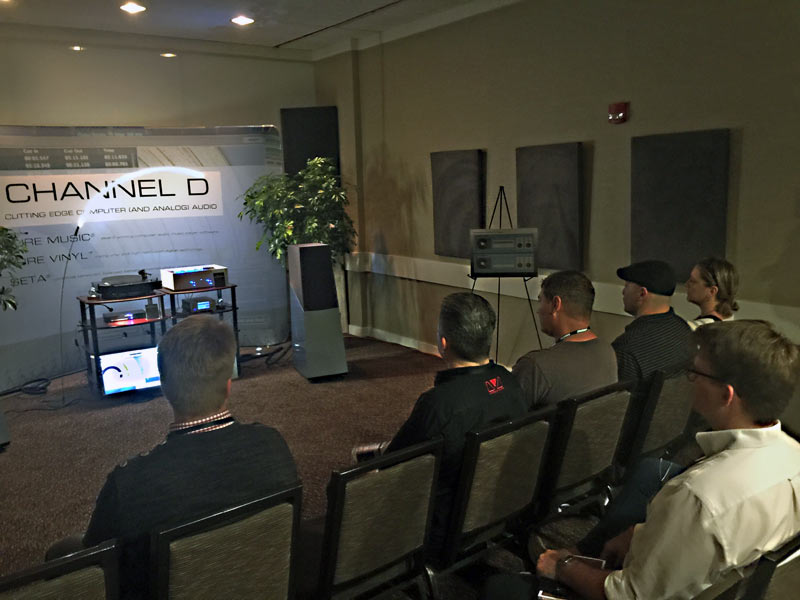
Exhibit Room
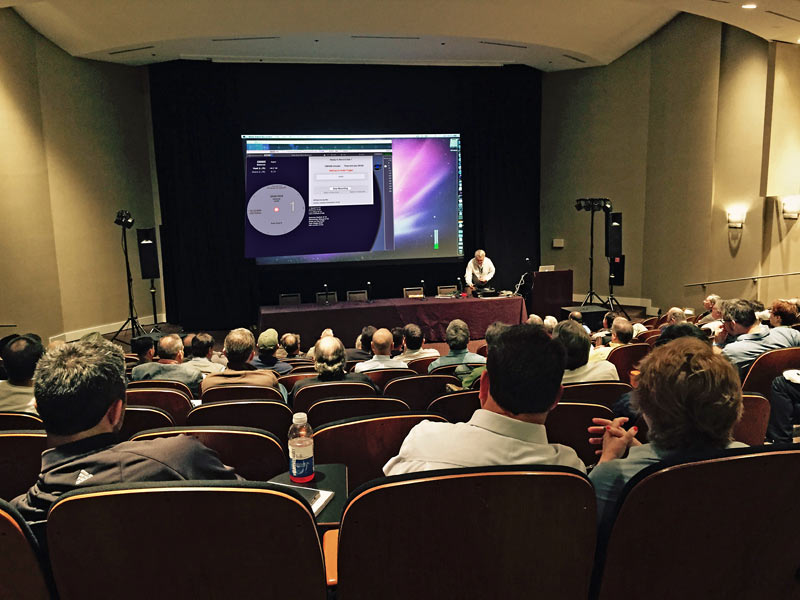
Vinyl Ripping Seminar
April 2017
Seta L20 introduced at AXPONA 2017
At AXPONA 2017, we introduced our brand new Seta® L20 moving coil phono preamplifier.
Several years in development, the L20 represents a cost-no-object statement product that builds on the strengths of our award winning Seta Model L MC phono preamplifier by increasing the frequency bandwidth to 20 megahertz (20,000,000 Hz) – 1000 times the bandwidth of audible frequencies - while simultaneously and dramatically increasing the signal to noise ratio and reducing harmonic and intermodulation distortion to nearly unmeasurable levels.
The Seta L20ʼs lower noise and ultra-low harmonic and intermodulation distortion and ultra wide signal bandwidth pays clear and discernible dividends by delivering breathtaking clarity, depth and accuracy from LPs.
The L20 is a ground breaking phono preamplifier in significant ways.
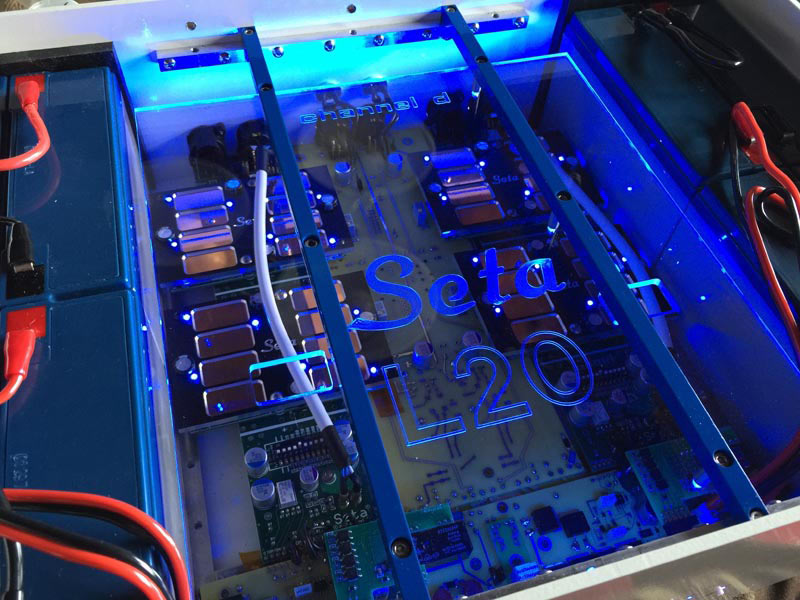
A dual-mono, direct coupled, fully balanced design, each channel has its own independent rechargeable battery power supply. Though the left and right channels share the chassis, they are galvanically isolated from each other and from the outside world. Chassis common is floating but can be tied to either or both channels.
The equivalent input noise of the L20, measured with a 1 ohm source resistance, is an astonishingly low -134 dBu, despite the extreme signal bandwidth capability.
The L20ʼs 24 volt power supply rails are able to swing 20 volts peak to peak into a 600 ohm load from DC to 100 kilohertz with negligible distortion. The L20 includes selectable voltage and current amplification modes as well as front panel adjustable gain and Mono summing mode, plus the Setaʼs unique cartridge balance trim control, accessible via the front panel.
The L20 includes a 576 watt-hour internal rechargeable battery power supply. Battery recharging is automatically managed via proprietary Channel D circuitry, the same as used in the Model L and all other Channel D Seta preamplifiers. Pricing to be announced, but will be substantially higher than other preamplifiers in our product line.
More details to follow.
April 2017
Pure Vinyl 5 beta preview posted
In advance of our appearance at AXPONA 2017, here is a preview of Pure Vinyl 5. This is exactly the same build version that we will use to demonstrate Pure Vinyl in our exhibit room and Vinyl Ripping Seminar. Please be sure to read the enclosed READ ME document, before using it. Click to download (note: link removed, please see newer preview version link above).
March 2017
Channel D will be at AXPONA 2017
This will be our 9th time in a row setting up a listening room at this prestigious international gathering of audio enthusiasts! As in previous years, we will be in the Wabash Room on the bottom level of the show, directly across from the MBL and the Synergistic Research exhibit rooms.
We'll be introducing the incredible and long-awaited new Pure Vinyl 5! Details about the many major new features will follow.
Don't miss the Vinyl Ripping Seminar at 10 AM, Saturday April 22 in the Auditorium.
October 2016
Channel D at the 2016 Rocky Mountain Audio Fest (our 11th consecutive appearance at RMAF)
Press coverage:
Stereophile - RMAF 2016: Jana's Sunday at the Show
Stereophile - JA Moves On Up at RMAF
The Absolute Sound (Andrew Quint RMAF 2016 Report) - Party in the Pod:"This was, to me, audiophilia at its best - critical listening with the best gear that permits the recording arts to effectively deliver an artist's message."
EnjoytheMusic - RMAF 2016 Show Report Part 2 By Steven R. Rochlin
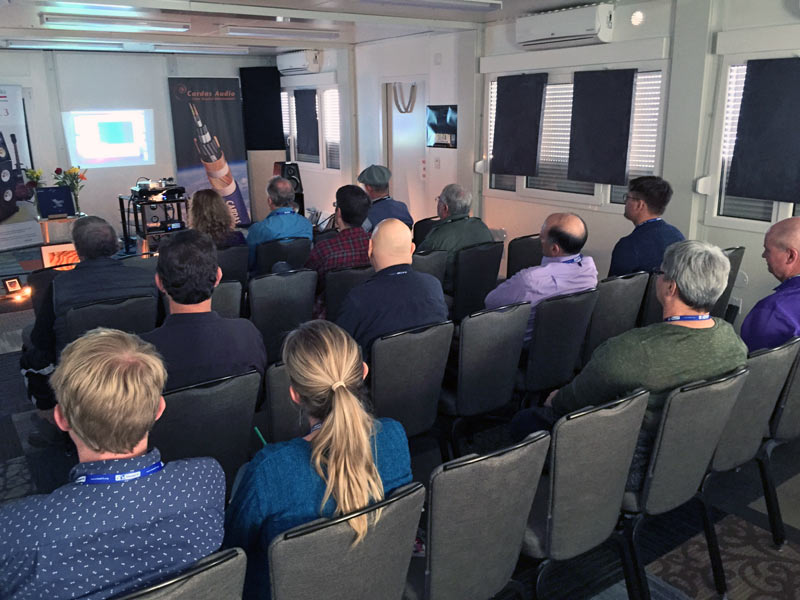
Exhibit System:
Channel D Pure Vinyl ($299)
Channel D Pure Music ($129)
Channel D Seta Model L Preamplifier ($3800)
VPI Turntable ($6500)
A-T ART 1000 Cartridge ($5000)
Lynx Hilo TB ADC/DAC ($2700)
Mac Mini computer ($700)
Jeff Rowland Continuum S2 amplifier ($9000)
Joseph Audio Pearl 3 Speakers ($31,500)
with Sam Willett from Classic Album Sundays hosting LP listening sessions
September 2016
Channel D Vinyl Ripping Seminar at the 2016 Rocky Mountain Audio Fest
On Saturday October 8, we'll again be presenting a Vinyl Ripping Seminar at Rocky Mountain Audio Fest.
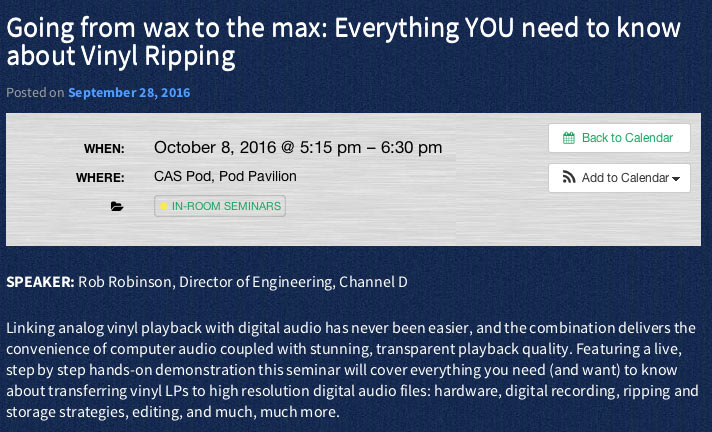
September 2016
Channel D at 2016 Rocky Mountain Audio Fest - Party in the POD and Classic Album Sundays!
This will be our 11th time in a row setting up a listening room at this prestigious international gathering of audio enthusiasts!
Channel D will be part of a special demonstration room along with the famous Classic Album Sundays:
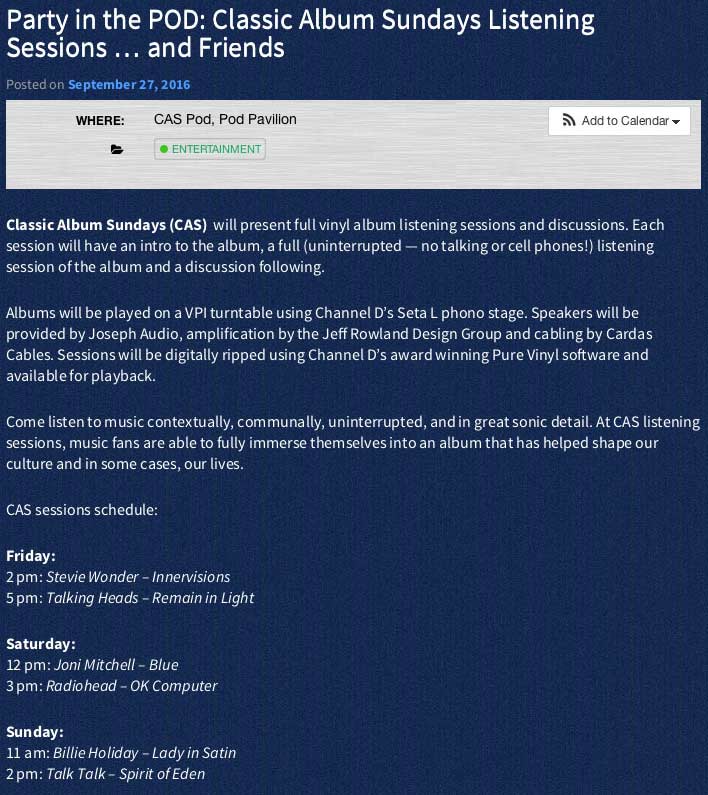
August 2016
Channel D Granted United States Patent US 9,389,827 B2
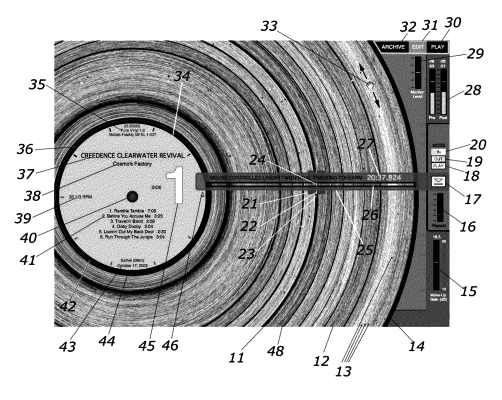
Channel D was granted US Patent #9,389,827 B2 for "SYSTEM AND METHOD FOR DISPLAYING AND EDITING DIGITALLY SAMPLED AUDIO DATA" - our novel invention for creation of Cue Guide images in Pure Vinyl, used for track editing. This follows our UK Patent #GB2454106 and US Patent #8,793,580 B2.
August 2016
Kagi (the e-commerce merchant previously used by Channel D) has ceased operations
Kagi, the Berkeley, California based e-commerce merchant services we have used for more than 19 years to collect and process product payments, has suddenly announced that they have ceased operations.
Updated purchasing links are now in place on our website for our products. Please see this page on our website for important additional information.
July 2016
Channel D at Capital Audiofest 2016
Press coverage
Stereophile
Audiophilia
Audionirvana
Our exhibit room audio system was the same high performance, tri-amped (panels/stereo woofers/stereo subwoofers) system we used at AXPONA (see April 2016 News post below for details).
Taming the acoustics of this nearly-square room footprint with its unfavorable dimensional ratio (42 by 46 by 11 feet) was extremely challenging. Aided by making careful acoustic measurements with Channel D's Mac the Scope software in swept-sine and third-octave-filtered pink noise modes, we spent over 8 hours determining optimal positions for the panels and woofers, before fine-tuning and voicing the system with music.
Using the adjustable time alignment feature of the Pure Music / Pure Vinyl crossover gave us the freedom to position the woofers for best uniformity of coverage (especially important in an exhibit room), slam / definition and frequency response, and to position the panels for best imaging. The bandwidth-limited (250 Hz and up) audio used to drive the panels was delayed 7.2 milliseconds relative to the main woofers, and the aggregate panel/woofer combination was delayed an additional 16.7 milliseconds relative to the subwoofers. Time alignment for speaker positioning flexibility is impossible to realize in an all-analog multi-amped system because the necessary signal delays cannot be generated with analog circuitry.
See you at Capital Audiofest next year!
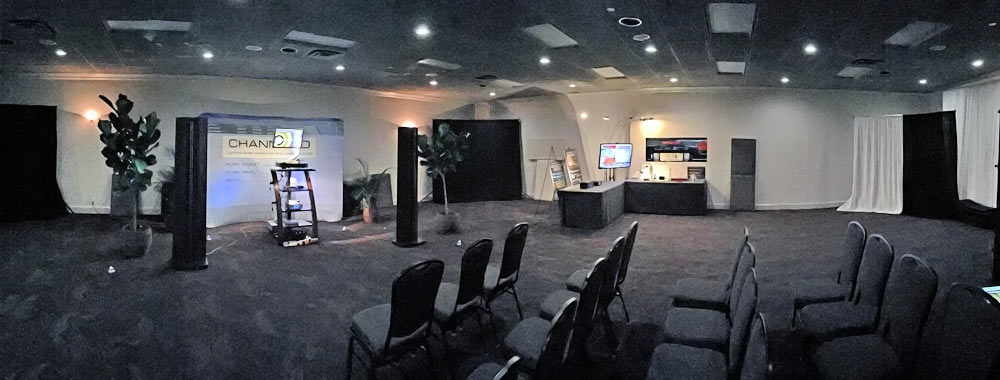

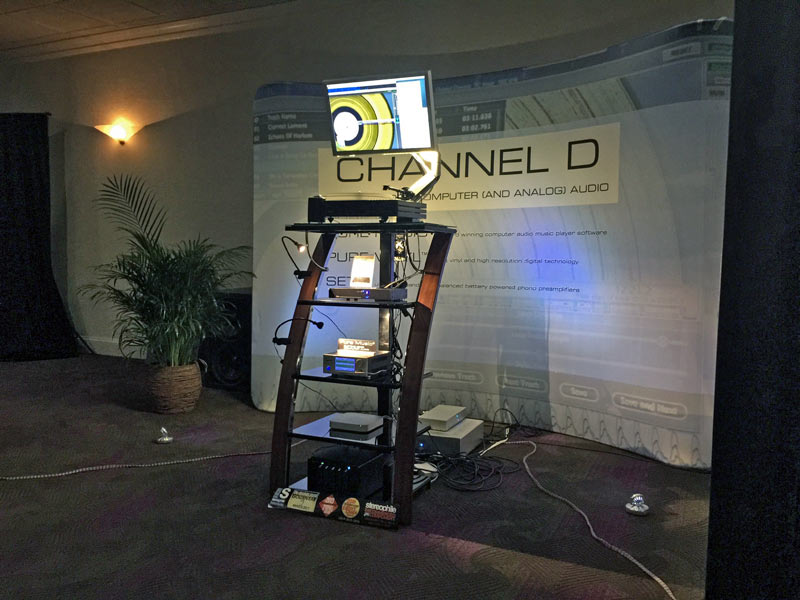
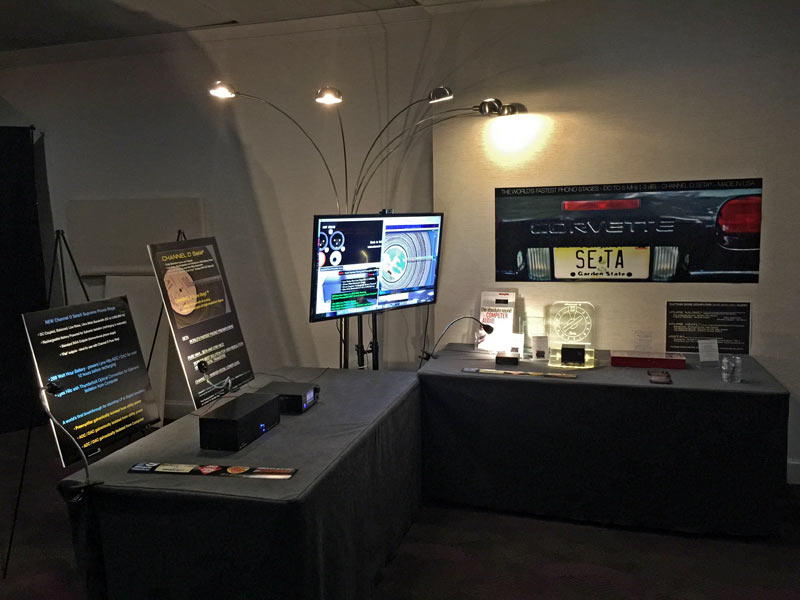
Vinyl Ripping Seminar:
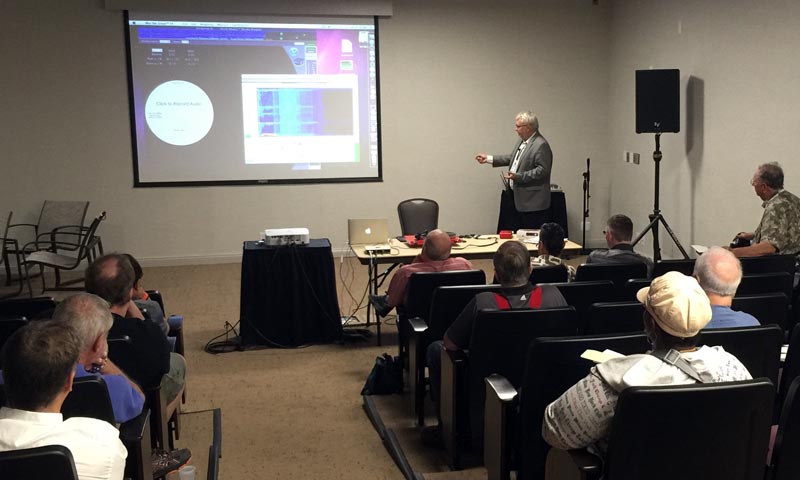
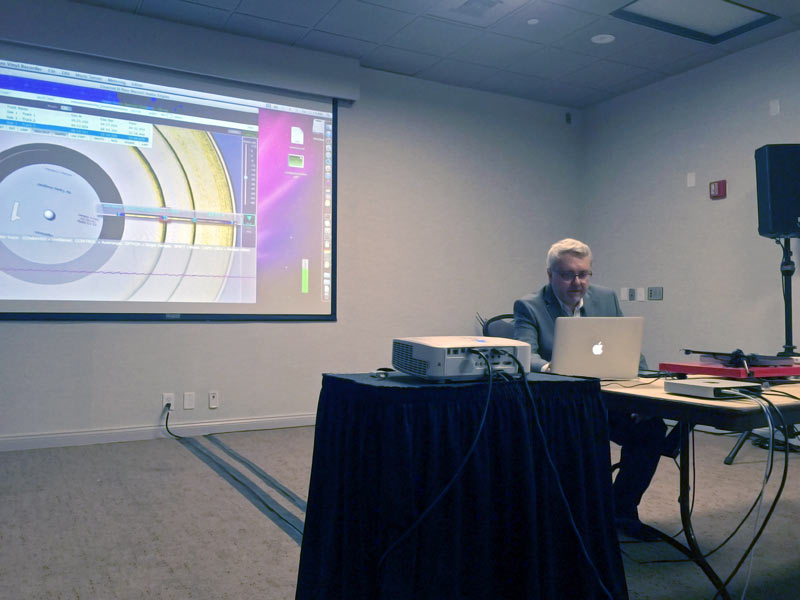
July 2016
Channel D will be at Capital Audiofest - and Previewing Pure Vinyl 5!

Come see us in the Regency Ballroom - we'll have the same tri-amped audio system we had at AXPONA, and will be giving our popular Vinyl Ripping Session seminar, 10:15 Saturday morning in the Auditorium.
- Pure Vinyl 5 will be a free update for recent purchasers (details to follow)
- No more typing in track names! Yes!
- Improved Automatic Track Finder - even works without track time "hints"
- Incorporates Pure Music 3 with updated UI
- Plus much much more...
June 2016
Pure Music 3 Review in MojMac (Poland) - 5 out of 5 stars
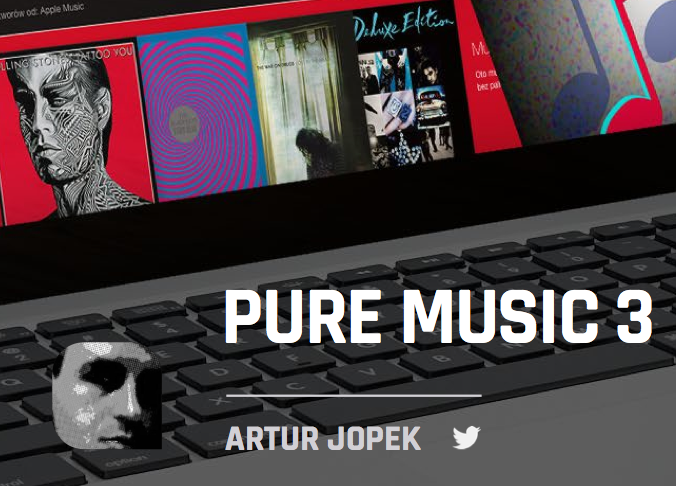

Click to download issue (review starts on Page 74 - note - written in Polish).
May 2016
Intervention Records featuring Sound Samples of their AAA LP catalog created using Pure Vinyl
Click for Intervention Records website
April 2016
Channel D at AXPONA 2016 (our 8th consecutive showing at AXPONA) - Wabash Room and Manufacturer's Showcase
Press coverage
Part Time Audiophile
Stereophile
EnjoytheMusic
Analog Planet
Our exhibit room system consisted of:
- Channel D Pure Music and Pure Vinyl software ($129 / $299)
- Mac Mini (controlled using Screen Sharing and a MacBook Air) ($799)
- Apple Cinema Display with TrollTouch resistive touchscreen overlay
- Music Hall MMF 9.3 turntable ($2200), Ortofon Cadenza Bronze cartridge ($2300)
- Channel D Seta Model L Phono Preamplifier ($3800)
- Lynx Hilo ADC / DAC ($2500)
- Music Storage: Synology DS-513 RAID 6 NAS 9 TB ($1700)
- Wall panels and corner bass traps from ATS (ca. $1200 total)
- Wisdom Audio D75 Adrenaline Planar Magnetic Loudspeakers (discontinued; ca. $28,000 in 1995)
We omitted the analog 2-way electronic crossover of the Wisdom speakers (what we feel is their Achilles heel) and implemented the crossover using the built-in crossover feature in Pure Music / Pure Vinyl, in conjunction with 6 output channels from the Lynx Hilo DAC. This improved definition and removed the slight haze caused by the analog electronics and its multiple and complex op-amp based filters. The system was tri-amped with a Hegel H20 power amplifier ($6000, 200 watts per channel) driving the panels and digital power amplifiers supplying 2000 watts per channel driving the bass and sub bass speakers (all located behind the backdrop). The bass was time-aligned to the panels using the digital delay feature in the Pure Music / Pure Vinyl crossover. Therefore, the bass speakers could be positioned for best tonal uniformity and coverage, while the panels could be positioned for best imaging. (Those locations are almost never the same.) More than one group of attendees remarked something along the lines of "you realize that you are embarrassing the big guys?"
See you next year at AXPONA!
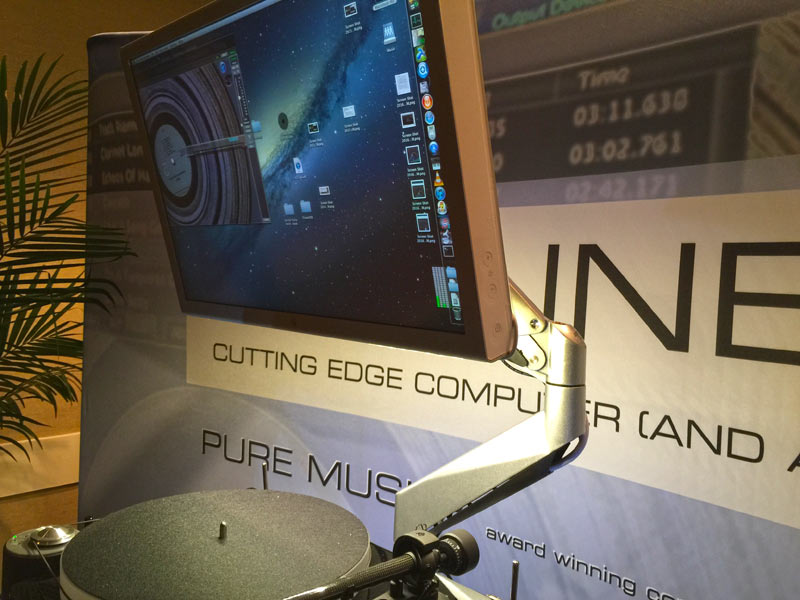
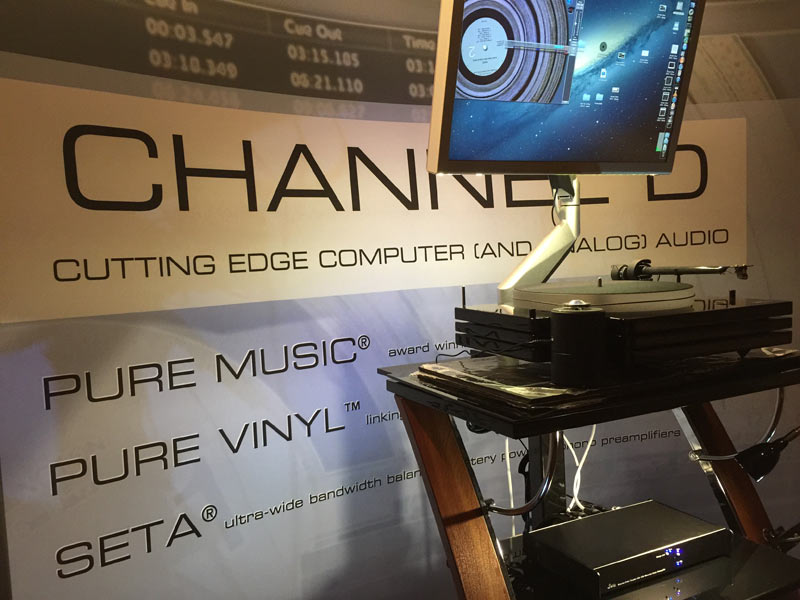
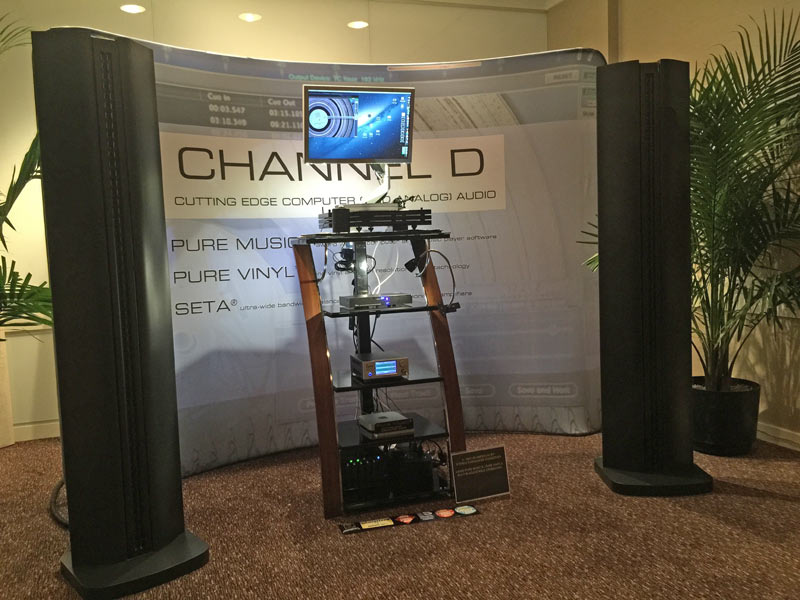
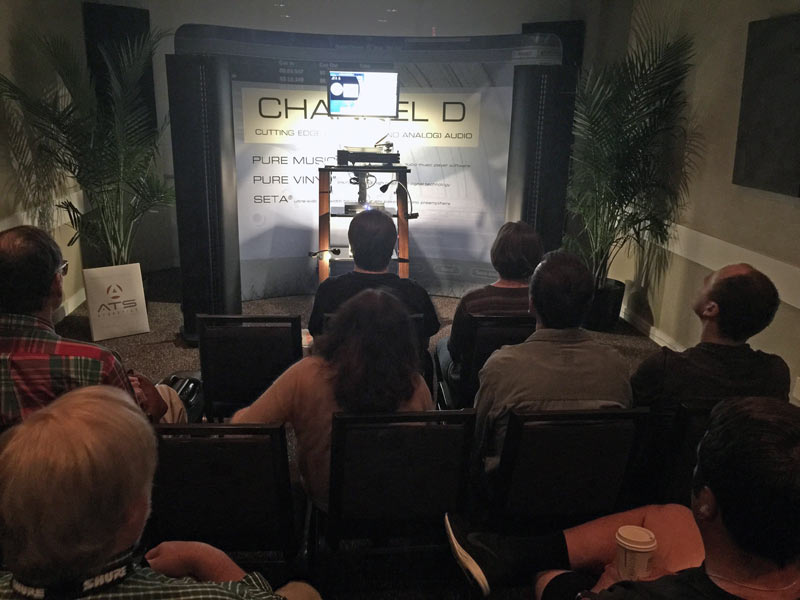
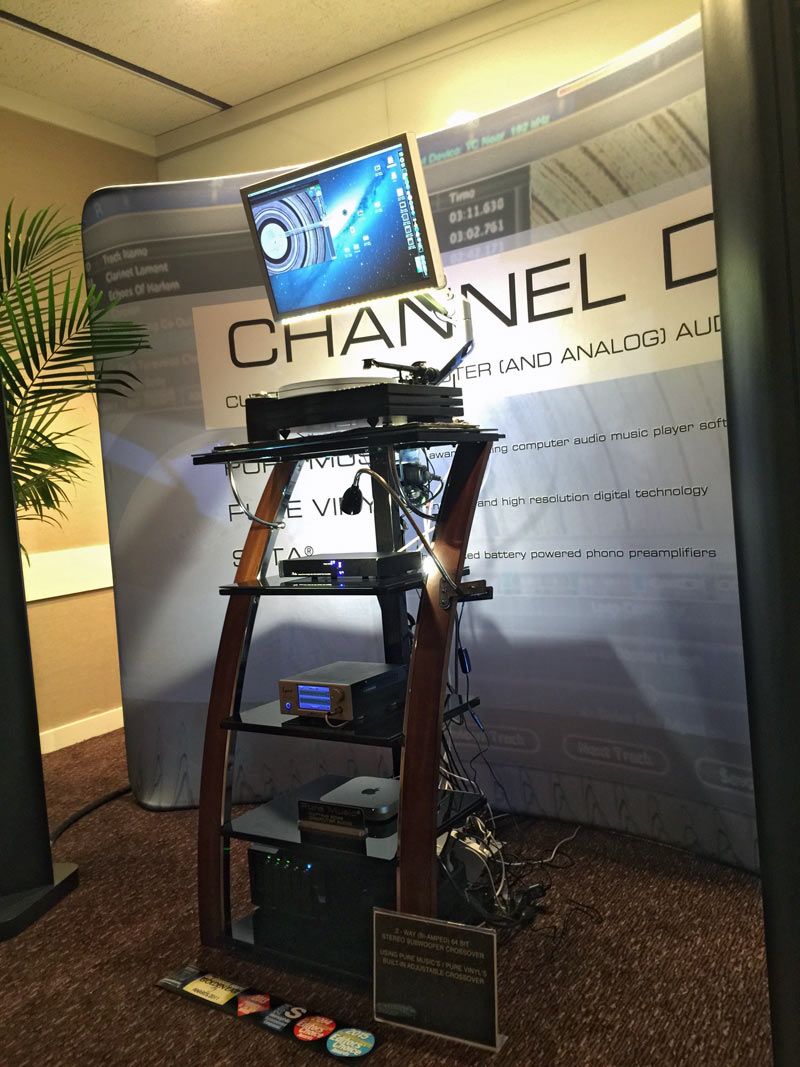
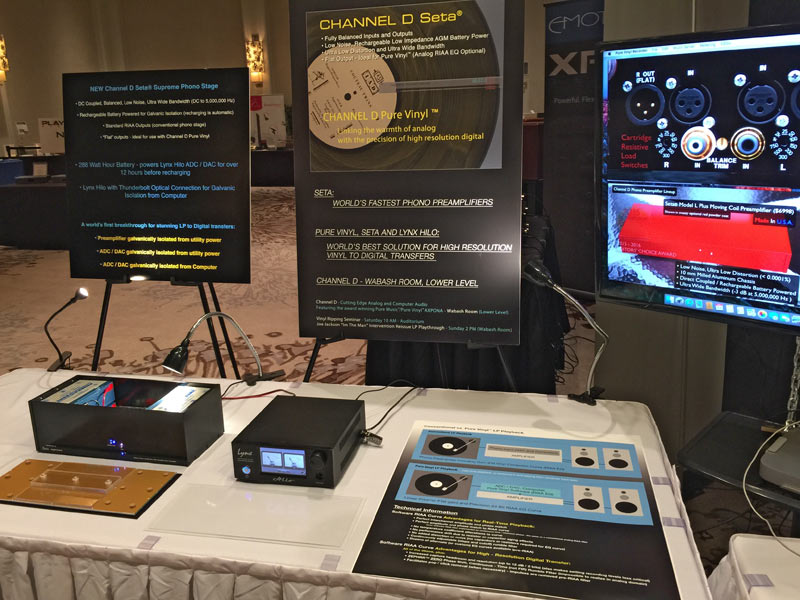
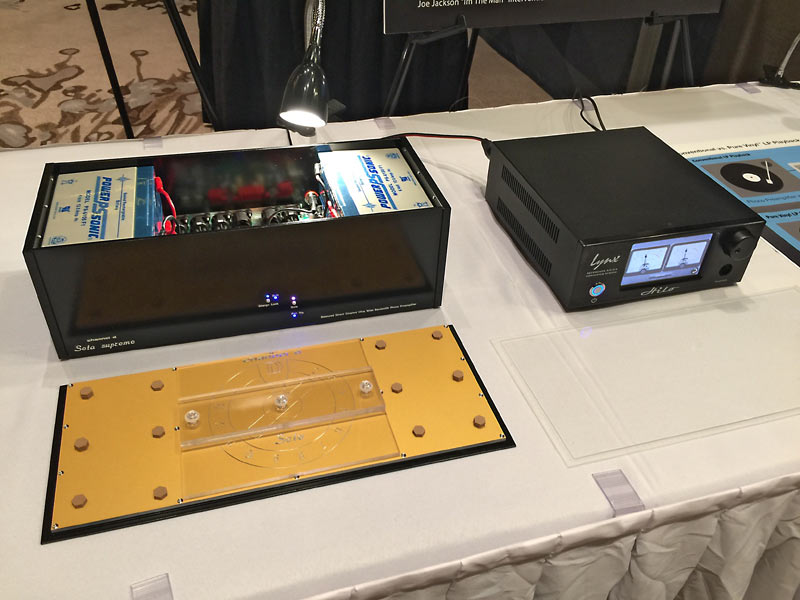
Vinyl Ripping Seminar:
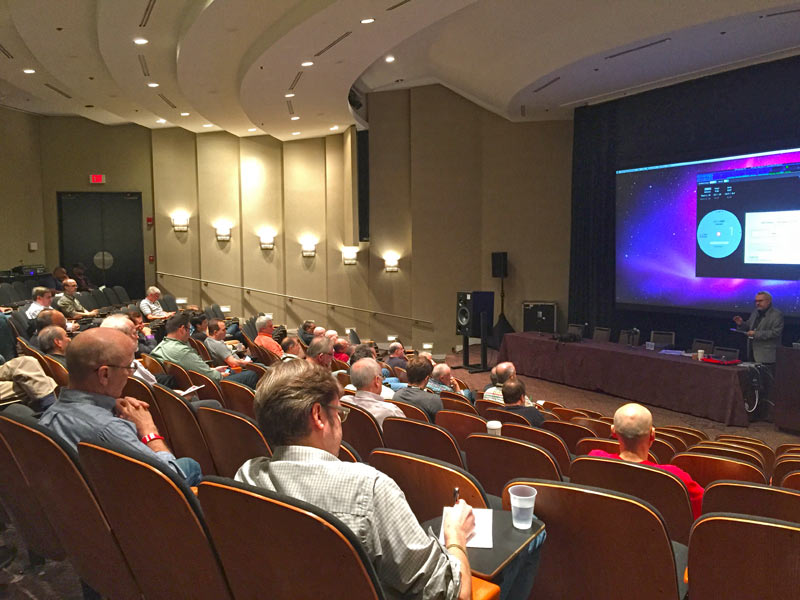
April 2016
Channel D will be at AXPONA 2016 Chicago
Be sure to visit our exhibit room at AXPONA 2016 (April 15 - 17, 2016). We'll be in the Wabash Room (lower level) with a very special audio system, and also occupying a place in the new Manufacturer's Showcase.
We'll also be hosting a couple of special events:
- Vinyl Ripping Seminar - Saturday at 10 AM in the Auditorium
- Co-hosted with Intervention Records in our exhibit room: hear Joe Jackson's I'm The Man played in its entirety and be eligible to win a complete (IR-001 through IR-007) set of Intervention's AAA LP Reissues (Prize Drawing) - Sunday at 2 PM
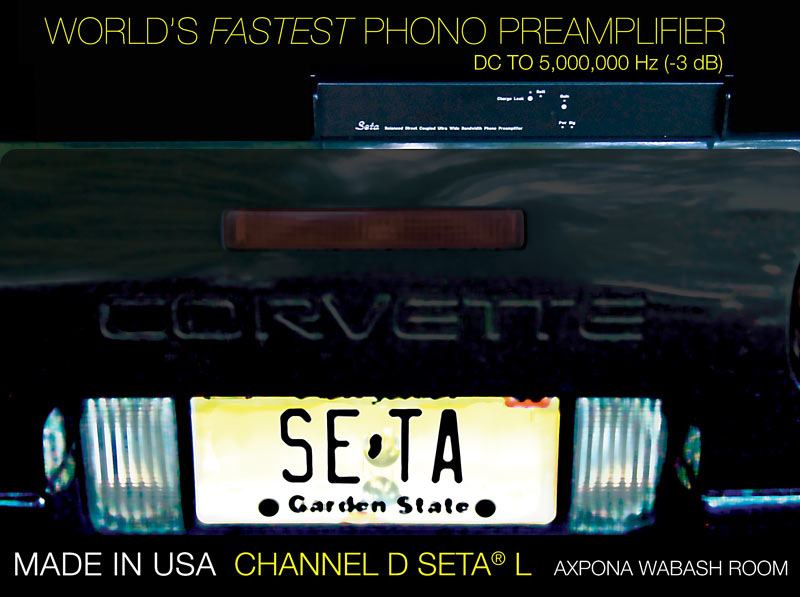
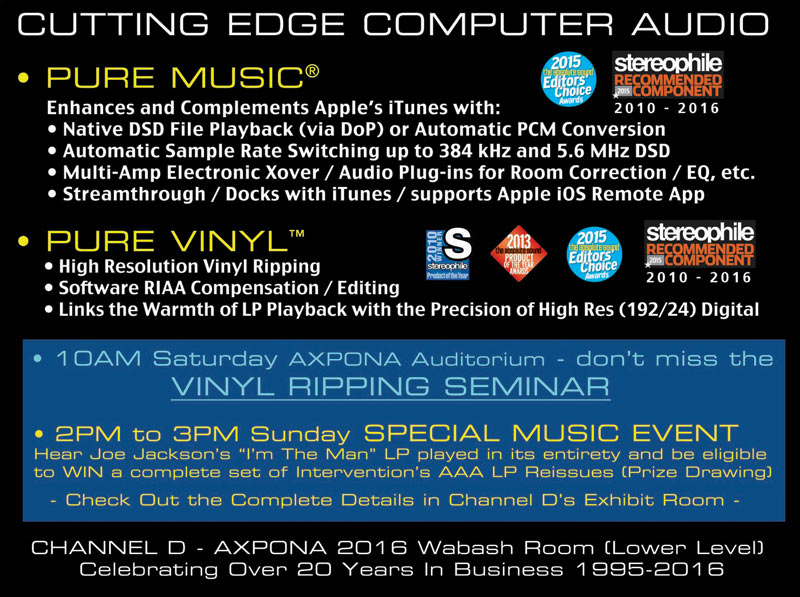
March 2016
Review of our RMAF Exhibit Room in The Absolute Sound
Robert Harley (see article by-line) writes about our unusual demo at the 2015 Rocky Mountain Audio Fest. His report of our exhibit room confirms our contention that the fidelity of a high quality front end music source (here, Pure Vinyl via our Seta phono stage) is evident even using inexpensive speakers for playback. click for article
February 2016
RMAF 2015 Vinyl Ripping Session Seminar Video Posted
Click for video
January 2016
Channel D Lino phono preamplifier review in Positive Feedback
"The soundstage is wide and deep. LP noise seems to be less and yet I feel I am hearing more. More air. More extension. And certainly more slam and dynamics. Drive. Punch. Quiet and sweet. The Lino sounds very accurate without being analytical." Click for full review
December 2015
Channel D Lino phono preamplifier honored with Positive Feedback Brutus Award
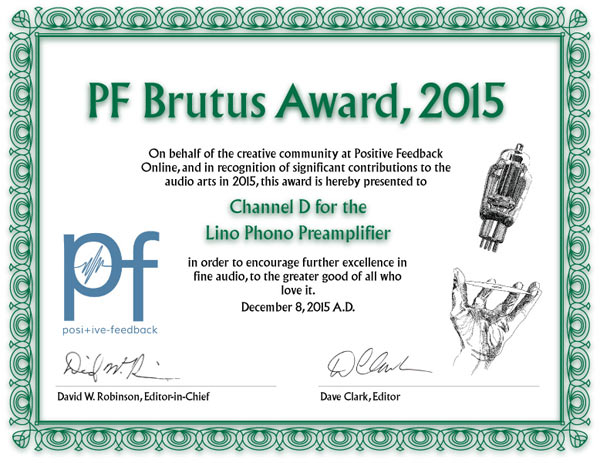
...dynamically a stunner. Extended as all get out, dead quiet, slam and punch, coherency, tonally balanced...
November 2015
Pure Music V3 Review - Mono And Stereo
"...it's just go for PureMusic. We absolutely love it." - Kurt Lassen
November 2015
Pure Music V3 Review - Part Time Audiophile
"Sound was rich and open, but I think I can sum up the experience in one word: clarity. It felt like nothing was standing in the way of the performance..." - Lee Scoggins
November 2015
Enjoy the Music's review of our Seta Piccola phono preamplifier: "Much more than a great phono preamp"
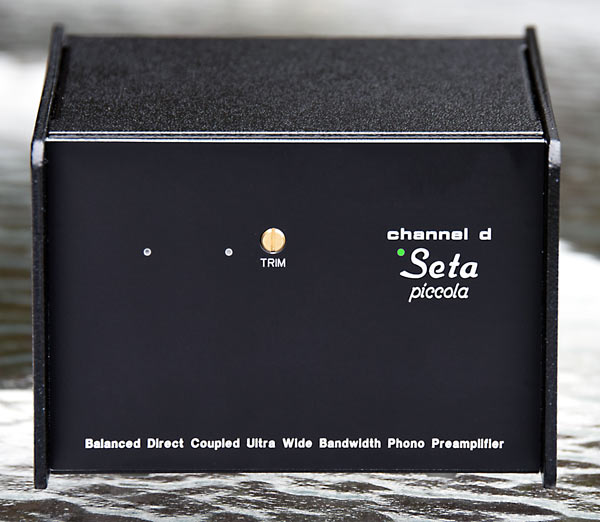
"Its greatest asset is its transparency, so transparent that when listening to records I forgot it was in my system. That's the nicest thing that I can say about a component where its main purpose is to boost the signal from a phono cartridge. That it does so with causing as little harm as possible is not as easy as one might think. The Seta Piccola Mk2 manages to do this, and at the same time gets out of the way of the signal it is processing. I highly recommend the Seta Piccola Mk.2 for anyone looking for a phono preamp anywhere near its price." Click for full review
October 2015
Channel D at Rocky Mountain Audio Fest (our 10th consecutive appearance at RMAF!)
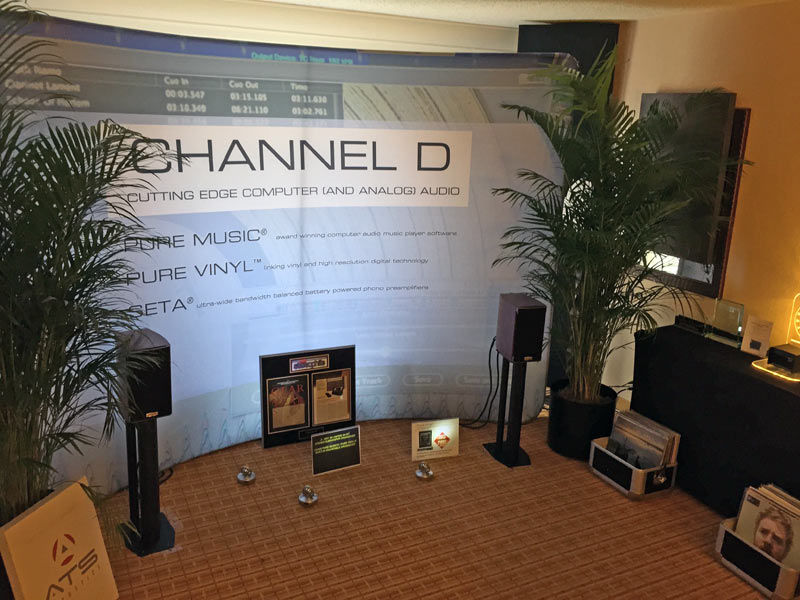
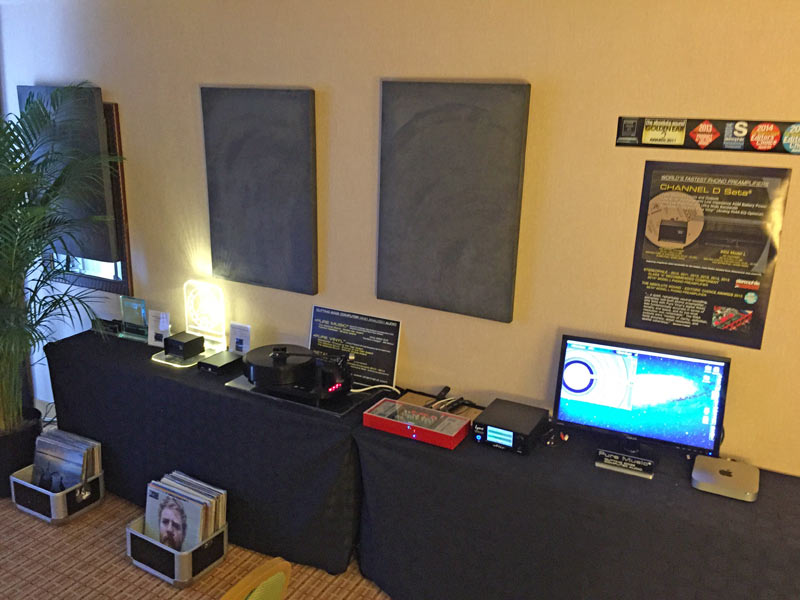
Channel D Exhibit, Room 490
After many years of being congratulated for having a "good sounding room" (putatively because of having "good sounding speakers") we decided to prove that there is more that goes into getting good sound than the speakers. The room setup, treatments (from ATS Acoustics) and playback front-end are paramount. Provided that all of those are optimal, then the sound quality will shine through, regarless of the speakers which are used (provided there is a certain minimum level of quality there). So we took a step back to 2009/2010 and used the same speakers we did at RMAF and AXPONA: Polk RTI-A1 bookshelf speakers, which cost less than $300 per pair new at Amazon. We covered the markings on the speakers, so that "brand bias" did not enter into the picture. Judging by the reactions from press (see Audiostream coverage linked below) and attendees, we were successful. :-)
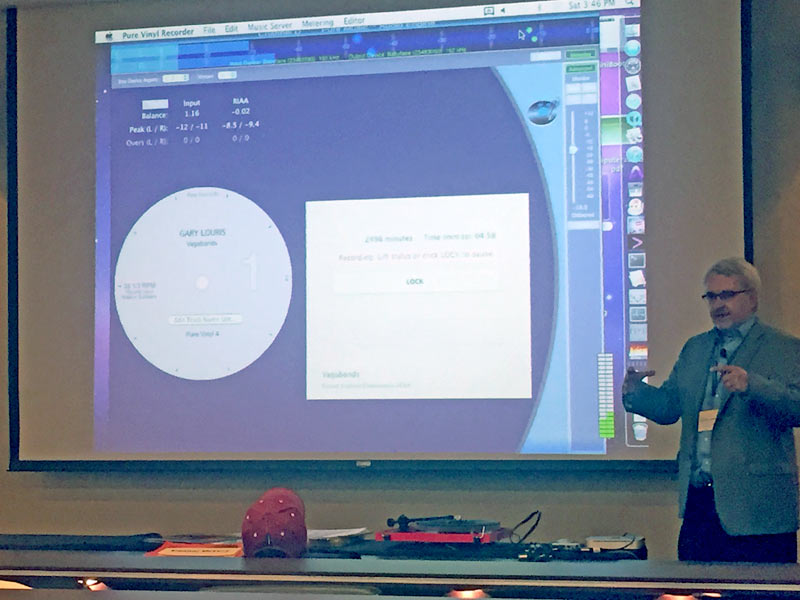
"Vinyl Ripping Session" Seminar
Press Coverage
Positive Feedback Online: RMAF 2015 - Part 3 by Carol Clark
Part Time Audiophile: RMAF 2015: Pure Music 3, More Better
Audiostream: Pure Music
Stereophile: The 2015 RMAF: Postscript
September 2015
NEW Pure Music V3
Pure Music Version 3 includes over 40 new features and performance enhancements. There have been extensive UI and responsiveness improvements under the hood resulting in greatly improved performance.
We are thrilled to say - this is the best Pure Music ever!
September 2015
$1598 Channel D Lino Phono Preamp / ADC surpasses $4500 Audio Converter
"22nd of September 2015. My Lino Phono Preamp/192/24 ADC-DAC arrived yesterday. Disconnected my Prism Sound Orpheus and the Lino was plugged in to my system of Mac Mini, VPI Classic (balanced output) and low output ZYX R1000 Airy 3 MC cartridge. Some adjustment had to be done: load, gain and some other things but basically plug and play.
"And what a relief. Now everything became quiet, much less system (almost dead quiet) and surface noise. Soundstage increased and a more coherent sound appeared with no loss of resolution compared to the Prism. And this was straight from the box.
"When you hear this you can tell the Lino is made for vinyl. Prism Orpheus is a great sounding Sound Card even with vinyl but the Lino made a huge difference."
- Raymond Strid, (Musician), Sweden
September 2015
Channel D To Present "Vinyl Ripping" Seminar at RMAF
Saturday, October 3, Aspen Amphitheater - bring your questions about making high resolution LP to Digital Transfers (and more): Vinyl Ripping Session
August 2015
Channel D Exhibiting at Rocky Mountain Audio Fest
Our 10th time in a row exhibiting at Rocky Mountain Audio Fest (more than all of the other audiophile computer audio music player software companies combined)! Stop by to say hello at Rocky Mountain Audio Fest.
July 2015
Channel D Presentation at San Francisco Audio Society Event
Click here for the Full Report: Channel D Event Report by David Hicks
April 2015
NEW! Channel D Lino Moving Coil Phono Preamplifier

Ultra Low Noise, Ultra Low Distortion, Wide Bandwidth Moving Coil Phono Preamplifier
- World's First Phono Stage with 192 / 24 ADC and DAC for Vinyl Ripping and Computer Audio Playback (Driverless operation on Mac platform)
- 200,000 Hz (-3 dB) Analog Phono Stage Bandwidth
- Ultra Low Noise and Ultra Low Distortion (less than 0.0007% THD 20 Hz - 20 kHz)
- Precision (+/- 0.1 dB) RIAA Output
- Direct Coupled; Balanced and Single Ended (Unbalanced) Inputs and Outputs
Now Shipping!
- With "flat" output only $1199 (use with Pure Vinyl™ Software and external ADC/DAC)
- As stand alone conventional RIAA phono stage $1448
- With built - in 192/24 ADC/DAC $1598
April 2015
Channel D at AXPONA Chicago (our 7th consecutive appearance at AXPONA!)
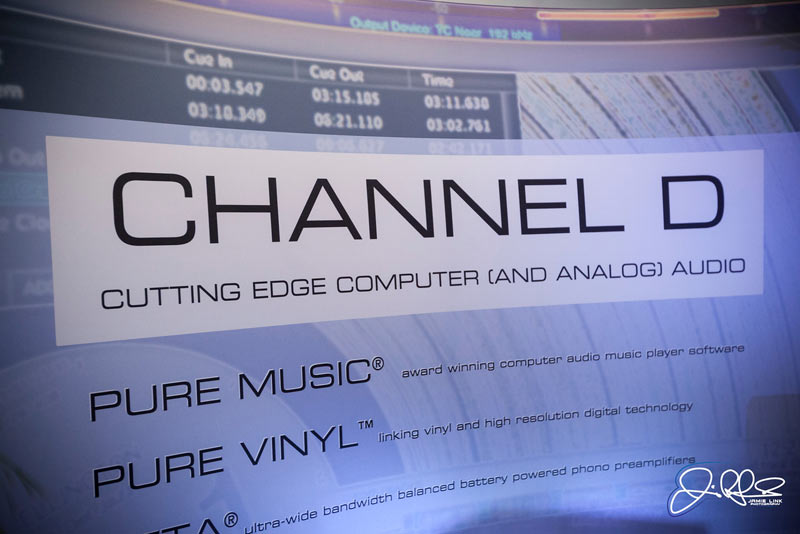
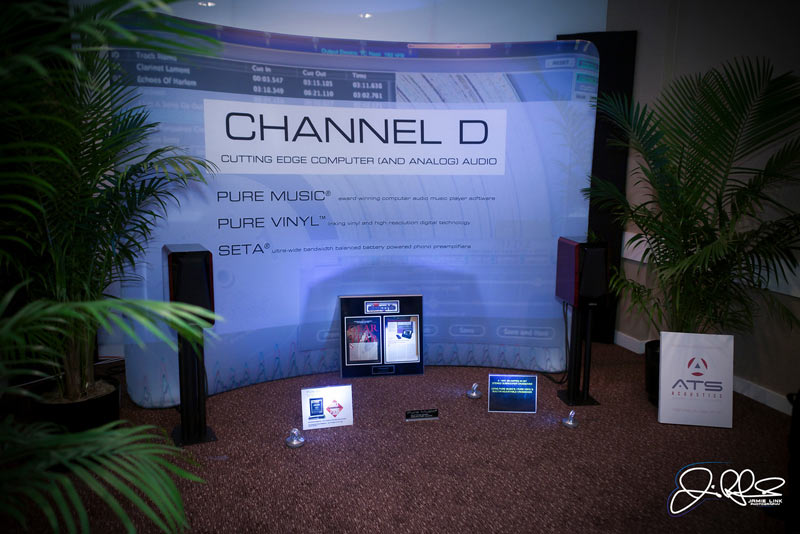
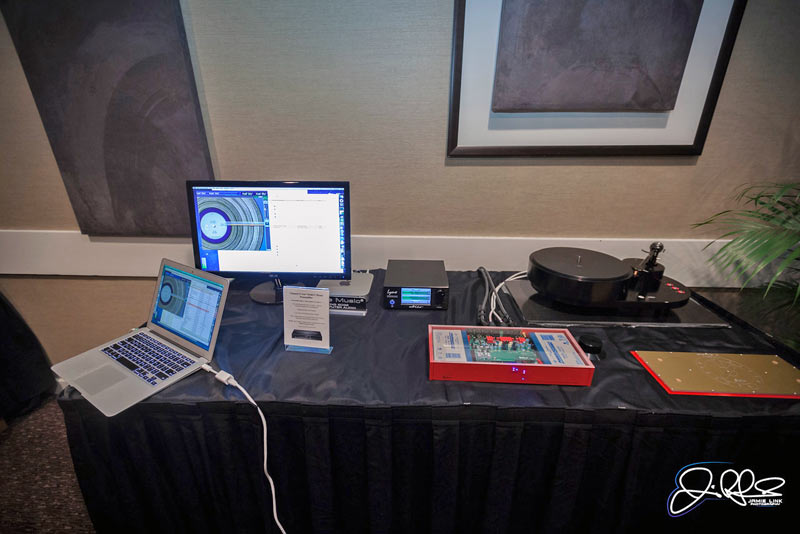
Channel D Exhibit in the Wabash Room
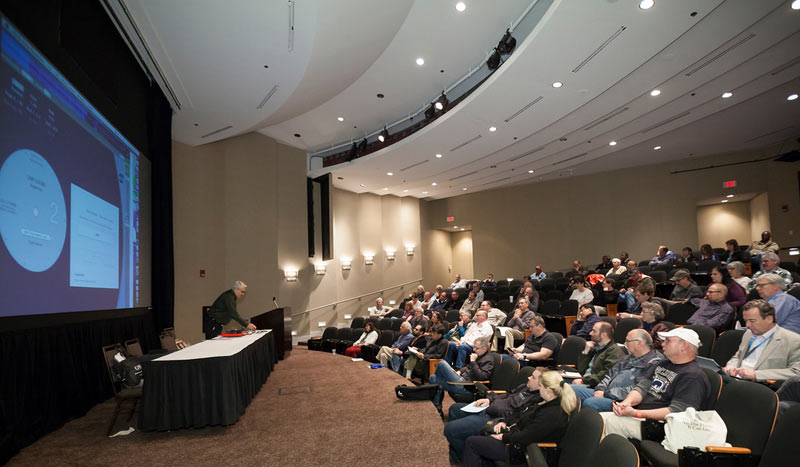
"Vinyl Ripping Session" Seminar
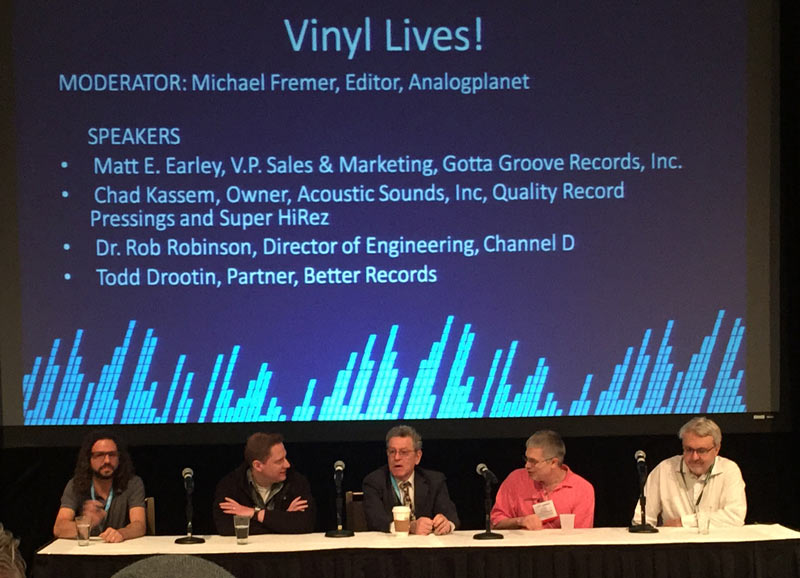
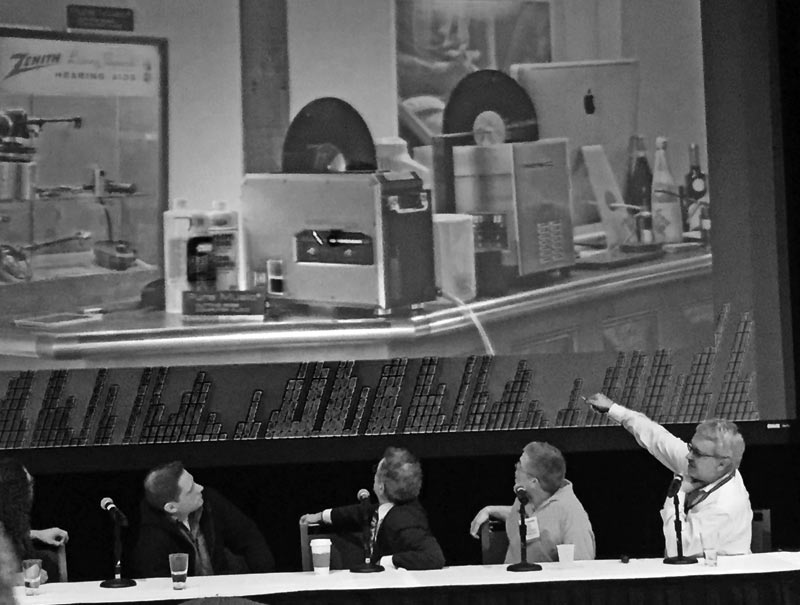
"Vinyl Lives" Panel Discussion
March 2015
Pure Music 2 reviewed in NOMONO (Denmark)
Click for Review (in Danish): Pure Music, nothing but Pure Music
February 2015
The Absolute Sound Editors' Choice Awards - March 2015 Issue
 for Pure Vinyl for Pure Vinyl
 for Pure Music for Pure Music
 for Seta Phono Preamplifier for Seta Phono Preamplifier
February 2015
Pure Music 2.0.3 Update Released
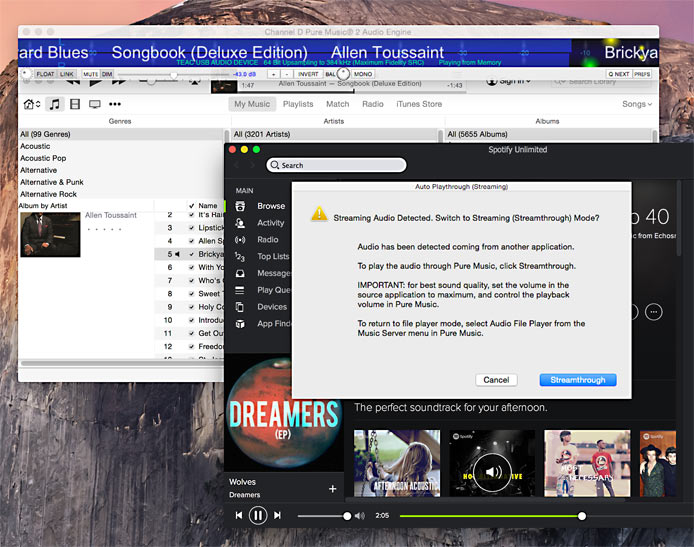
The 2.0.3 Update addresses performance issues with iTunes 12.1, an Unexpected Quit issue with Playthrough / Streamthrough, enhancements to Streamthrough, as well as including additional bug fixes and performance enhancements, and is recommended for all users.
Pure Music 2.0.3, available for download now from the Channel D website, brings enhancements to its Streamthrough streaming audio technology. Streamthrough permits conveniently playing and enhancing other computer audio sources through Pure Music, with full access to Pure Music's dithered volume control, 64 bit crossover, audio EQ plug-ins, NetSend streaming, metering, etc., all without needing to quit Pure Music.
Streamthrough has been included with Pure Music for the last 4 years (making Pure Music the first computer audio software to offer this feature, by a considerable margin). However, Streamthrough has been enhanced and refined even further in Pure Music 2.0.3, making it the most advanced and automated such offering available.
Streamthrough is fully integrated with Pure Music. There is no need to purchase or launch a separate application! Even better, switching to Streamthrough is AUTOMATIC - if you play an Internet radio station in iTunes, or TIDAL, Qobuz, Spotify, YouTube, etc., the audio is "automagically" detected and switches Pure Music from file play to Streamthrough mode!
In addition, Pure Music 2.0.3 includes improvements to address performance issues with iTunes 12.1, which was recently released by Apple.
News release in The Absolute Sound
News release at Audiostream
January 2015
Pure Music chosen as one of Mac Edition Radio's The Best of 2014 Top Ten High-Resolution Audio and Musical Picks To Start The New Year!
Mac Edition Radio's The Best of 2014 Top Ten High-Resolution Audio and Musical Picks To Start The New Year!
December 2014
Channel D Presentation at New York Audiophile Society meeting
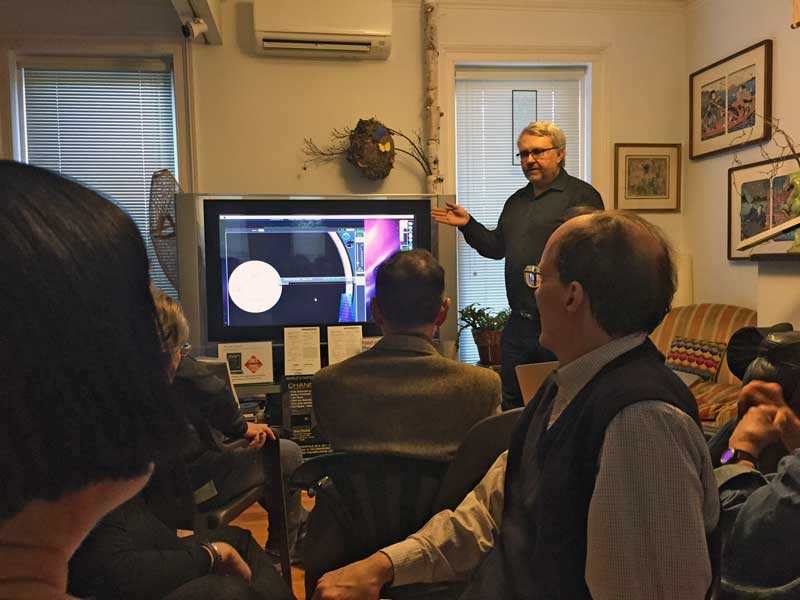
Channel D's Director of Engineering was invited to give a presentation on vinyl ripping to a packed house at the December meeting of the New York Audiophile Society.
October 2014
Channel D at Rocky Mountain Audio Fest (our 9th consecutive appearance at RMAF!)
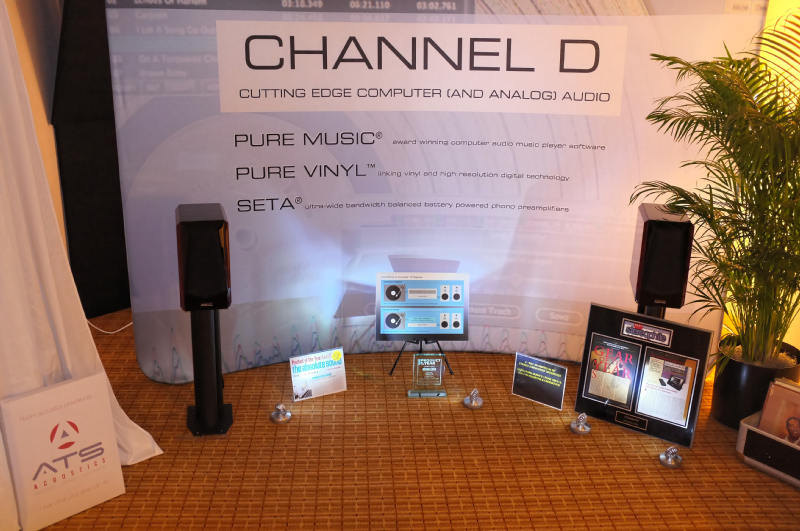
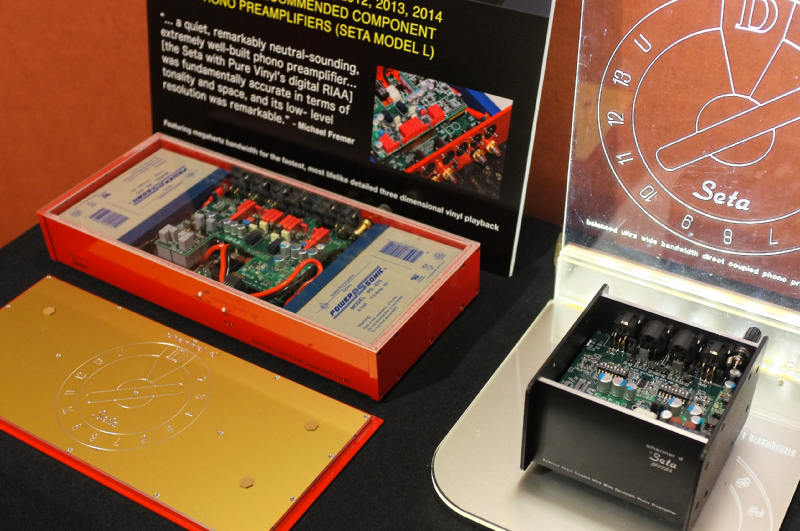
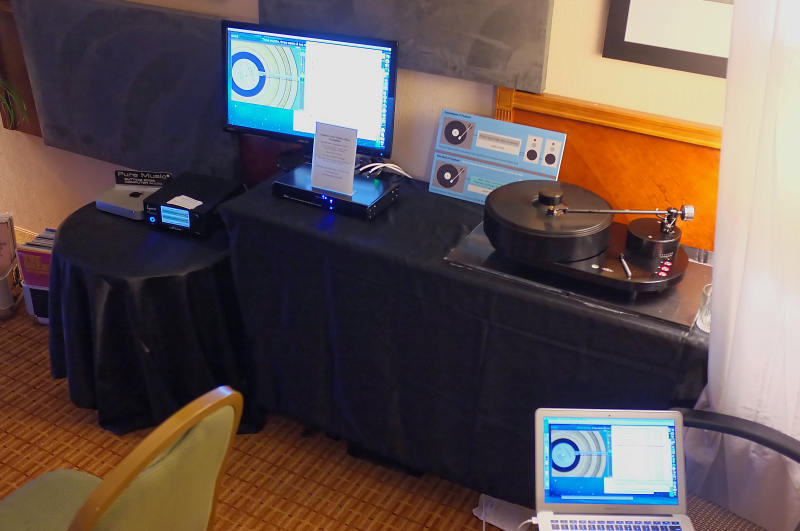
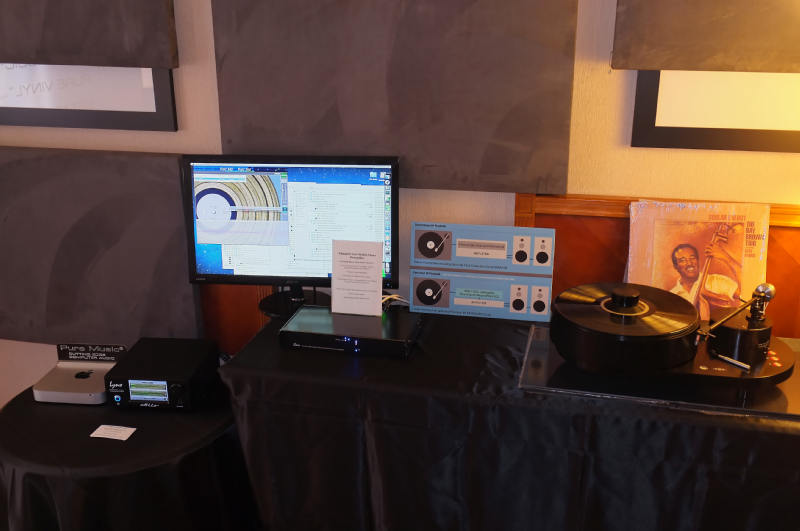
Besides our own exhibit room, Channel D Pure Music could be found in exhibits mounted by Wavelength Audio, Musical Surroundings, Hegel, Audioquest / Vandersteen, Joseph Audio, Spatial, Jeff Rowland Design, and others.
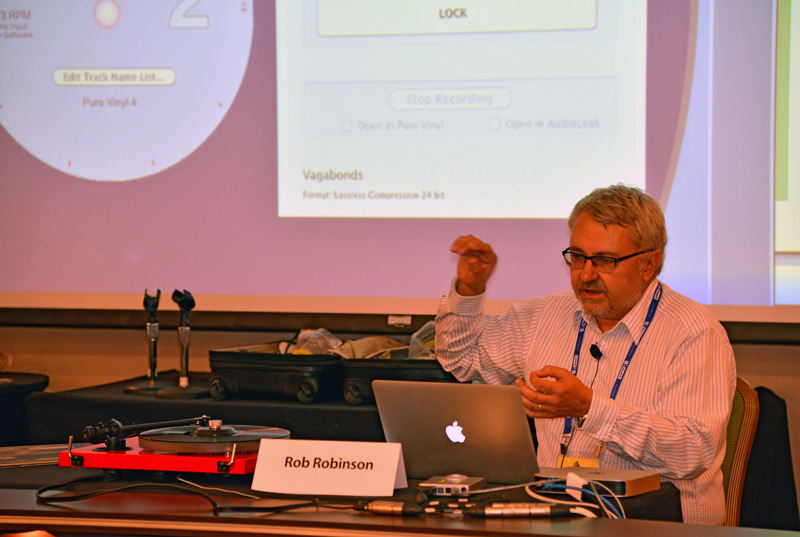
Vinyl Ripping Session Seminar (photo courtesy Roger Schermerhorn)
Press Coverage at RMAF:
Stereophile "The sound of the (24/192 vinyl) rips, played ... with RIAA equalization applied in the digital domain, was simply superb."
Positive Feedback Online
September 2014
Hardware RIAA option for Seta Piccola now available

The optional hardware RIAA module is now available for the Seta Piccola. The price is $299 (must be ordered at the same time as the preamplifier). The specs include less than 0.003% THD 20 Hz to 20 kHz; RIAA curve accuracy of +/- 0.2 dB, 10 Hz - 40 kHz; and right / left channel RIAA matching of better than +/- 0.01 dB, 10 Hz - 40 kHz.
September 2014
Channel D Products listed in Stereophile's "Recommended Components" 2014 Issue
- Pure Vinyl
- Pure Music
- Seta Model L Phono Preamplifier (rated "Class A")
August 2014
Channel D Granted United States Patent US 8,793,580 B2
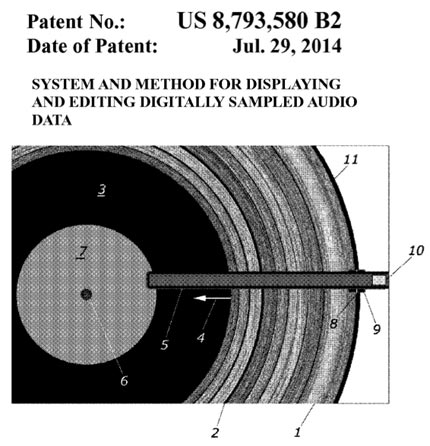
Channel D was granted US Patent #8,793,580 B2 for "SYSTEM AND METHOD FOR DISPLAYING AND EDITING DIGITALLY SAMPLED AUDIO DATA" - in other words, our novel invention for creation of Cue Guide images in Pure Vinyl, used for track editing. This follows our UK Patent #GB2454106.
July 2014
Channel D Pure Vinyl 4 Review at The Pro Audio Web Blog
Rated 4 1/2 out of 5 stars Read full review here
July 2014
Channel D Vinyl Ripping Session Presentation for the Bay Area Audio Society
As covered by Stereophile Magazine (online)
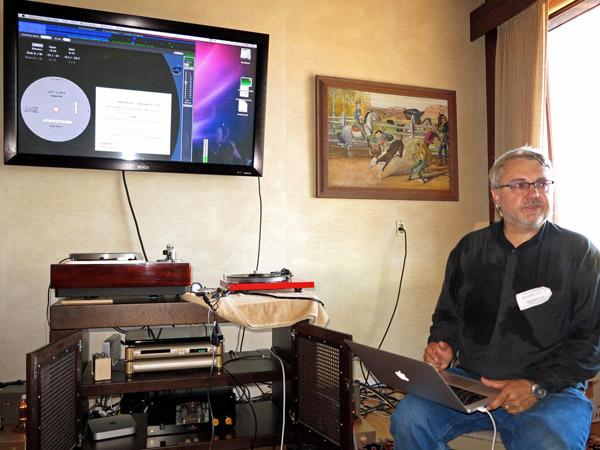
June 2014
Channel D Granted United States Patent US 8,738,163 B2
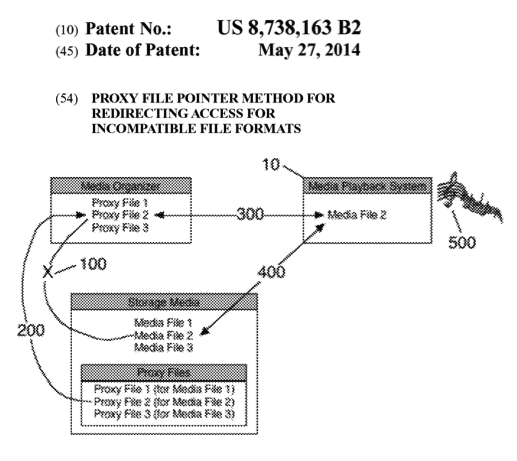
Channel D recently was granted US Patent #8,738,16 B2 for "PROXY FILE POINTER METHOD FOR REDIRECTING ACCESS FOR INCOMPATIBLE FILE FORMATS" - in other words, our novel invention and innovation permitting FLAC and DSD files to appear in Apple's iTunes.
June 2014
Channel D at T.H.E. Newport Audio Expo 2014 (Hilton Room 912)
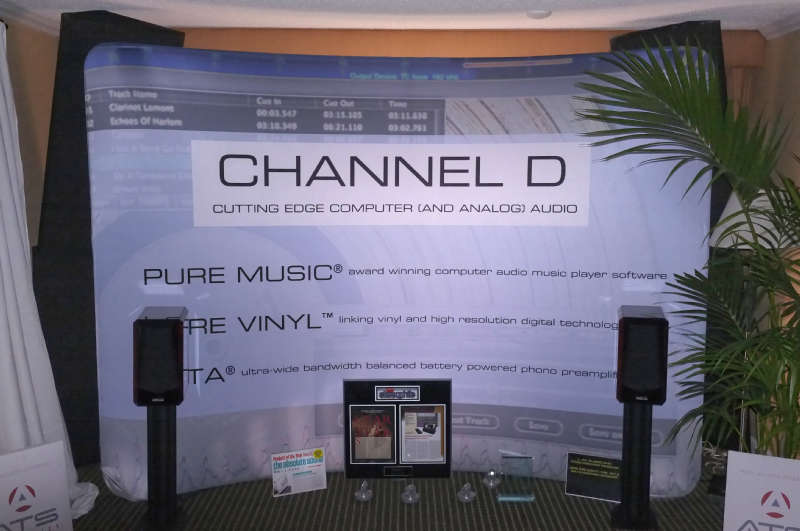
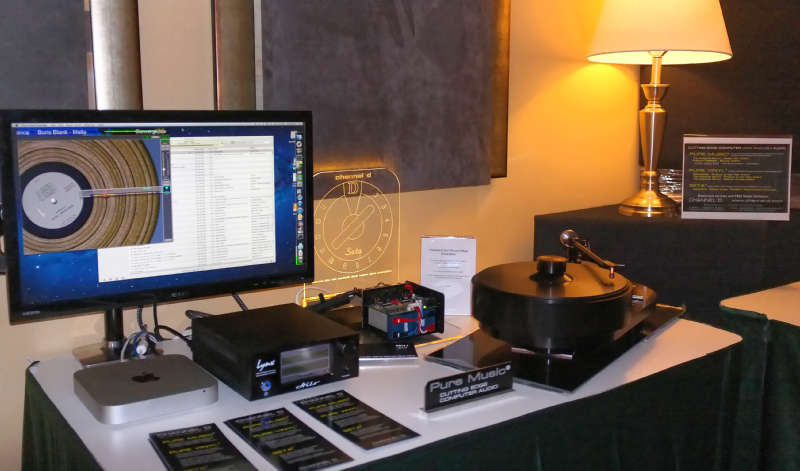
Many thanks to all of our Seta, Pure Music and Pure Vinyl users who were able to find us at the show (despite the show promoter's inexplicably omitting Channel D and our co-exhibitor Lynx Studio Technologies from the Show Guide's Index and Room Listings, and the room directory banners in the hotel lobbies)!
May 2014
Channel D Pure Vinyl and Seta Phono Stage review
Dagogo, May 2014
On Pure Vinyl's digital RIAA and crossover features, used with Pro-Q audio plug-in for room correction: "It's now been quite a few months, and it has not only met my expectations, but exceeded them... For most of my years in the-end audio, I was a "purist." I believed that systems had to be as simple as possible, that only SET amps could provide musical satisfaction, and that CDs were at best, a poor substitute for vinyl. As time has gone by, and as I've experienced new things, I've had to shed many pre-conceived notions, and spit out quite a bit of Kool-Aid. The use of digital processing, not just for room correction but also - heaven forbid-! - for RIAA processing, has been the latest and perhaps most significant step."
May 2014
NEW! Pure Music 2 Released!
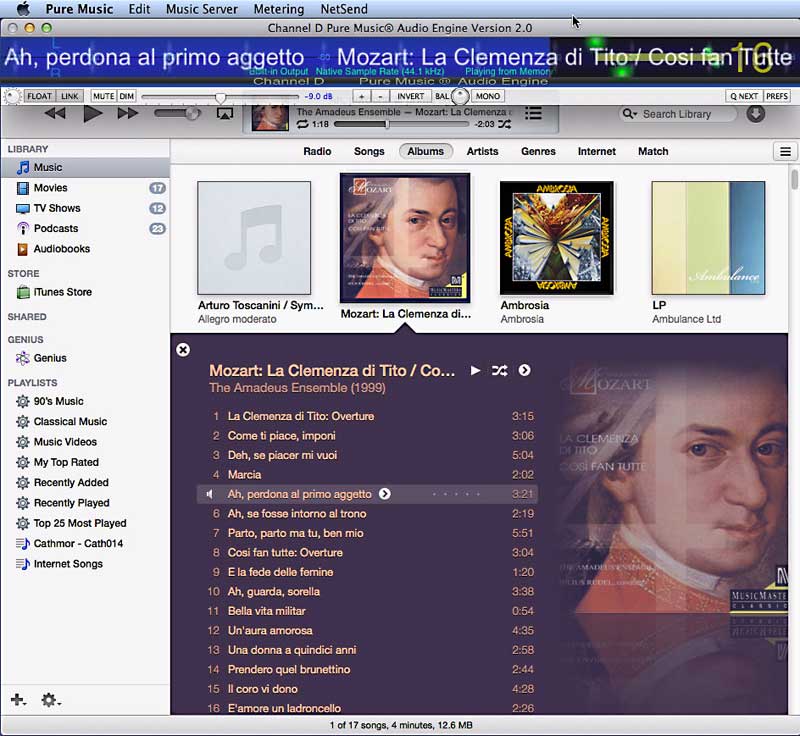
Over 50 new features and performance enhancements in all, since the previous version!
Some of the Significant New Features In Pure Music 2:
Simplified, streamlined new user interface for main controller and metering window
Mastering Quality DSD to PCM File Converter
Improvements to dithering audio quality
Support added for Cocoa UI for AudioUnit Plug-Ins
Jog-style Volume slider with 0.1 dB resolution
Left / Right Balance knob with 0.1 dB resolution
MONO and INVERT buttons in main console for monophonic output or polarity inversion
LINK button allows disabling Pure Music and iTunes automatic window docking
New FLOAT function keeps Pure Music window on top of all others
Meter bar now automatically resizes to full width of iTunes window
Meter bar can be resized independently of iTunes window
New Transparency control to make the meter / controller a see-through window
Meter bar interactively shows volume and balance settings
Can choose location for storing FLAC and DSD Bookmarks
File Converter now provides choice of converting to Apple Lossless or AIFF
File Sample Rate Converter can downsample DXD format (352.8 kHz) files
Configuring Pure Music for a native DSD (DoP) device is now a one-click operation
New Quick Playlist feature for quickly playing FLAC or DSD files (and other formats) via ad-hoc playlists
Numerous Improvements to Playthrough feature
Ensures Played Count and Last Played Date are updated in iTunes
Improvements to Gapless playback track analysis mechanism
Dithering can be used with the Audio File Sample Rate Converter feature
Dithering now active for all volume settings when using Upsampling
Menu command to save all plug-in settings and window positions at once
Menu command to show or hide all plug-in settings windows at once
Added 48 dB/ octave Linkwitz - Riley crossover option to all crossover configurations
PLUS many more additional new features, improvements and bug fixes.
FREE upgrade / download if you have purchased a Pure Music license in the last 15 months. Discounted upgrades are available for a limited time for previous users!
News release at Ultra High-End Audio and Home Theater Review
April 2014
Best Sound (Cost no Object) - AXPONA 2014
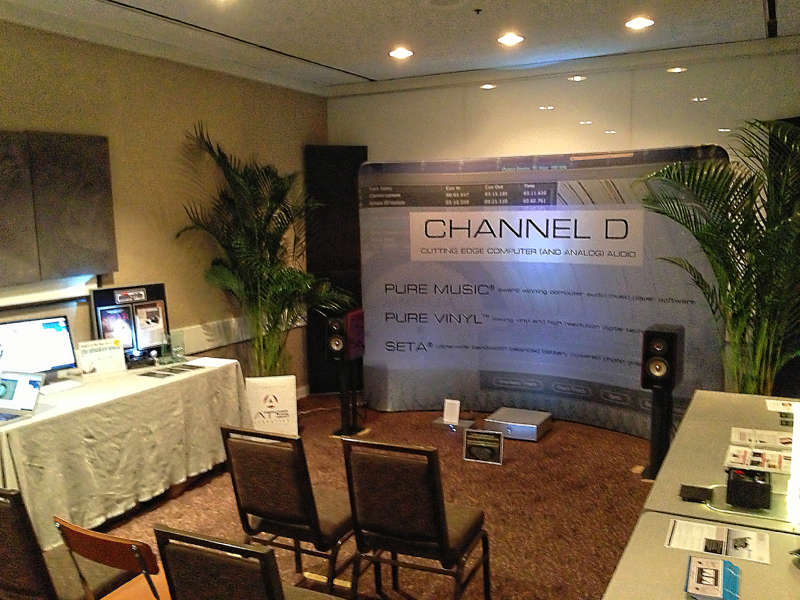
Best Sound Award (Cost no Object) - "Best sound award goes to the Channel D/Lynx Hilo/Hegel/Joseph Audio Pulsar system in the "Wabash" room. Using room correction, corner bass traps and sidewall absorbers from ATS, and precise speaker placement, Channel D was one of the few rooms to get accurate sound." Click for Show Report.
April 2014
AXPONA 2014 - System Setup Details
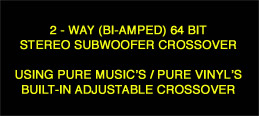 A bi-amped stereo subwoofer setup was needed to attain lifelike listening levels with bookshelf speakers in the large (16x27x10 foot) room. Accordingly, we used the built-in 64-bit adjustable crossover feature of the Pure Music/Pure Vinyl software. Room correction consisted only of bass absorber traps and wall panels from ATS Acoustics, in conjunction with painstaking optimization of the positions - to within less than an inch - of subwoofers and main speakers (aided by Channel D's Mac the Scope measurement software). The crossover used four analog outputs from the Lynx Hilo DAC: two for the Pulsar bookshelf speakers and two for the subs. A second stereo amplifier was used to drive the subs.
A bi-amped stereo subwoofer setup was needed to attain lifelike listening levels with bookshelf speakers in the large (16x27x10 foot) room. Accordingly, we used the built-in 64-bit adjustable crossover feature of the Pure Music/Pure Vinyl software. Room correction consisted only of bass absorber traps and wall panels from ATS Acoustics, in conjunction with painstaking optimization of the positions - to within less than an inch - of subwoofers and main speakers (aided by Channel D's Mac the Scope measurement software). The crossover used four analog outputs from the Lynx Hilo DAC: two for the Pulsar bookshelf speakers and two for the subs. A second stereo amplifier was used to drive the subs.
The subs, which were positioned along the back wall behind the banner, also were time-aligned by delaying the main speakers 2.95 milliseconds using the time alignment feature of Pure Music/Pure Vinyl. Time alignment is a critical but often overlooked aspect of integrating subwoofers into an audio system and is needed to insure that the sounds from the subs and the main speakers arrive at the listening position(s) simultaneously, essential for optimum smoothness, "slam," and definition.
April 2014
Channel D's Director of Engineering - AXPONA 2014 - Guest Panelist on Michael Fremer's "Vinyl Lives" seminar
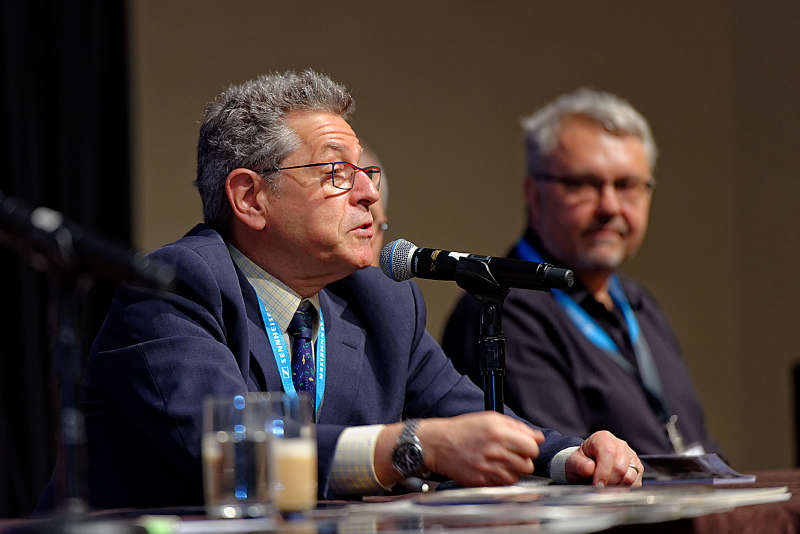
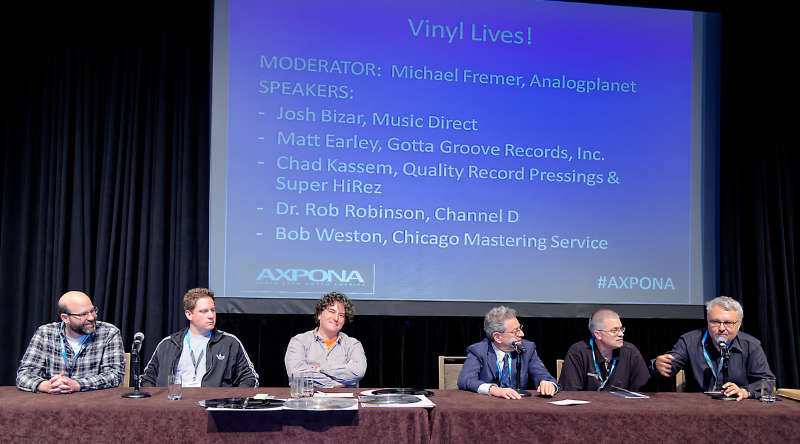
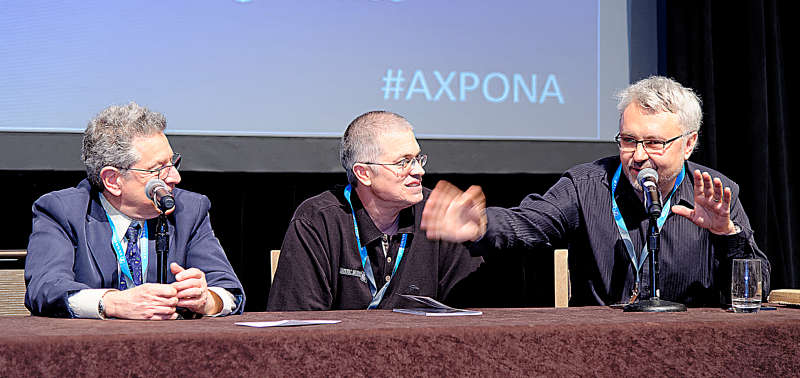
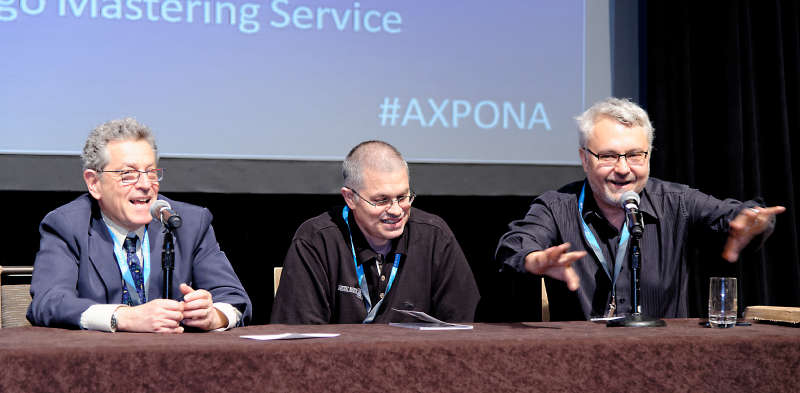
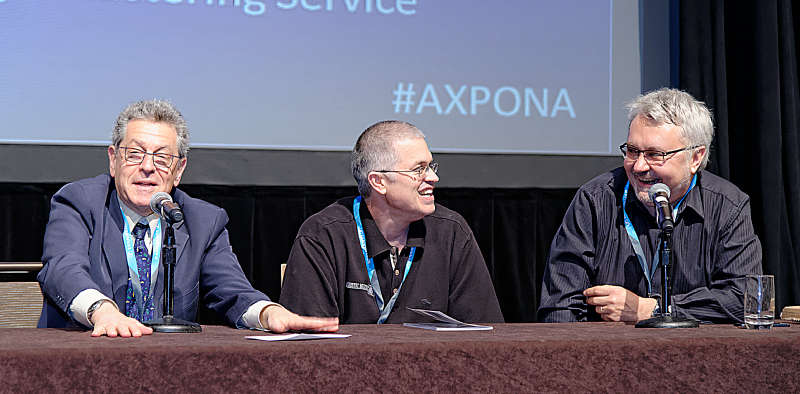
Photos courtesy of Roger Schermerhorn
April 2014
Channel D's Director of Engineering - AXPONA 2014 - EnjoyTheMusic's Live Interview
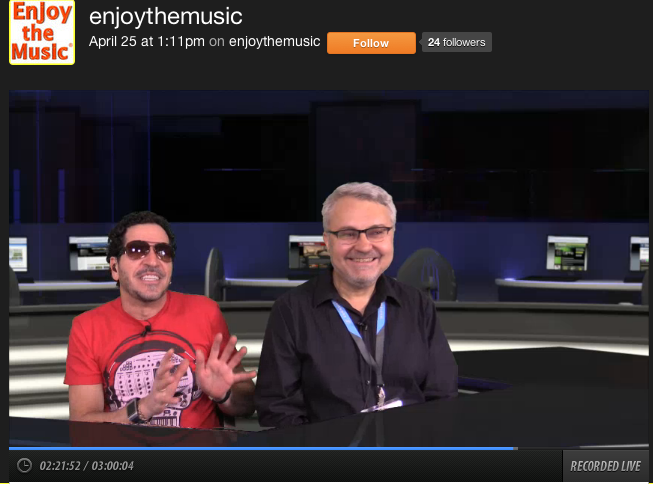
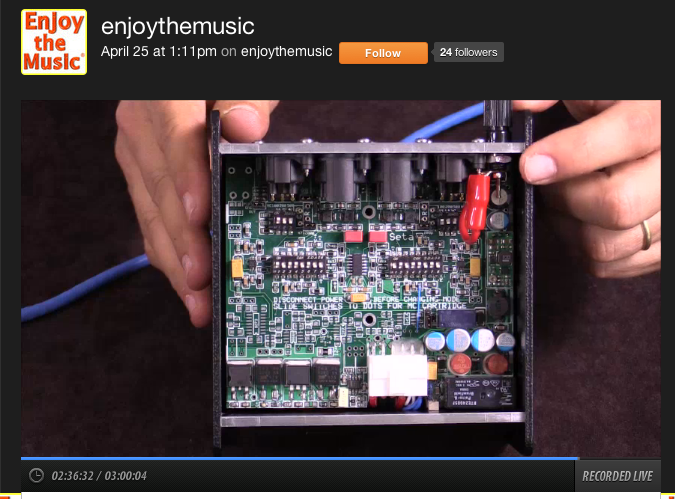
April 2014
Channel D's Director of Engineering - AXPONA 2014 - Vinyl Ripping Seminar
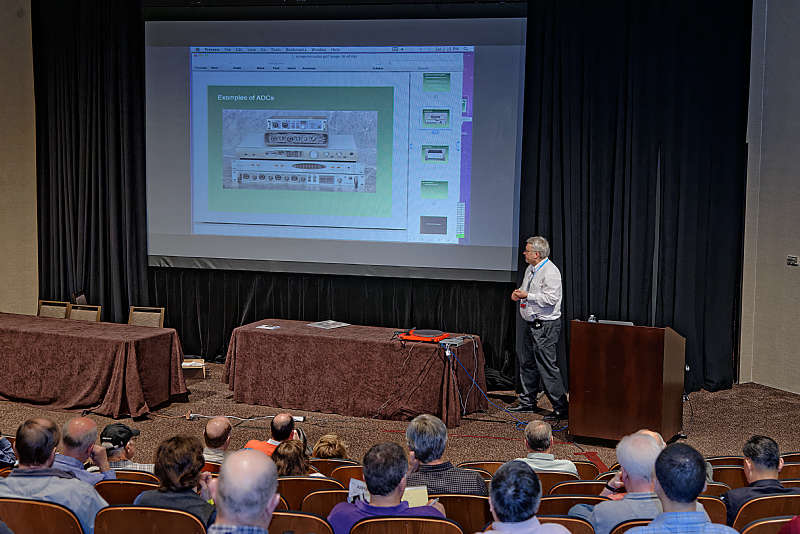
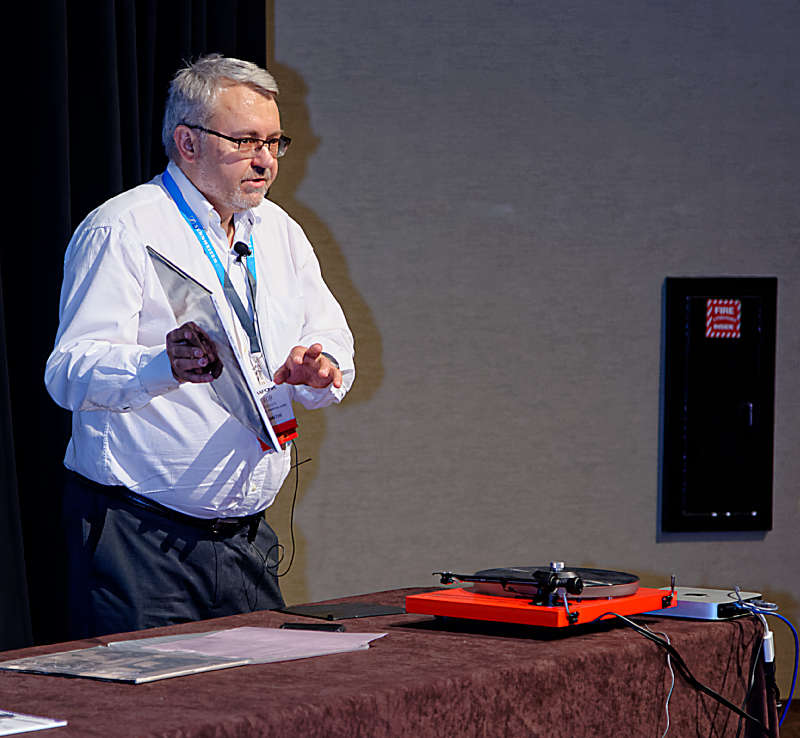
Photos courtesy of Roger Schermerhorn
April 2014
Channel D at AXPONA 2014 (our 6th AXPONA in a row)
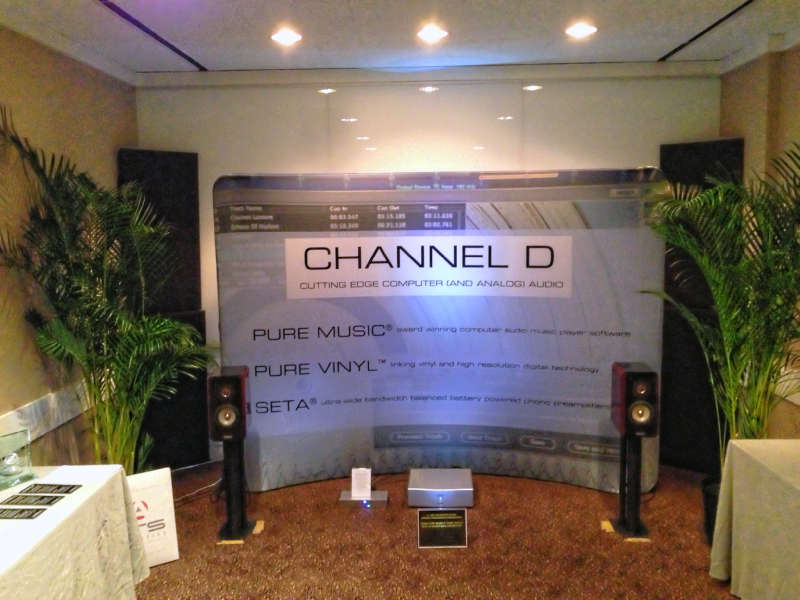
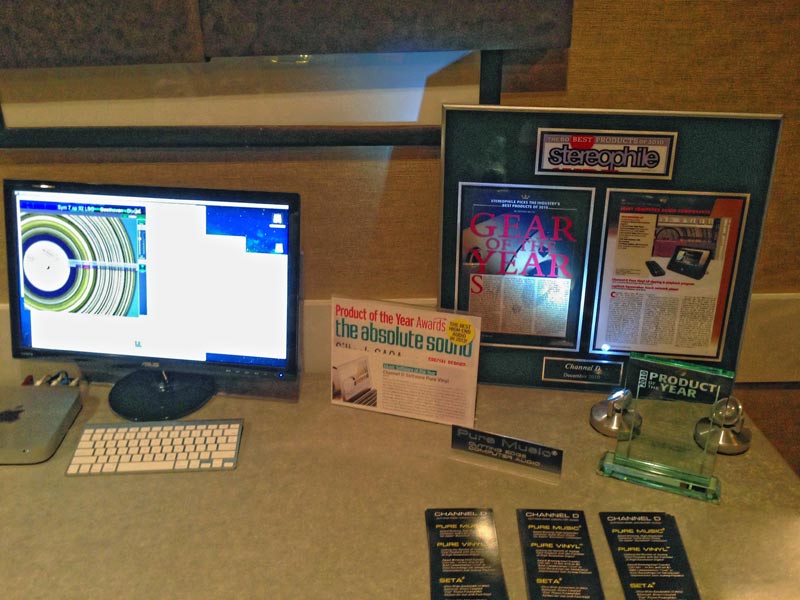
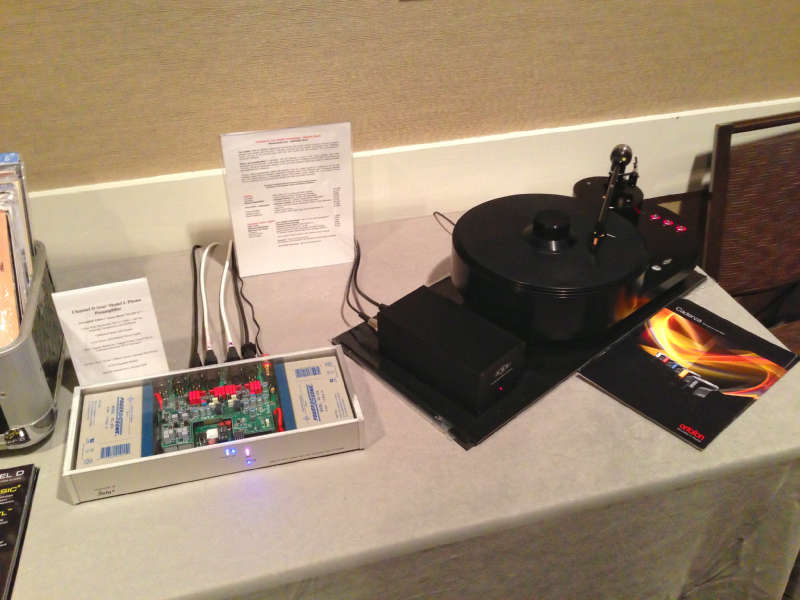
April 2014
Pure Vinyl Version 4 Released!
Includes a PREVIEW of the forthcoming Pure Music 2!
Over 50 new features and performance enhancements in all!
FREE Update if you purchased a Pure Vinyl license in the last 14 months.
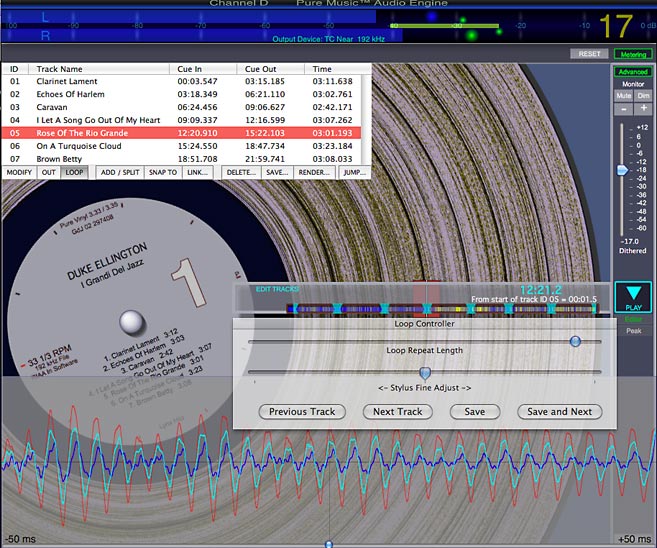
Some of the Significant New Features In Pure Vinyl 4:
Simplified the Recording Setup and Track Rendering user interface
Awesome "Snap Stylus To Track" feature, for faster, easier and more accurate track locating when editing
"Tidy Tail" feature automatically trims silence at ends of tracks
Sound Looping for easier, faster fine-tuning of track marker locations
Time Remaining feature assists recording: alerts to stylus reaching end of album side
Automatic track location and assignment (the "Screencast" videos on our DOWNLOAD page show this feature in action)
Improved performance of the Auto Track Finder (improved immunity to pop / click noises)
Render Each Album Side as Single Track option
"Jump To Album Side" menu command in Editor
AIFF output option for track rendering
Channel D ZEPHRR® Zero Phase Rumble Reduction filter
"Normalize Using Per-Track Peak Levels" rendering option
ITU 1770 Broadcast Standard Perceived Loudness Normalization Option for listening comparisons not biased by loudness
Improved performance of "Auto" recording trigger level button
Prepend track number to track name when rendering tracks
Numerous additional UI improvements
Incorporates Pure Music Preview Version 2 with dozens more improvements and new features (most significant in boldface). Keep in mind that this is ONLY a sneak peek of what's coming in Pure Music 2:
New Quick Playlist feature for quickly playing FLAC or DSD files (and other formats) via ad-hoc playlists, independent of iTunes and without needing to create Bookmarks
Can add groups of files or folders to Quick Playlist with OPEN... command
Can choose location for storing Bookmarks
Improvement to playthrough device synchronization and latency
Ensures Played Count and Last Played Date are updated in iTunes
Improvement to dither sound quality, simplified choices
Dithering can be used with the Audio File Sample Rate Converter feature
Dithering now active for all volume settings when using Upsampling
Corrected problem which caused iTunes to be muted if Pure Music enters Playthrough mode directly after launch
Preserves state of Less is More Mode across launches
Stereo dither check box now works (was always stereo before)
Includes internal hint to Energy Saver API to not allow App Nap, which caused playback to pause under Mavericks (10.9.1 or later) when the monitor sleeps.
Configuring Pure Music for a native DSD (DoP) device is now a one-click operation
DSD to PCM File Converter
File Sample Rate Converter can downsample DXD format (352.8 kHz) files
Worked around a bug in .dff files written by certain standalone TASCAM DSD recorders (DV-RA1000HD in particular) that prevented such files from playing in Pure Music (an incorrect offset value was written in the file header)
Fixed positioning issue with Pure Music "hidden UI" placard
Improvements to Gapless playback track analysis mechanism
New "link to next track" keyword in Comments field to force gapless linking
Eliminates issue with the File Converter (formerly Convert to Apple Lossless), which used the word length specified in the Sample Rate Converter settings instead of the word length of the original file
Eliminated cause of freeze for Add FLAC/DSD... operation when converting a folder if a .txt file was present in the album folder
Incorporates album art for FLAC files if not present in original file but included in the album folder as folder.jpg, cover.jpg, folder.png, cover.png or AlbumName.jpg (or .png), where AlbumName is the name of the enclosing folder
File Converter no longer skips non-FLAC files having a 44.1 kHz sample rate
File Converter now provides choice of converting to Apple Lossless or AIFF
Eliminates iTunes 11 "first track" selection issue after launching Pure Music, when using Remote App
Supports having more than one music storage volume with the same name
Eliminated lock-up that could happen when trying to perform an Add FLAC / DSD... operation after playing Gapless tracks
Eliminated visible setting for DSD Flag. To toggle flag from 05FA to AAAA and vice versa hold down the Option key while pressing the Copy Name... button
Added check box to enable DSD AC3 binary stream format for drivers that support it
Eliminated issue that could cause beginning of a track to be skipped after a sample rate change
March 2014
Pure Music User posts Informative DSD Setup Video on YouTube
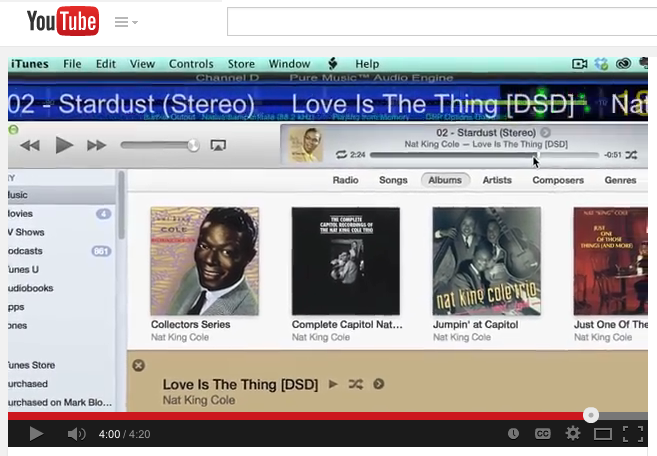
February 2014
Channel D Pure Vinyl wins Editors' Choice Award from The Absolute Sound!

March 2014 Issue
February 2014
RMAF 2013 Vinyl Ripping Session Seminar Video Posted
Click for video Note: reposted February 2016, addressing copyright holder concern.
January 2014
Channel D at CES / T.H.E. Las Vegas
Just joking! We have never exhibited at Las Vegas (and don't plan on it). It's a bad time of the year for a trade show - and just as well, because we are working very hard on updates to our Pure Vinyl and Pure Music products (and they will be well worth the wait)!
December 2013
Channel D Pure Vinyl wins Product of the Year Award from The Absolute Sound!
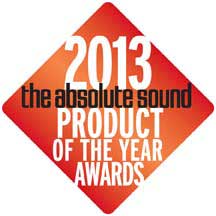
January 2014 Issue
November 2013
Channel D Seta Model L Phono Preamplifier - Follow Up Review in Stereophile (December 2013 issue)
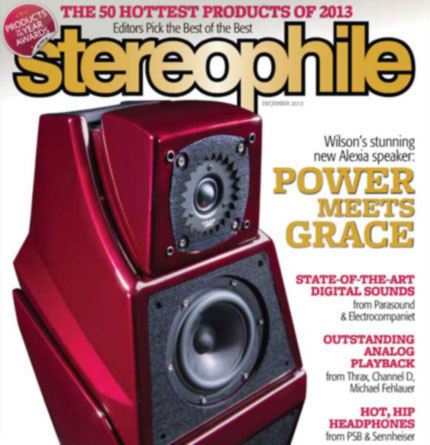
"It's an understatement to say that I was impressed by the Seta Model L [...] It measured more like a piece of laboratory equipment than a typical high-end component, and sounded superb to boot." - John Atkinson, December 2013 issue of Stereophile
Click Here to Download a Copy of the Review
November 2013
Today's Fresh Catch: Channel D 'Pure Music' High Resolution Music Server Software
Mini-review of Channel D Pure Music
November 2013
Channel D Pure Vinyl Featured on the Cover of the December 2013 issue of The Absolute Sound Magazine!
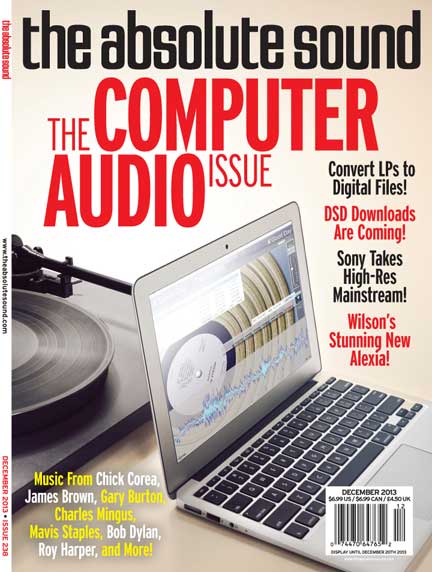
Channel D Pure Vinyl and Seta Model L phono stage reviewed in this issue
Click Here to Download a Copy of the Review
October / November 2013
Channel D at Rocky Mountain Audio Fest 2013 - Press / Web Coverage
- Stereophile: Channel D Rocks Rocky Mountain: Goes High, Low, & Hilo
- The Absolute Sound: Neil Gader's Highlights
- Analog Planet: Channel D Introduces Seta Piccola Phono Preamplifier
- Audiostream: Channel D Seta Piccola DAC Buffer and More...
- Part-Time Audiophile: RMAF 2013
- Sixmoons / show awards: Best cutting edge technology demonstrations:
RMAF 2013
- The Absolute Sound: Rocky Mountain Audio Fest: Steven Stone on New Digital Products
- Part-Time Audiophile: RMAF 2013 Teaser, Part 2
- Enjoythemusic:
High-End Audio Industry News, October 2013
October 2013
Channel D Participation at Rocky Mountain Audio Fest 2013 Seminars
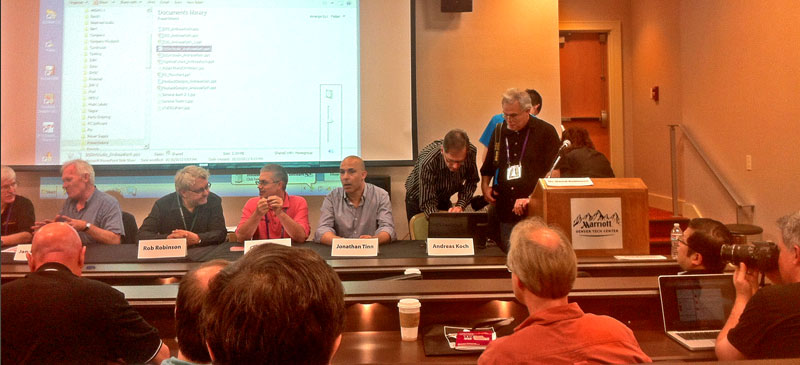
Panel Discussion / Seminar: DSD Downloads, The New High-Resolution Standard: A Major Update
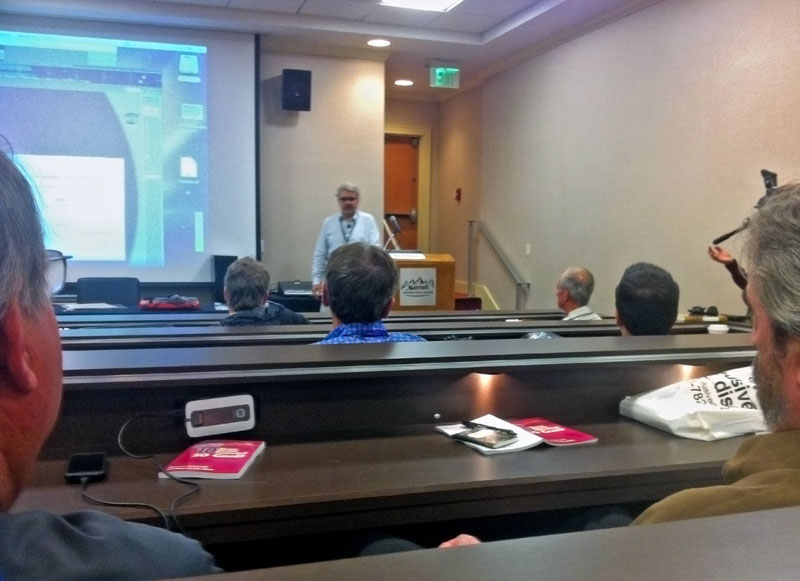
Seminar: Vinyl Ripping Session
October 2013
Channel D Hosts Two Demo Rooms at Rocky Mountain Audio Fest 2013
Our 8th consecutive year at RMAF
We have staged more live-demo exhibit rooms at RMAF than all other computer audio software companies combined.
And this year, we even ran two separate exhibits - a high end system in Room 582, and a "budget" system in Room 586.
THANKS (yet) AGAIN to all of the Pure Music and Pure Vinyl users who stopped in to say hello!!!
Still more to be posted regarding Channel D at RMAF 2013...
October 2013
Channel D: our "High-End" Room (582) at RMAF 2013
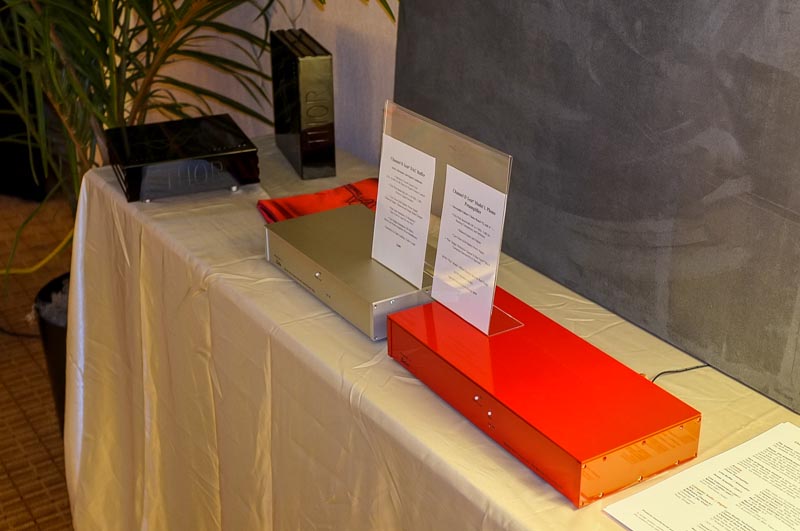
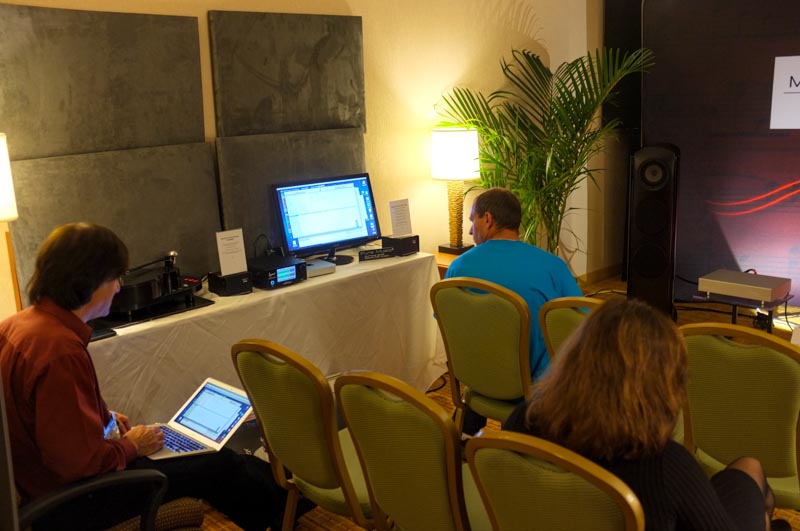
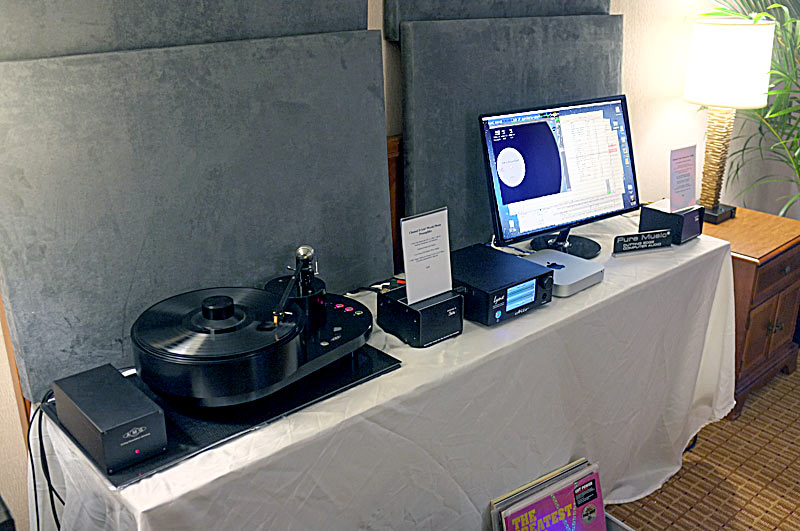
Special thanks to Andrew Jones / TAD for loaning TAD Evolution One (E1) Loudspeakers, and ATS Acoustics for the room treatments
Room 582 Equipment List
Speakers TAD Evolution One (E1) $29,800 (pair)
Turntable AMG Viella V12 Turntable with AMG Tonearm $18,000
Cartridge Ortofon Cadenza Bronze Moving-Coil Cartridge $2199
Phono Preamplifier Channel D Seta Plus, Model L MC Preamplifier $5499
or NEW Channel D - Seta Piccola MM/MC Preamplifier $1899
Line Buffer / Attenuator Channel D Seta DAC Buffer / Active Attenuator $2799
or NEW Channel D Seta Piccola DAC Buffer / Active Attenuator $1599
Line Interconnects, Speaker Cables Merrill Audio $499 and Veritas Monoblock Power Amplifiers $12,000 (pair)
Room Treatments ATS Acoustics Corner Bass Traps (6) and Wall Panels (6) $1200 (total)
ADC / DAC Lynx Studio Technology Hilo 192/24 (+DSD) A/D D/A with Thunderbolt $2795
Software (Playback) Channel D Pure Music $129
Software (for Vinyl) Channel D Pure Vinyl $279
Computer Apple Mac Mini Quad Core i7, 16 GB $900
Remote Control Apple MacBook Air 8 GB (Using Built-In Screen Sharing) $1299
Music Storage 12 Terabyte Gigabit Ethernet NAS Array, Synology DS1512+ $1700
October 2013
Channel D Pure Vinyl: our "Budget" Room (586) at RMAF 2013
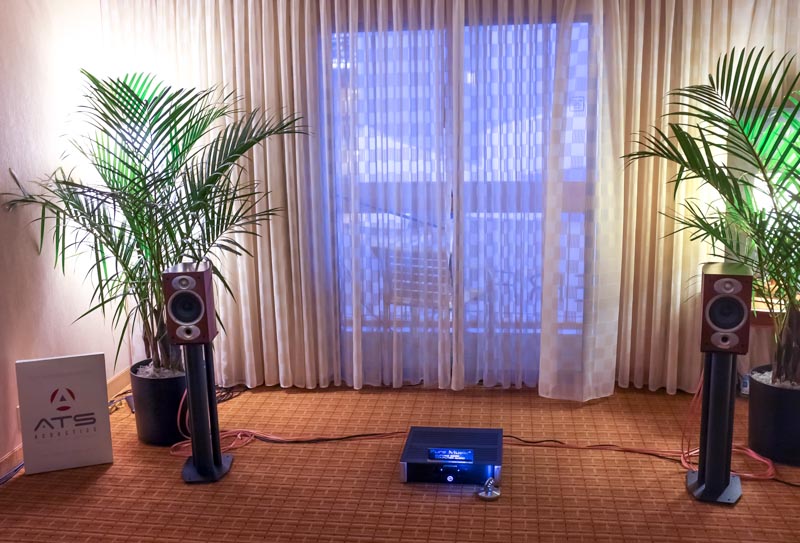
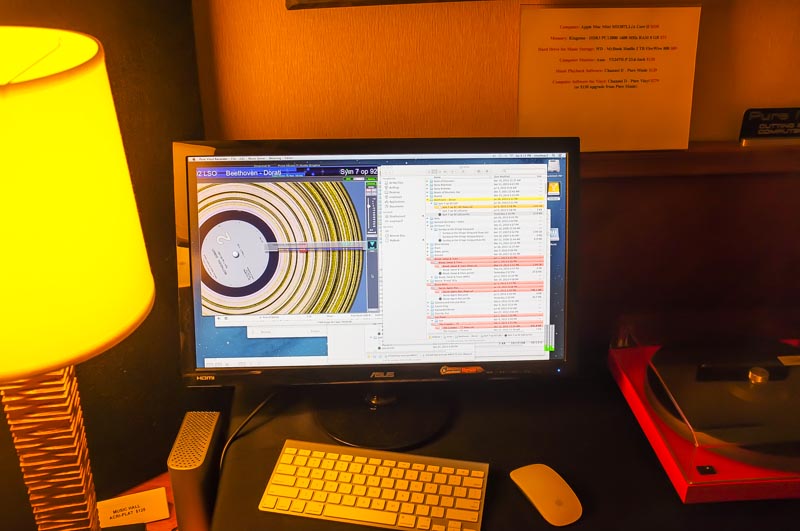
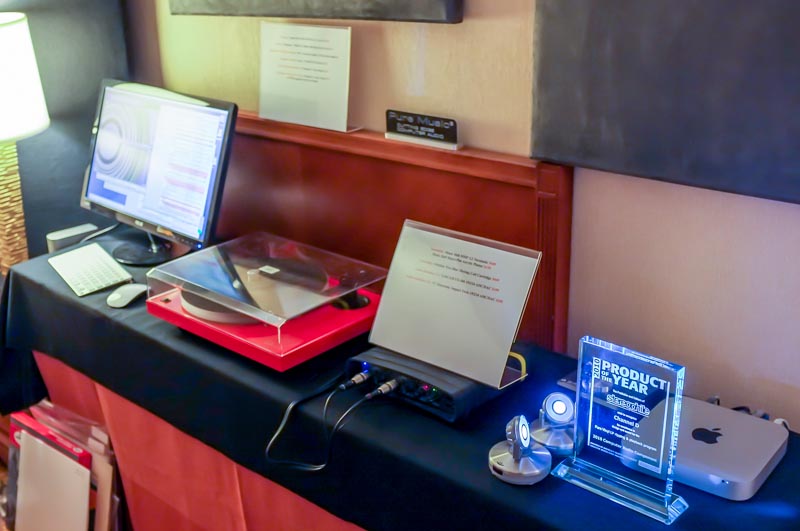
Thanks to Roy and Leland of Music Hall for loaning the MMF2 turntable, and ATS Acoustics for the room treatments
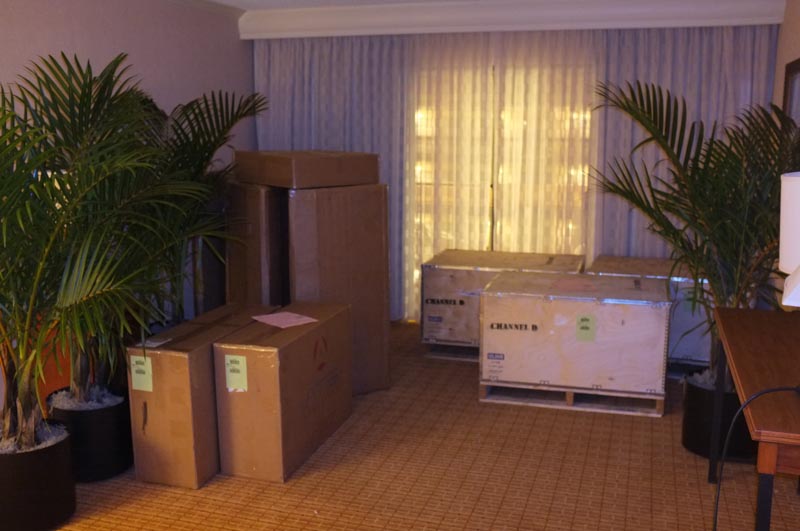
Another successful RMAF is now history... Channel D equipment all packed up, ready to go home!
October 2013
Channel D Pure Vinyl review by The Pro Audio Web Blog: 4 1/2 out of 5 stars
Channel D - Pure Vinyl Suite Review
Rated four and a half out of five stars (and as stated in the review, Pure VInyl was downgraded a half star because there is no version available for Windows...) (!)
September 2013
Channel D Seta® Buffer reviewed by Scot Hull of Part-Time Audiophile
Channel D presents the Seta Buffer
The review also includes a nice discussion about digital volume controls.
August 2013
Amarra promotes Pure Music!
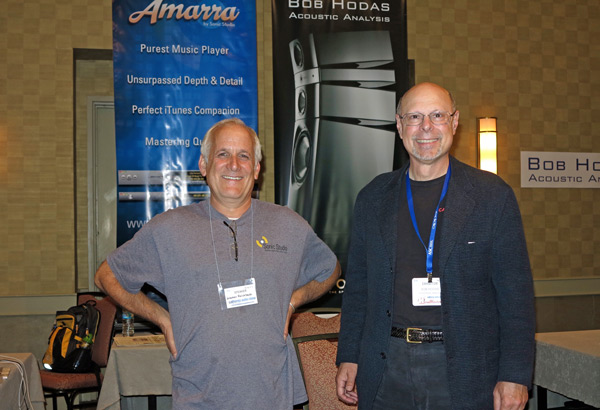
Check out the Amarra banner from the recent California Audio Show. Thanks Amarra!
July 2013
Channel D at Capital City Audio Fest 2013 - Press
- EnjoyTheMusic / Kemper Holt EnjoyTheMusic
- Part Time Audiophile CAF 2013
- Stereophile Capital Audiofest, Day Two, Part One
- Home Theater Shack Capital AudioFest Official Show Report by Joe Alexander
July 2013
Channel D at Capital City Audio Fest 2013
THANKS AGAIN to all of the Pure Music and Pure Vinyl users who stopped in to say hello!
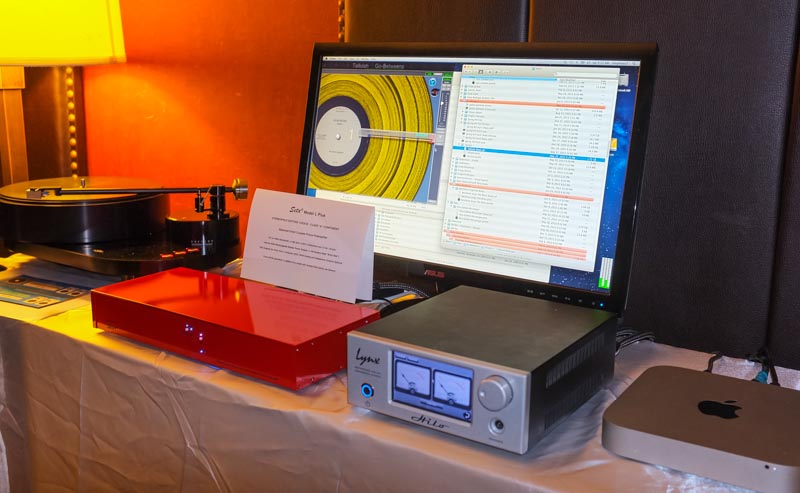
July 2013
Musings on Building a Digital Music Server: Ripping Vinyl with the Apogee Duet 2 and Pure Vinyl
Positive Feedback ISSUE 68 july/august 2013 by Andy Schaub
July 2013
Channel D Products listed in Stereophile's "Recommended Components" 2013 Issue
Pure Vinyl (recommended for over 3 years) and Pure Music (listed under "Computer Software")
Seta Model L Phono Preamplifier (Rated Class "A") and Seta Nano Phono Preamplifier (listed under "Phono Preamps")
June 2013
"ACTIVE SPEAKERS WITH PURE MUSIC AND FABFILTER PRO-Q: A PRIMER"
Article in HIFI ZINE
June 2013
Channel D at The Newport Beach (California) Audio Show 2013
THANKS to all of the Pure Music and Pure Vinyl users who stopped in to say hello!
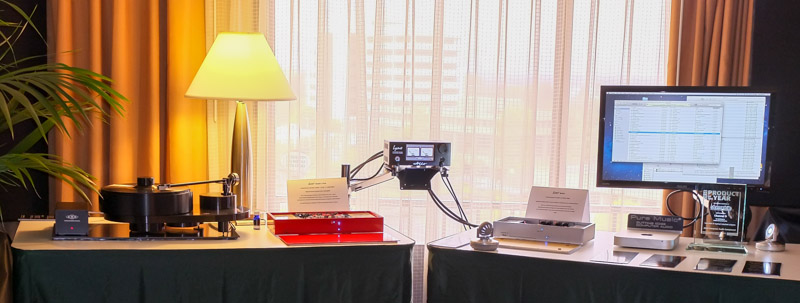
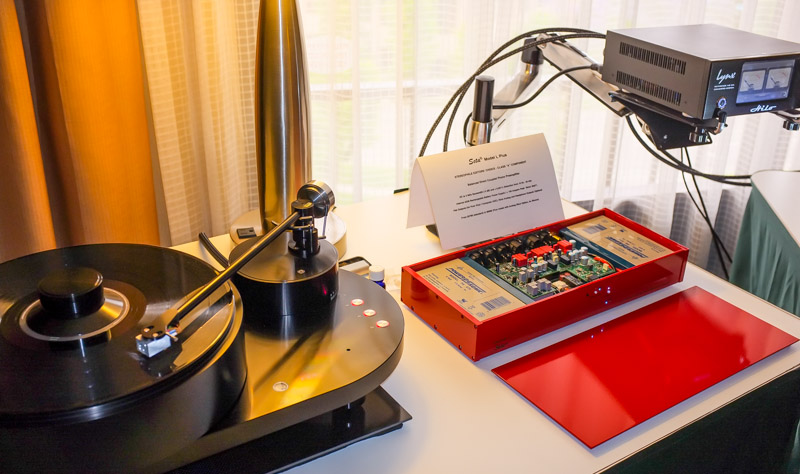
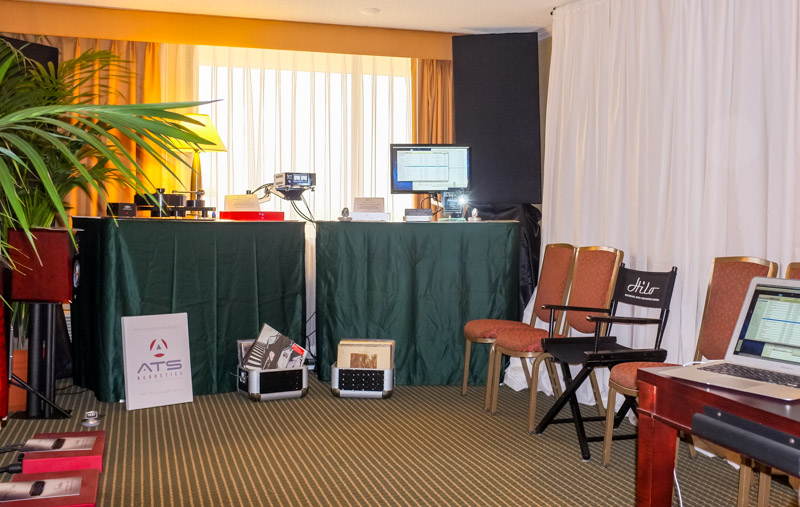
Channel D / Lynx Studio Technology Exhibit Room
Special thanks to Musical Surroundings for providing the AMG turntable, Merrill Audio for providing the Veritas power amplifiers, ATS Acoustics for providing the room treatments, and Audioquest for balanced interconnects.
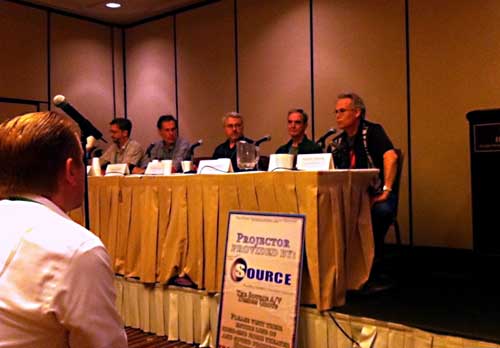
Seminar - DSD: What it is, and How to Use it in the Home
May 2013
LP Transcription Article with Channel D Pure Vinyl
"Breathe new life into dusty vinyl by digitizing your LPs (the right way)" by Ian White, DIGITAL TRENDS, May 9, 2013
April 2013
Channel D at The Chester Group's New York Audio Show 2013
THANKS to our East Coast - based Pure Music and Pure Vinyl users who stopped in to say hello!
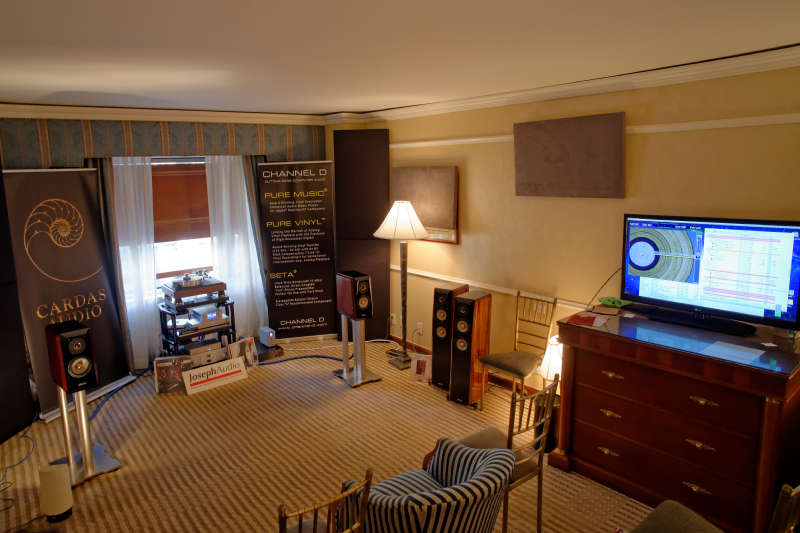
Channel D / Cardas Audio / Joseph Audio / ATS Acoustics Exhibit Room
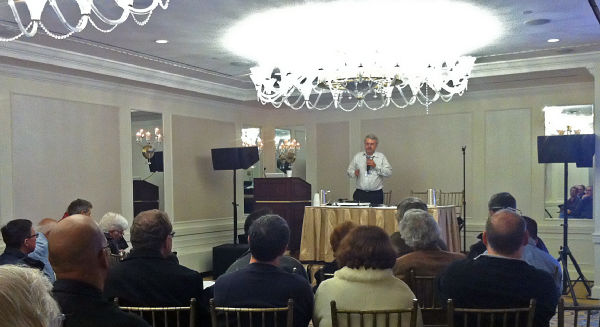
Vinyl Ripping Session (Seminar)
April 2013
Channel D at New York Audio Show 2013 - Press / Web Coverage
- EnjoyTheMusic / Steven Rochlin New York Audio Show 2013
- Stereophile / Art Dudley Channel D
- Secrets of Home Theater and High Fidelity New York Audio Show Report April 2013 Channel D / Cardas / Joseph Audio
- Secrets of Home Theater and High Fidelity The New York Hi Fi Show: A 63-year History that Traces a Complicated Trajectory
- Stereophile / Art Dudley Joseph Audio
- Audiostream Channel D/Joseph Audio
- AV Showrooms NY Audio Videos 1: Channel D, Joseph Audio, Cardas Audio
March 2013
Channel D at AXPONA 2013 Chicago
Our 5th straight AXPONA show (Jacksonville '10, Atlanta '11, New York '11, Jacksonville '12, Chicago '13)
SPECIAL THANKS to our Chicagoland and Midwest - based Pure Music and Pure Vinyl users
that made the trip to the first audio expo in Chitown in over 14 years, and stopped in to say hello!
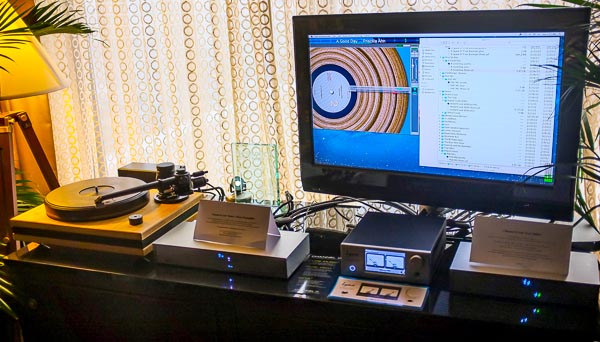
Channel D Exhibit Room
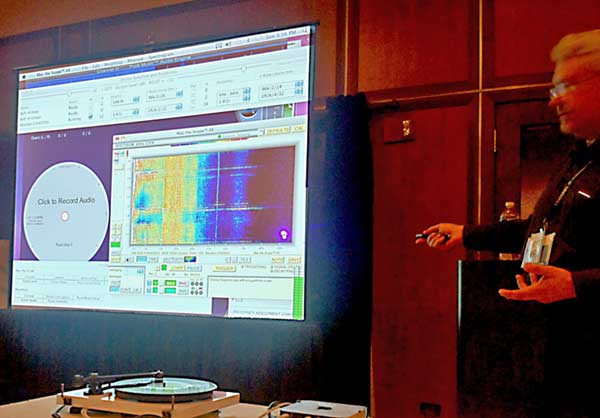
Vinyl Ripping Session (Seminar)
March 2013
Channel D at AXPONA 2013 Chicago - Press / Web Coverage
- EnjoyTheMusic / Steven Rochlin AXPONA 2013 Show report
- Stereophile / John Atkinson Pure Vinyl & Music from Channel D
- The Absolute Sound / Scot Hull AXPONA 2013 - PART 2
- Audiohead Day 1 Highlights - AXPONA 2013
January 2013
Channel D at Rocky Mountain Audio Fest 2012 (Videos Posted)
RMAF12: Vinyl Ripping Session
RMAF12: DSD - Hardware & Software Meet, An Update
RMAF12: Ask theExperts; Your Computer Audio Questions Answered
December 2012
Channel D Pure Vinyl reviewed at Audiostream
"Considering the task of ripping vinyl occurs in real time, the old maxim - do it once, do it right - applies and with Pure Vinyl you can rest assured you're doing it right." Click for full review at Audiostream
November 2012
Pure Music and Apple iTunes 11
Please see the Pure Music Support page on our website for up to date information.
November 2012
Channel D Presentation on Computer Audio at Audiolab
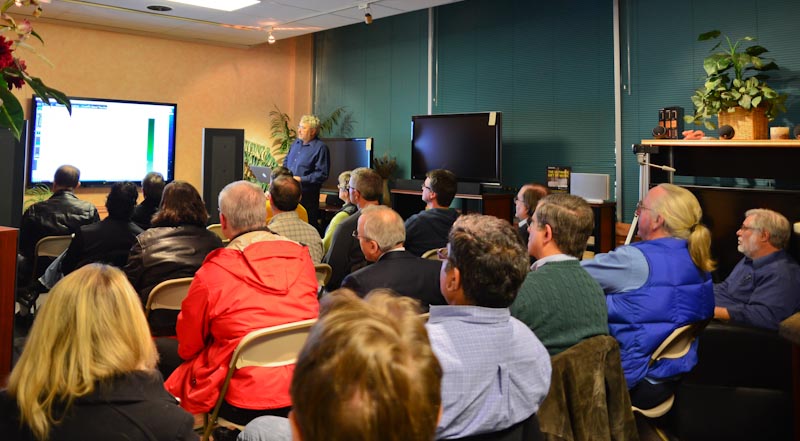
Channel D's Rob Robinson was invited to give a presentation on Computer Audio at Audiolab, a long-established audio dealer located in Fairless Hills, Pennsylvania. A full house of audiophiles responded to the invitations for the evening of November 28. Everything from the basics of high resolution downloads and transferring CDs to a computer to DSD playback and vinyl transfer to high resolution digital files was covered for this very attentive audience.
December 2012
Channel D Pure Music 1.88a reviewed at Audiostream
"This is not a euphonic program like many out there that add warmth or richness to the music. It is very revealing of detail from top to bottom and the acoustic space of the recording." Click for full review at Audiostream
November 2012
Pure Music Update Released
The latest free Pure Music update, version 1.88, has been posted. We have decided to postpone the 1.9 release for additional testing of new features which are not included in 1.88, which was the version frozen at the time Pure Vinyl 3.1 was completed (and was incorporated in Pure Vinyl 3.1).
In the interim, Pure Music 1.88 has more than two dozen new features and performance enhancements compared to Pure Music 1.86. A complete list of changes is provided in the Release Notes in the User's Guide included with the update. Additional, significant user-requested feature enhancements are coming in Pure Music 1.9, which we anticipate will be available by mid - December.
November 2012
Hurricane Sandy Update (Pure Vinyl 3.1 released)
Our utility power was finally restored late Monday afternoon, November 12 (after operating for two weeks on emergency generator power) but our Internet and phone were interrupted because the utility crew cut the fiber optic line while installing four new utility poles on our drop. Finally, everything was restored late Tuesday afternoon, November 13. The new Pure Vinyl 3.1 update was posted on November 16. The Pure Music 1.9 update will be posted one week after that. We would prefer to release them simultaneously, but the staging is necessary to manage the higher than normal load on our server which occurs every time we post a new release. The new releases will be free, as usual. - Channel D Support Team
October 2012
Special Advisory Statement - Hurricane Sandy
October 30, 2012 - To our loyal Customers: Our operations have been disrupted by the destructive Hurricane Sandy, the worst storm to hit the Mid-Atlantic States in 50 years. We currently are working using sporadically available and limited reliability emergency generator power, and it may be several days to a week before power and normal operations are restored. We are postponing the release of the updates of Pure Vinyl and Pure Music because we will be unable to deliver our usual level of support at this time, and anticipate that the new releases will likely generate their share of questions. Our merchant operations are based in the San Francisco area, and continue to operate normally. We thank you for your patience and understanding at this difficult time, while we cope with the aftermath of the storm. - Channel D Support Team
October 2012
Channel D (Pure Music) honored with their Third Positive Feedback Online Audio Oasis Award (Rocky Mountain Audio Fest, 2012)
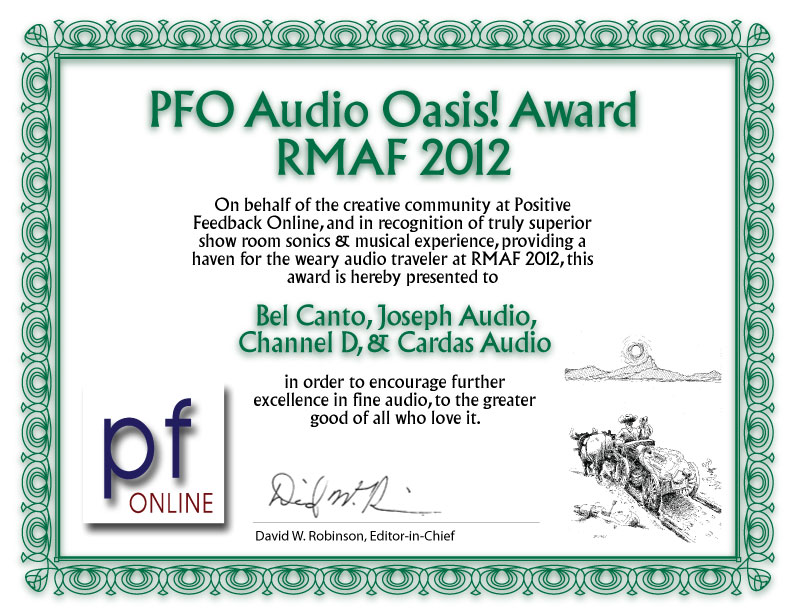
October 2012
Apple releases updated Mac Computers
We have already ordered fully spec'd Quad Core i7 2.6 GHz Mac Mini with the Fusion hybrid internal HD and bare bones Dual Core i5 Mac Mini configurations for testing, and will update our Getting Started with Computer Audio web page accordingly... to be followed with information on the other new computers, when available.
October 2012
RMAF 2012: Channel D at Rocky Mountain Audio Fest
Our 7th straight year of exhibiting at Rocky Mountain Audio Fest
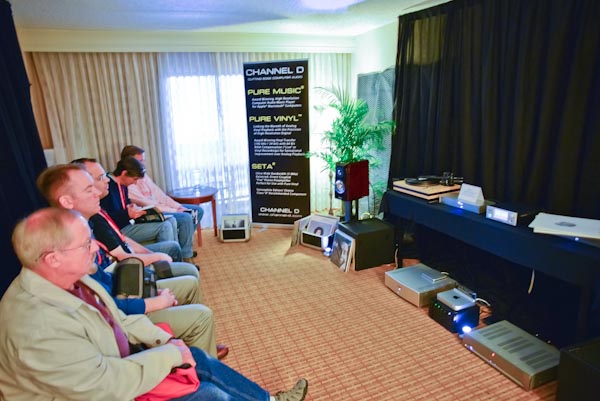
Channel D Exhibit Room
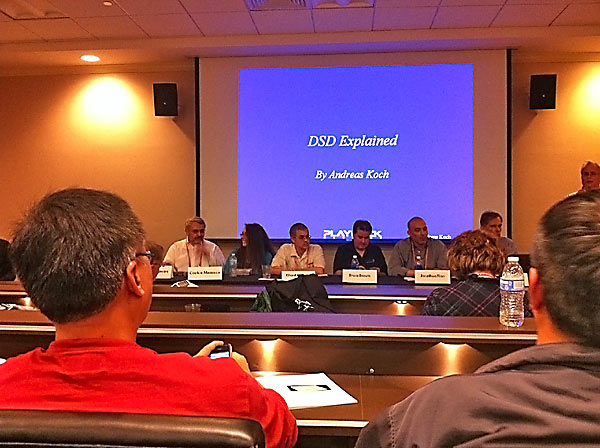
DSD: Hardware and Software Meet, An Update (Panel Discussion)
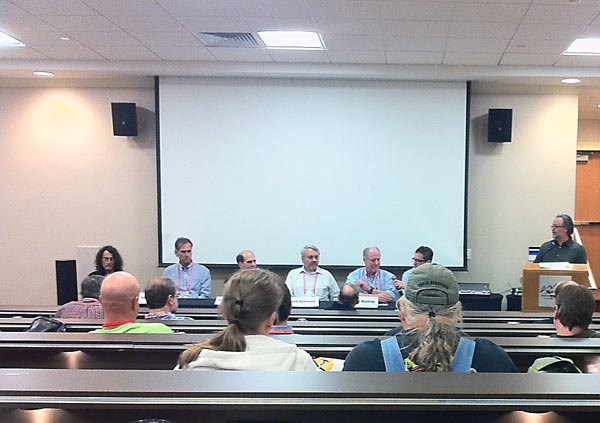
Ask the Experts (Panel Discussion)
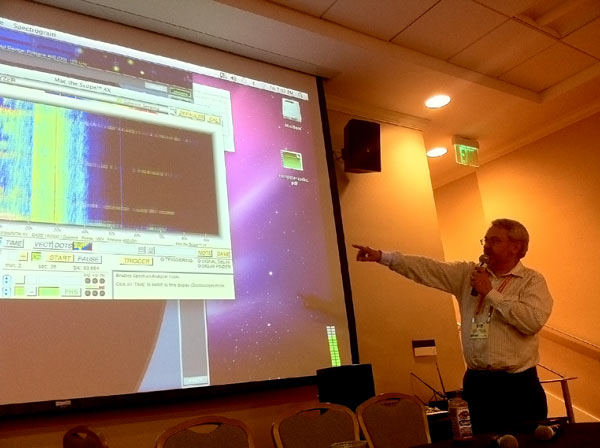
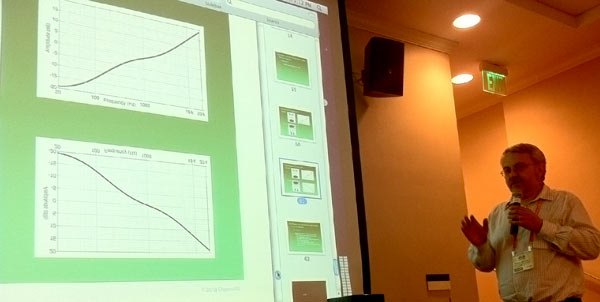
Vinyl Ripping Session (Seminar)
October 2012
Channel D at RMAF 2012 - Press / Web Coverage
- Audiostream Ask The Experts
- Enjoythemusic RMAF 2012 Show report
- Audiostream Channel D
- Stereophile Channel D Shines
- Audiostream dCS/VTL/Wilson/Transparent
- The Absolute Sound Steven Stone's Best of Show - RMAF 2012 (dCS/VTL/Wilson/Transparent - Pure Music used for digital playback)
- Positive Feedback Online From an Editor's Notebook: An Update on PFO's DSD DAC and DSD Download List
- Positive Feedback Online Channel D Computer Audio
- The Absolute Sound NG's Rocky Mountain AudioFest Show Report / Phono Stage News
- The Absolute Sound Rocky Mountain Show Report
- Stereophile The Magnificent 7
- Stereophile Joseph-Bel Canto: A Winning Combination
- Stereophile Merlin
- Stereophile Like a Firewire out of the blue
- Martin Logan Owners Lynx / Channel D
October 2012
RMAF 2012: Channel D Introduces New Ultra Wide Bandwidth Seta Plus Phono Preamplifier and Seta DAC Buffer Products
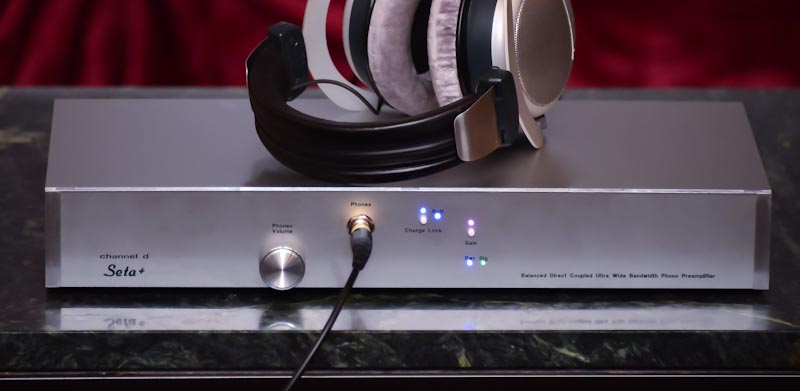
Channel D will introduce their new Seta Plus Phono Preamplifer and Seta DAC Buffer products at the 2012 Rocky Mountain Audio Fest, October 12-14, in Exhibit Room 482.
- The new Seta Plus Phono Preamplifier represents the continued evolution of Channel D's ground-breaking ultra wide bandwidth Seta "flat" phono preamplifier. The Seta Plus includes an updated, ultra low impedance, low noise rechargeable internal AGM battery power supply based on the original Seta phono preamplifier design, delivering superb transparency, detail and three-dimensionality for vinyl playback, a key benefit of the Seta's ultra wide bandwidth battery powered design. An optional, high quality headphone output is available.
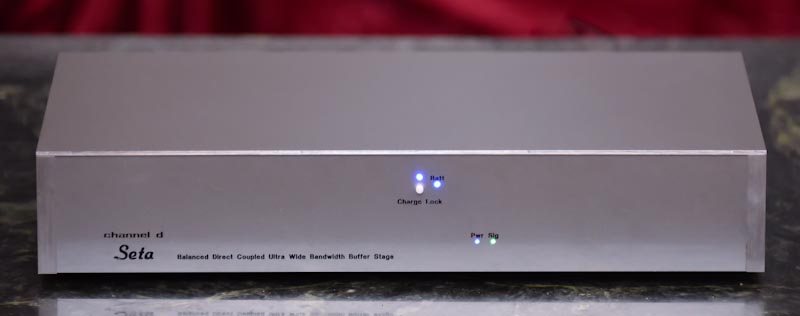
- The new Seta DAC Buffer solves a critical problem with today's Computer Audio that occurs when driving power amplifiers directly with the output of a DAC: setting the proper system gain structure. The Seta DAC Buffer provides a sonically transparent, analog way of adjusting the attenuation of any DAC's output (in 6 dB steps from -6 to -30 dB), permitting using the DAC or computer playback software's digital volume control in its optimum sweet spot (-10 to 0 dBFS).
Unlike passive signal attenuators which would be used for a similar purpose, the high (2 megohm) input impedance of the DAC Buffer insures that electronic loading of the DAC's output is kept to a minimum, while providing a sonically transparent, ultra wide bandwidth (DC - 12 MHz, -3 dB) and low (20 ohms) output impedance for driving any power amplifier load or long interconnect run without adding noise or distortion. The net effect is one of stunningly deeper, more well controlled bass with greater impact plus lower listening fatigue and improved ease of presentation over the entire audio frequency range.
For full information, please see the news release.
October 2012
RMAF 2012: Channel D Updates Pure Vinyl High Resolution 192 / 24 Analog to Digital Transfer and Pure Music Digital Music Player Software
Channel D will be demonstrating major new updates to their award winning Pure Vinyl software for making high resolution digital transfers of analog sources and Pure Music digital music player software at the 2012 Rocky Mountain Audio Fest, October 12-14, in Exhibit Room 482.
- Pure Vinyl 3.1 represents a significant update including performance and usability enhancements including new easy to use Jog and Insert Track controls for editing and splitting LP recordings into individual tracks. Pure Vinyl 3.1 will be released on October 23, 2012.
- Pure Music 1.9 includes over two dozen performance enhancements and new features. Pure Music 1.9 will be released on October 30, 2012.
Both updates will be free for all users.
October 2012
Channel D at RMAF 2012
Be sure to visit Channel D's room at the 2012 Rocky Mountain Audio Fest (Marriott Atrium, Exhibit Room 482).
Channel D also will be participating in three seminars at RMAF:
- Ask the Experts - 2 PM, Friday October 12, Aspen Amphitheater
- Vinyl Ripping Session - 4:45 PM, Friday October 12, Aspen Amphitheater
- DSD: Hardware and Software Meet, An Update - 4 PM, Saturday October 13, Aspen Amphitheater
August 2012
10 Questions From Audiostream
Audiostream's Michael Lavorgna poses ten questions to audio player software manufacturers, including Channel D.
Media Player Q&A: Q1 Should We Replace iTunes?
Media Player Q&A: Q2 What are your product's most important features?
Media Player Q&A: Q3 What features of your product are underutilized, under appreciated, or just plain misunderstood?
Media Player Q&A: Q4 What makes one media player sound different from another?
Media Player Q&A: Q5 Is there a best method of connecting to a DAC? USB, Toslink, Coax?
Media Player Q&A: Q6 Is it more beneficial to handle upsampling in a media player or in a DAC?
Media Player Q&A: Q7 Are there any special considerations people with large music libraries need to address?
Media Player Q&A: Q8 Can different versions of the same OS sound different and if so why?
Media Player Q&A: Q9 Can you share some basic set up tips for getting better sound from computer playback?
Media Player Q&A: Q10 What is on our HD playback horizon?
June 2012
Channel D (Pure Music) honored with their Second Positive Feedback Online Audio Oasis Award (T.H.E. Show Newport Beach, 2012)

June 2012
Channel D at New York Audiophile Society / Gotham City Audiophile Society meeting
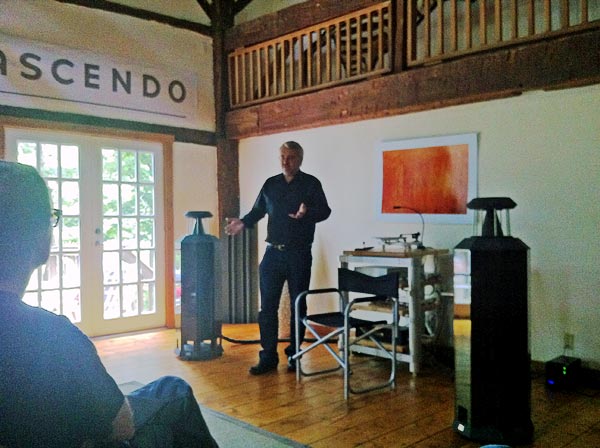
Channel D's Rob Robinson presenting on Computer Audio; presentation included listening to DSD playback
with Pure Music. Thanks to Brett Mesler of Audio 202 who hosted the meeting.
June 2012
Channel D at T.H.E. Show Newport Beach, CA 2012
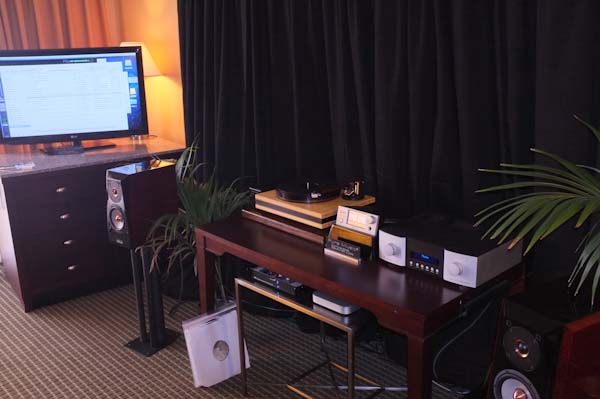
Artemis SA-1 Turntable, Channel D Seta Model L Phono Stage, Lindemann Integrated Amplifier
Apple Mac Mini running Channel D Pure Vinyl and Pure Music, Lynx Hilo ADC / DAC
Joseph Audio Pulsar Loudspeakers
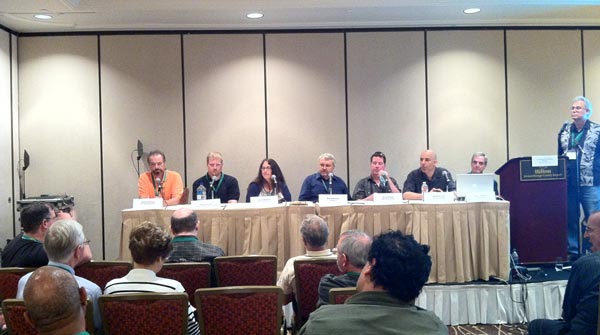
Channel D's Rob Robinson was honored to be part of the panel for the seminar
"Super High-Resolution: The New Download."
Shown from left to right: Michael Bishop, eight-time Grammy Award winning engineer;
Matt Ashland, J. River; Cookie Marenco, five-time Grammy Award nominee and founder of
Blue Coast Records; Rob Robinson, Channel D; Bruce Brown, mastering engineer and
owner of Puget Sound Studios; Jonathan Tinn, Blue Light Audio / Playback Designs;
Tom Caulfield, Channel Classics; Dr. David Robinson, Positive Feedback Online.
YouTube video
Channel D at T.H.E. Show Newport Beach, CA 2012 - Press Coverage
"Channel D-Pure Vinyl-Pure Music" Stereophile
"One World Audio / Lindemann; TAD Labs" Positive Feedback
"Channel D, Lynx Studio Technology, Joseph Audio, Artemis Labs" Positive Feedback
"Channel D, Joseph Audio, Lynx Studio & Artemis Labs" Part-Time Audiophile
"Channel D" EnjoyTheMusic
"The Lynx Hilo" Stereophile
"TAD's E1 Towers" Stereophile
"Positive Feedback Hospitality Suite" Positive Feedback
"The AudioQuest Dragonfly Takes Flight" Stereophile
"EAR's Luscious Earful" Stereophile
May 2012
Channel D at Munich High-End 2012
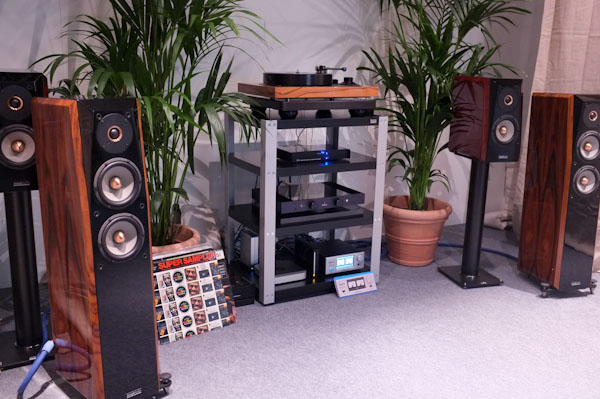
Brinkmann Oasis Turntable, Channel D Seta Model L Phono Stage, Brinkmann Integrated Amplifier
Apple Mac Mini running Channel D Pure Vinyl and Pure Music, Lynx Hilo ADC / DAC
Joseph Audio Loudspeakers
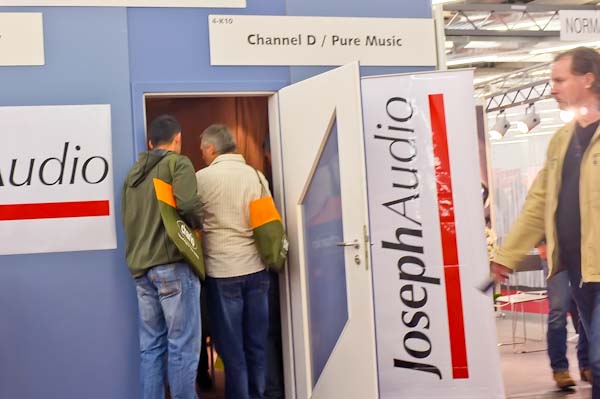
May 2012
Channel D Presents Digital Audio Workshop at HifiDeluxe 2012, Munich
Digital Audio Workshop
April 2012
Channel D at T.H.E. Show 2012, New York City - Press Coverage
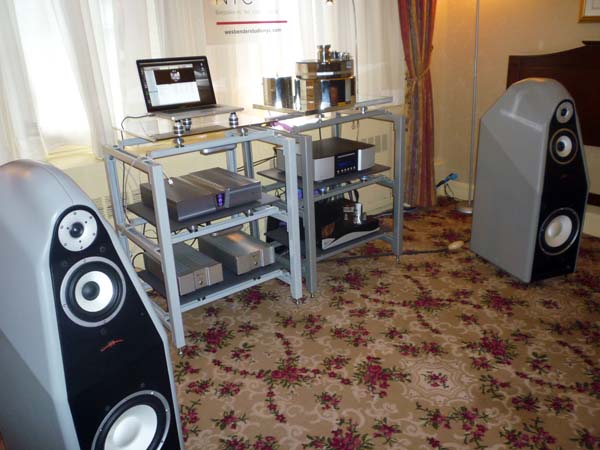
"Wes Bender Studio NYC" Audiostream
"Sound by Singer" Audiostream
"No Limits to Wes Bender Studio NYC" Stereophile
"I Want To Take You Higher" Audiostream
"AudioStream on Computer Audio" Stereophile
March 2012
Channel D at Salon Son Image 2012, Montreal - Press Coverage

"Fidelio Audio" Audiostream
"Coup de Foudre/Wilson Audio/VTL and More" Audiostream
"Coup de Foudre/Joseph Audio" Audiostream
"Joseph Audio" Stereophile
"Coup de Foudre: Wilson Audio" Stereophile
March 2012
Channel D at AXPONA 2012, Jacksonville, Florida - Exhibit Room Photos
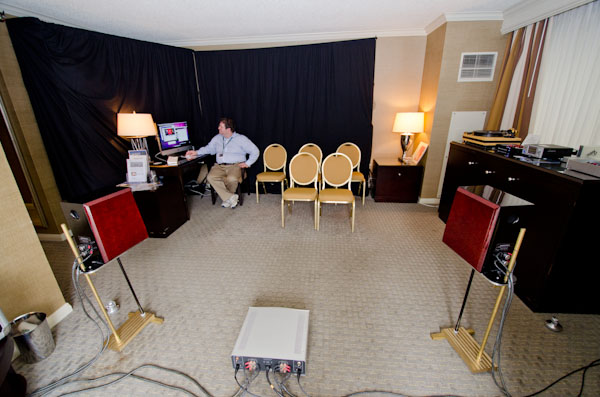
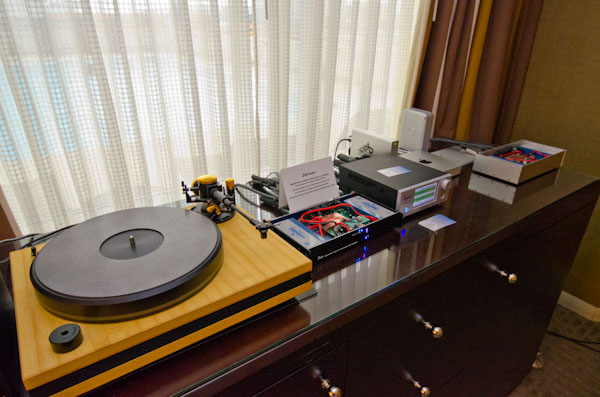
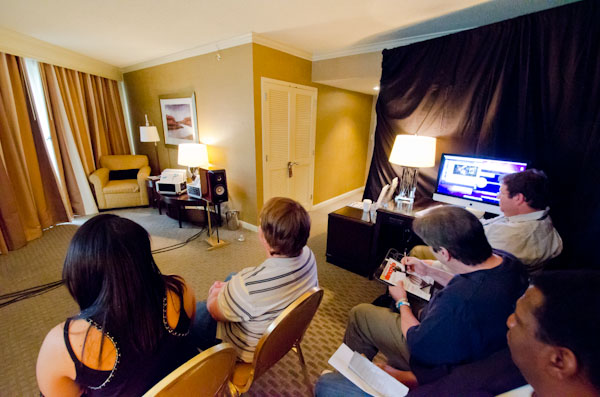
March 2012
Channel D at AXPONA 2012, Jacksonville, Florida - Press Coverage
"Channel D and Joseph Audio Make Great Music" Stereophile
"AXPONA 2012: Joseph Audio, Hegel, Channel D" Confessions of a Part-Time Audiophile
"Ripping Vinyl LPs / Computer Audio in Today's Audiophile World" EnjoytheMusic.com
"Axpona Jacksonville Part Two" AVGuide.com
February 2012
Channel D's Director of Engineering Interviewed by Dagogo's Larry Borden
Dagogo, February 2012
February 2012
Channel D Pure Music included among Positive Feedback Online's "Ten Best Sounds" of CES 2012
With Wes Bender Studio NYC / Venetian 30-323 Positive Feedback Issue 59 January/February 2012
January 2012
Channel D Pure Music at CES 2012
Audio Research Room
- TAD Room
- T & A Room
- Wes Bender Studio
- dCS Room (Positive Feedback)
- Ayre / Vandersteen Room (Positive Feedback)
January 2012
COMPUTER AUDIO PLAYBACK APPLICATIONS (Review by HiFi-Advice.com)
Mac compared to PC using all popular applications, two iTunes sound enhancements and a range of DA-converters and USB interfaces
hifi-advice.com
December 2011
Channel D releases Pure Vinyl 3
Includes over two dozen new features and performance enhancements to our award-winning software.
Click here for news release.
December 2011
Channel D Pure Music wins Positive Feedback Online Brutus Award
Positive Feedback Issue 58 November/December 2011
November 2011
Musings on Building a Digital Music Server: The Audio Note Pallas Digital Interconnect and the Pure Music Audio Engine
Positive Feedback Online
November 2011
One Fine Evening (with Pure Music) at Loud & Clear in Edinburgh
AVGuide Forum
November 2011
The Audio Beat: DSD over USB with Pure Music
The Audio Beat, November 8, 2011
October 2011
Channel D Pure Music reviewed in Hi-Fi and Records (Germany)
Issue 4, 2011
October 2011
Channel D at Rocky Mountain Audio Fest 2011
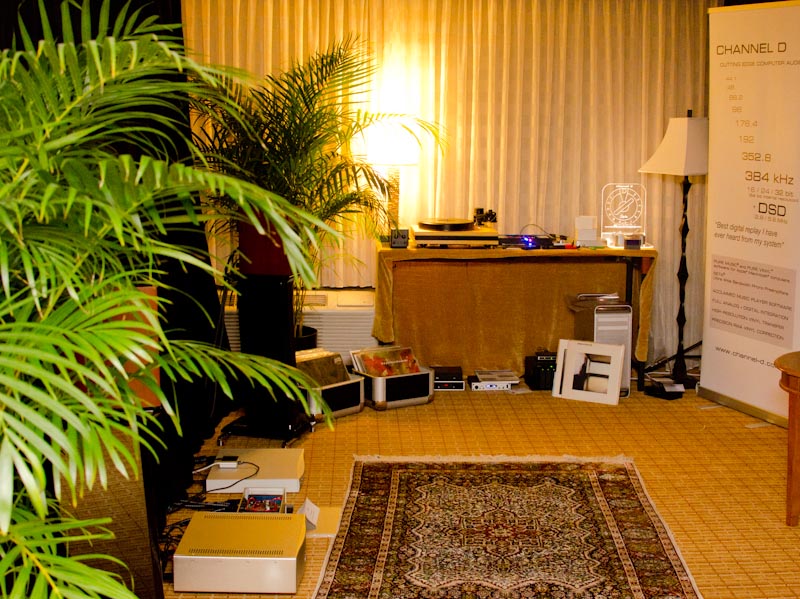
Press Coverage / Show Presence (exhibitors using Pure Music or Pure Vinyl, an incomplete list):
The Audio Beat
Wavelength / Vaughn (Best of Show)
Dagogo
Lindemann
Musical Surroundings
Positive Feedback Online
Channel D
TAD
Lindemann
Tidal
Wavelength / Vaughn
Stereophile
TAD
Peachtree
Wes Bender Studio
Music Hall
Vandersteen
Dynaudio
Ayre
Wavelength / Vaughn
Audiostream
Peachtree
dCS
Ayre
Wavelength / Vaughn
Wes Bender Studio
Channel D
Music Hall
Tidal Audio
Zu Audio
Mytek
September 2011
Channel D Pure Music reviewed in Secrets of Home Theater and Hi-Fi
Published September 27, 2011
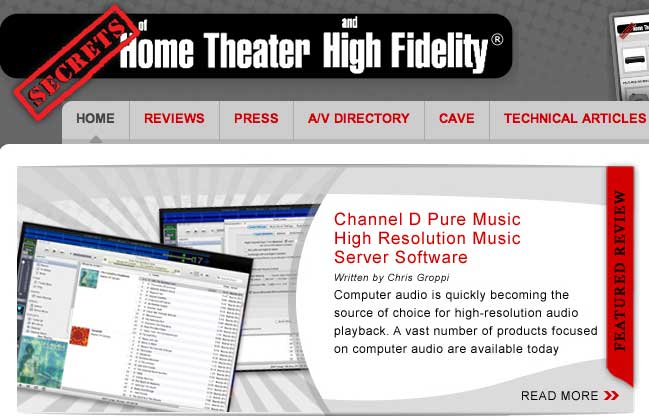
September 2011
Playback Designs / Channel D (Pure Music) Exhibit Room receives Positive Feedback Oasis Award
Featuring Channel D Pure Music streaming DSD Audio over USB
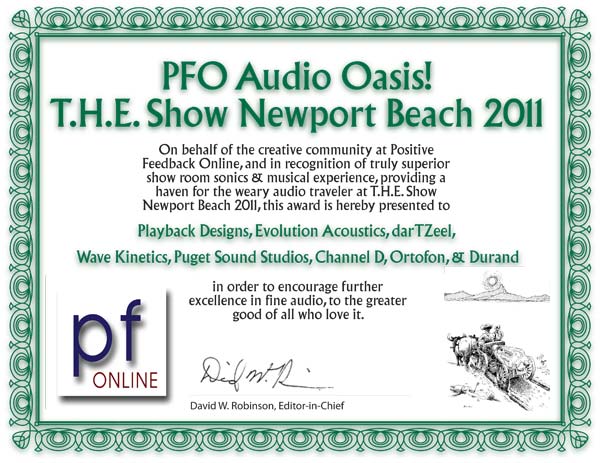
August 2011
Channel D Pure Music reviewed in the Gadgeteer
August 22, 2011
August 2011
Channel D Pure Music reviewed in Einsnull Magazine (Germany)
July / August Issue #4, 2011
August 2011
The Absolute Sound Golden Ear Awards
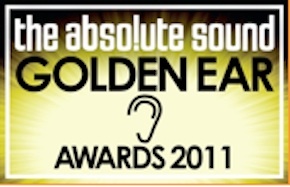
Pure Music Honored with Absolute Sound Golden Ear Award (September 2011 issue)
July 2011
Channel D at (San Francisco) California Audio Show 2011
Press Coverage of Channel D Products:
- Stereophile (Playback Designs)
- Stereophile (SimpliFi Audio)
- EnjoyTheMusic (SimpliFi Audio) (Best in Show)
- Stereophile (Pure Vinyl)
- Computer Audiophile
- Secrets of Home Theater and High Fidelity
July 2011
AVguide Video Coverage of AXPONA New York
Video Coverage Part I - July 4, 2011
July 2011
Channel D at Capitol Audio Fest 2011
Mentioned in Press:
Stereophile Coverage
There were 6 exhibit rooms using dedicated computer audio as a source component.
3 rooms used Windows or Linux PCs as a computer audio source
3 rooms used the Mac platform as a computer audio source. All used Channel D Pure Music.
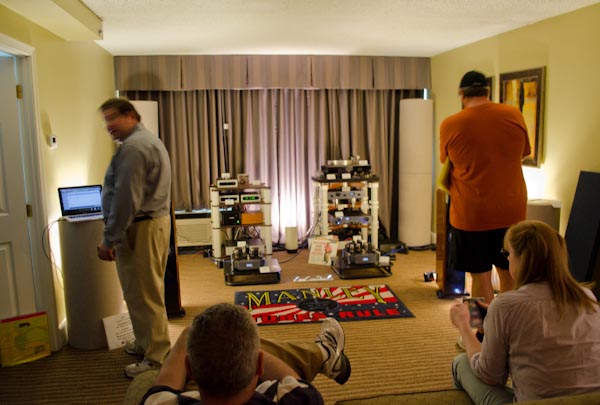
Command Performance AV / Joseph Audio / Manley
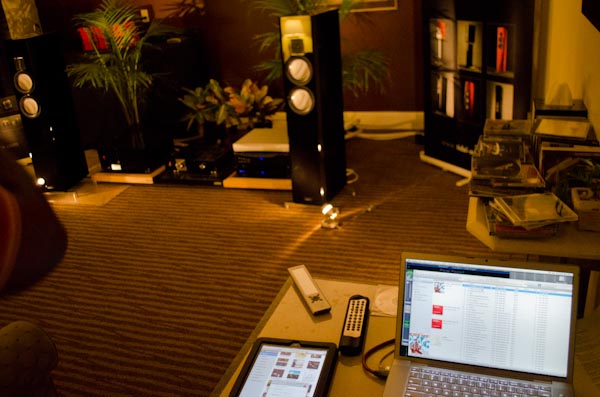
The Voice That Is / Tidal / dCS

Audio Power Labs / Light Harmonic
June 2011
Channel D at AXPONA New York (Stereo Times coverage)
June, 2011
June 2011
Channel D Exhibit Room at AXPONA New York City (Affinia Hotel)
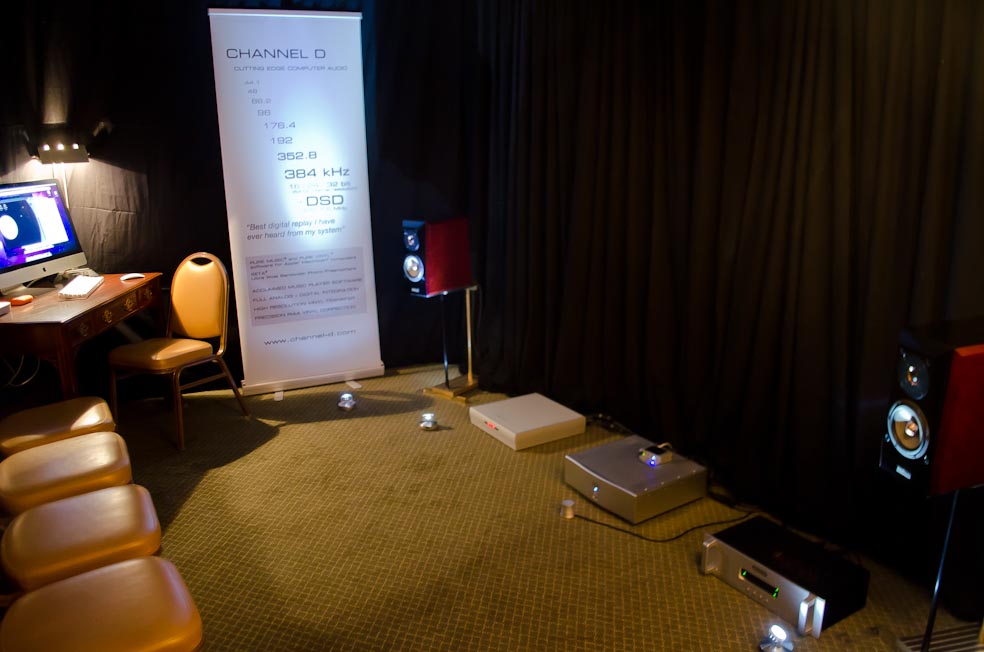
Channel D's Exhibit Room
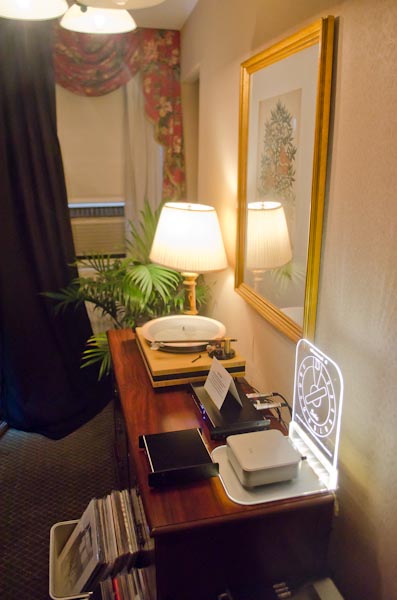 The (mostly) analog end of the room
The (mostly) analog end of the room
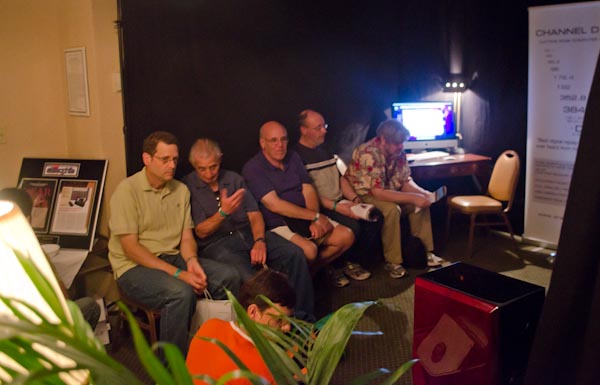 Attendees (including Stereophile's John Atkinson)...
Attendees (including Stereophile's John Atkinson)...
June 2011
Newport 2011: Channel D Pure Music in Sonic Flare
June 2011
T.H.E. Show Newport Beach California: Channel D Products the Most Popular for Computer Audio Demos in Exhibit Rooms
A strong testimonial, equipment manufacturers placing confidence in our products for critical demos in a stressful trade show setting!
The tally:
There were 15 rooms using dedicated computer audio as a source component
2 rooms used the Windows / Linux PC platform as a computer audio source
13 rooms (87%) used the Mac platform as a computer audio source
Channel D computer music software products were used for demos in 7 of those rooms
Bluelight / Playback Designs:
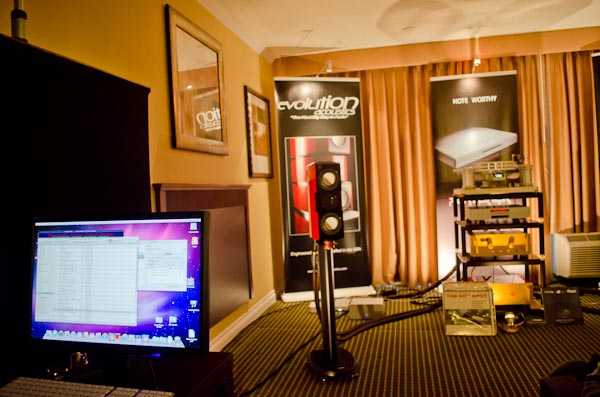
Audio Research - Vandersteen Room:
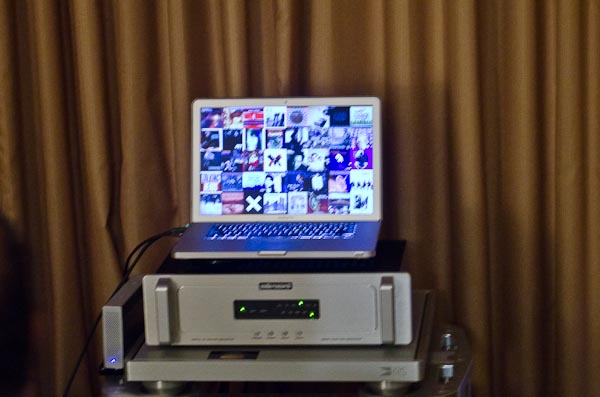
Positive Feedback Online Room:
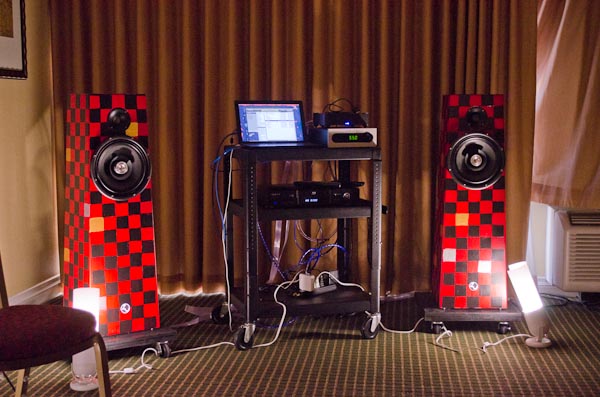
SimpliFi Audio:
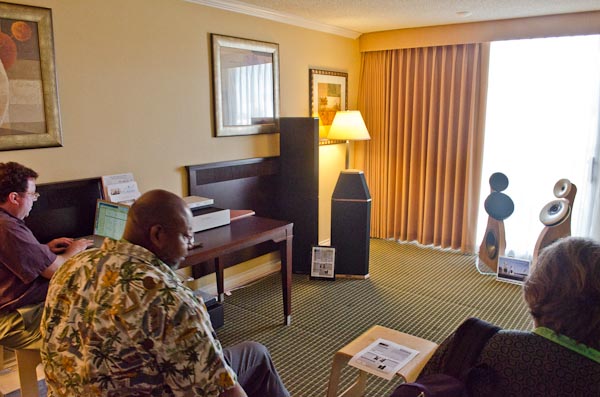
Lindemann:
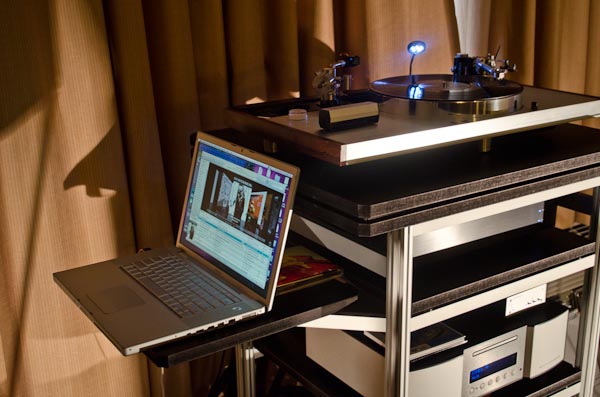
plus Channel Islands (from Positive Feedback Online show coverage)
What about the player software used in the other rooms with Mac computers?
iTunes was used as a stand alone player in 2 of those rooms
Three other Mac music software players were used in the other 4 rooms
June 2011
Channel D Releases Pure Music 1.8 with DSD Playback, "Playthrough" and Integer support
May 2011
Channel D Pure Music Recommended by Berkeley Audio Design in Absolute Sound Review
Click to Read Review of new Berkeley Alpha USB in the downloadable Absolute Sound Guide to Digital Source Components (pdf)
May 2011
Channel D Demo at Audiophile Society meeting in Bedminster / Far Hills, NJ
Thanks to Mark Block, and Brett Mesler of 202 Audio for hosting the meeting
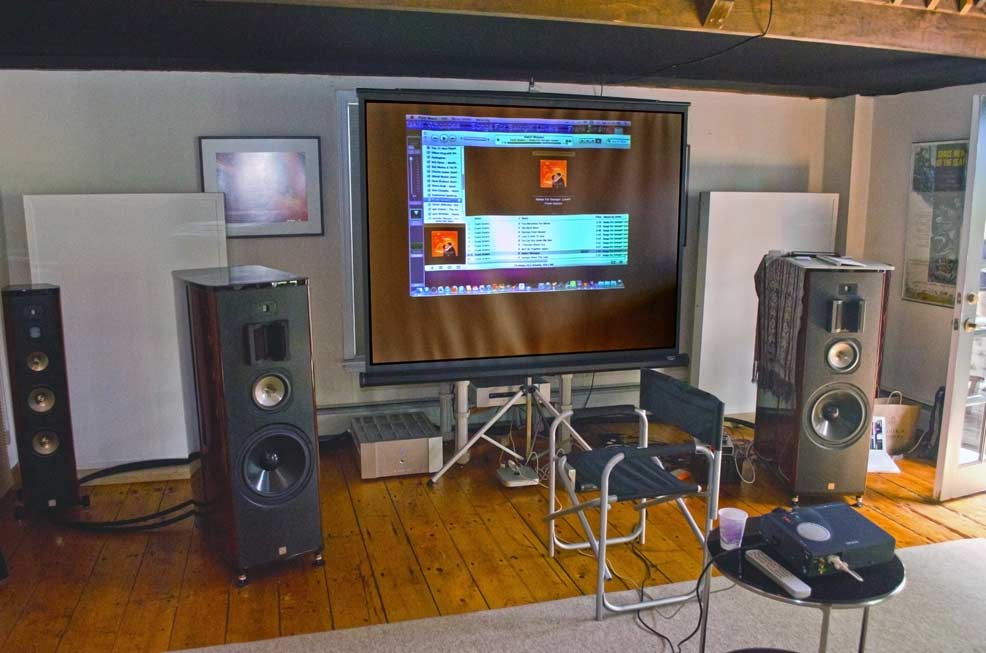
May 2011
Channel D Announces Pure Music 1.8 with DSD Playback, "Playthrough" and Integer support
Click for News Release (pdf)
April 2011
Channel D Exhibit Room at AXPONA Atlanta
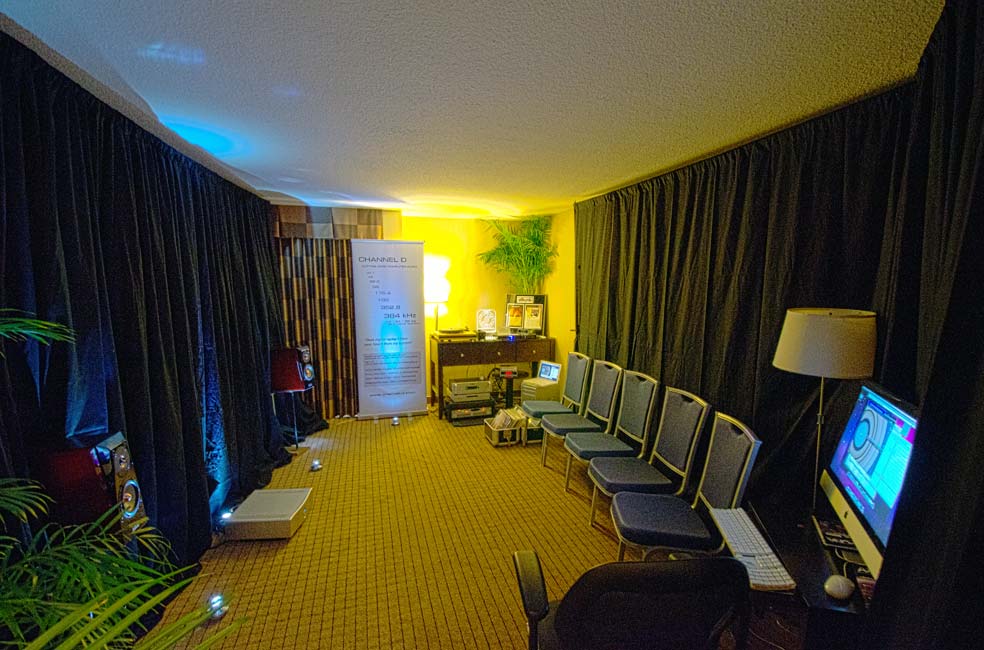 Channel D's Exhibit Room Channel D's Exhibit Room
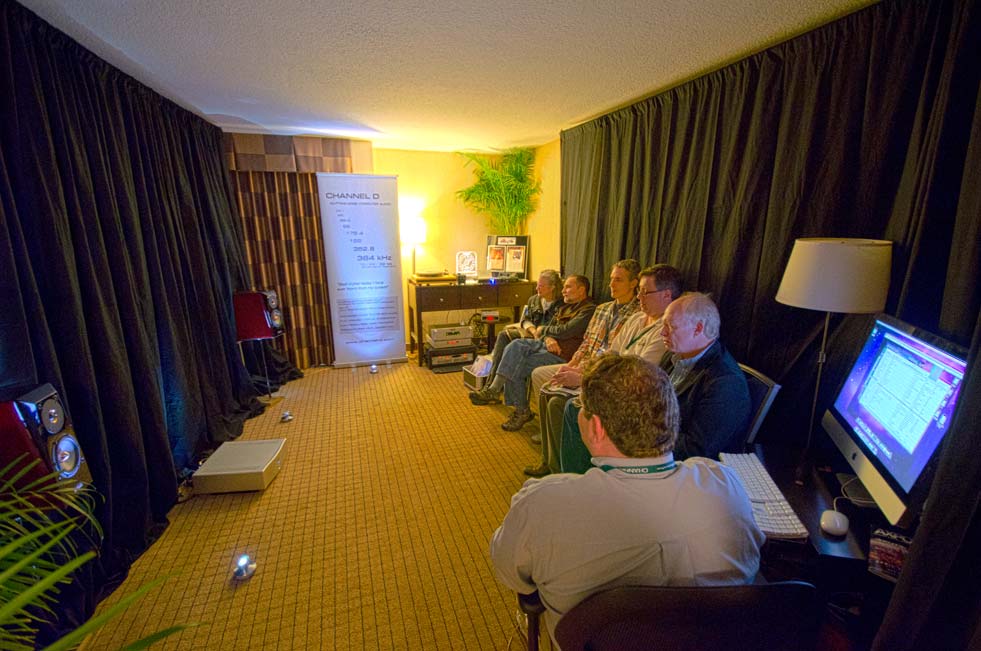 All eyes closed... All eyes closed...
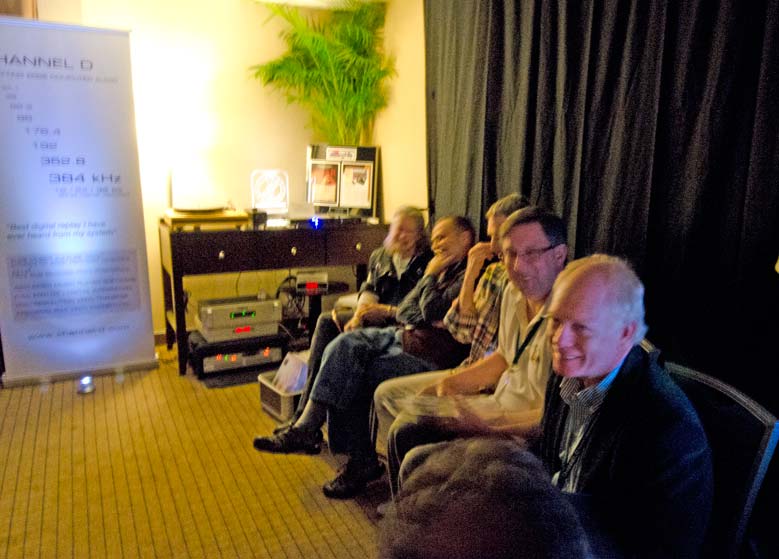 "Wow - that was great!"
"Wow - that was great!"
April 2011
Channel D Press Coverage at AXPONA
The Vinyl Anachronist
Stereophile (Channel D room)
Stereophile (DaVinci 384 kHz DAC)
EnjoyTheMusic (Thursday coverage)
EnjoyTheMusic (Sunday coverage)
April 2011
Channel D Pure Music Reviewed in Hi-Fi Choice (U.K.) (May 2011, Issue 345)
February 2011
Rocky Mountain Audio Fest Seminar Videos posted, with participation by Rob Robinson, Channel D Director of Engineering
Advances in Computer Audio Panel Discussion (Moderated by John Atkinson of Stereophile)
LP Ripping Session (Moderated by John Atkinson of Stereophile) Note: reposted February 2016, addressing copyright holder concern.
January 2011
Channel D Pure Music mentioned in Steven Stone's Best of
CES 2011
December 2010
Channel D Pure Music reviewed by Srajan Ebaen at 6moons.com
December 2010
Channel D Pure Music reviewed by Wicked Digital
December 2010
Player Wars: Pure Music vs. Amarra - Channel D Pure Music reviewed by Confessions Of A Part-Time Audiophile
December 2010
Jim Smith's Get Better Sound "Quarter Notes" article on Computer Audio and Interview with Channel D Director of Engineering
As republished at
6moons.com
Link to
original article (used with permission; Quarter Notes is included with Get Better Sound)
December 2010
Channel D Pure Vinyl chosen as one of Enjoy the Music's "Top 10 Great Audiophile Gifts For 2010"
December 2010
Pure Music reviewed in The Absolute Sound (Issue 209)
Click for online version
November 2010
Channel D Products Demonstrated at Burmester / Genesis / Channel D Special Event sponsored by Tweak Studio in Chicago
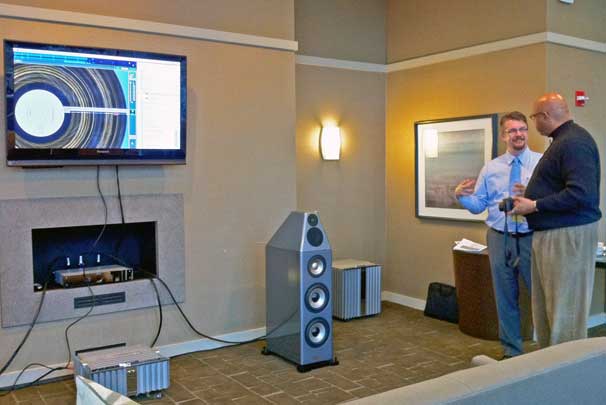
November 2010
Channel D Products honored with Stereophile "Product of the Year" Awards
purchase issue from Zinio
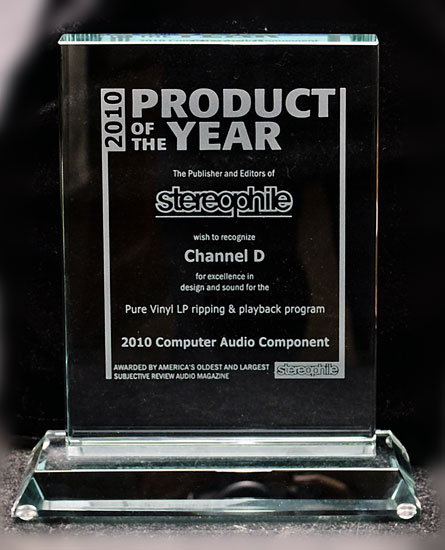
Computer Audio Component of the Year:
Channel D Pure Vinyl™
Computer Audio Component of the Year (runner-up):
Channel D Pure Music®
Budget Audio Component of the Year (runner-up):
Channel D Pure Music®
November 2010
Pure Music featured among Home Theater Magazine's "60 Great Gifts for the Holidays"
October 2010
Fedeltà del Suono (Italy) (issue FDS178) review of Channel D Pure Music
October 2010
Channel D at Rocky Mountain Audio Fest 2010
(Channel D's 5th contiguous year exhibiting at Rocky Mountain Audio Fest)
Exhibit Room
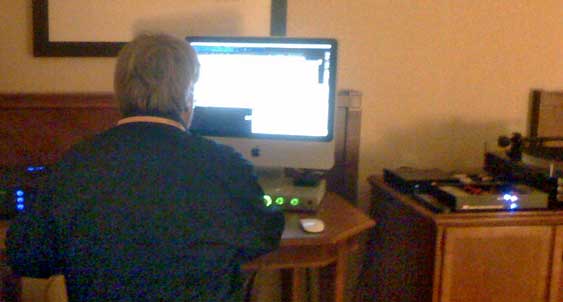
Vinyl "Ripping" Seminar
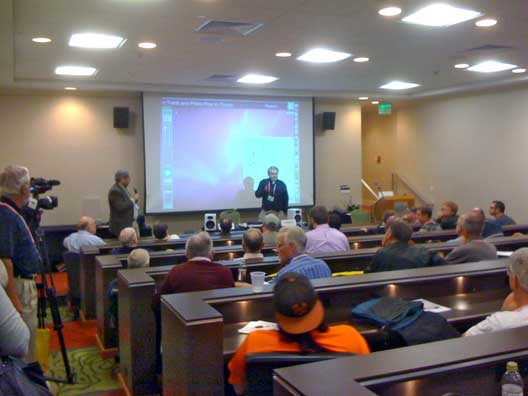
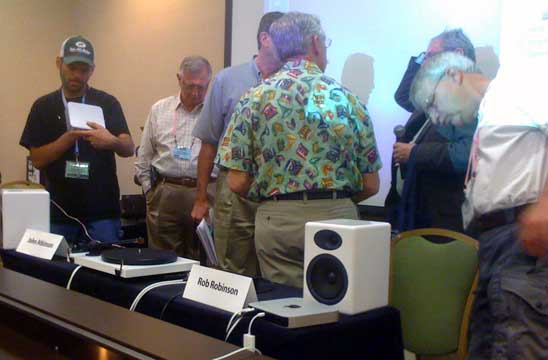
Enjoythemusic.com RMAF coverage
Stereophile's coverage of vinyl "ripping" seminar
Stereophile's coverage of Advances in Computer Audio panel discussion
stereomojo.com RMAF coverage
The Audio Beat coverage of Rocky Mountain Audio Fest 2010 Best in Show (Wavelength Audio room using Channel D Pure Music)
Channel D Pure Music player software used in Zu Audio, Nordost, Wavelength Audio, Vandersteen and many other exhibit rooms
October 2010
6moons.com review of Channel D Pure Music
October 2010
Home Tech (Mexico) review of Channel D Pure Music
October 2010
Channel D Products Honored in Stereophile - Editor's Top Picks for the Industry's Best Products
Channel D Seta Model L Phono Preamplifier: Class A Recommended Component
Channel D Seta Nano Phono Preamplifier: Class C Recommended Component
Channel D Pure Music: Recommended Component (Computer Software)
Channel D Pure Vinyl: Recommended Component (Computer Software)
The October, 2010 issue of Stereophile may be purchased from Zinio
September 2010
Fidelity (Scandinavia) / Kurt Lassen review of Channel D Pure Music (September / October Issue 47) (page 81-82)
July 2010
Channel D Pure Vinyl, Pure Music, Seta Model L and Seta Nano "Flat" Phono Preamplifiers reviewed in Stereophile Magazine
Michael Fremer weighs in on Pure Vinyl's Software RIAA Correction / "Flat" Vinyl Playback and Seta Phono Preamplifiers. John Atkinson's complete measurements of Channel D Seta Phono Preamplifiers.
Read the online reviews in Stereophile, or purchase the August, 2010 issue from Zinio.
July 2010
Positive Feedback Online reviews Channel D Pure Music
March 2010
Nels Ferre from Enjoy the Music reviews Channel D Pure Vinyl
March 2010
Channel D Products Exhibited at AXPONA Audio Expo North America, Jacksonville, FL
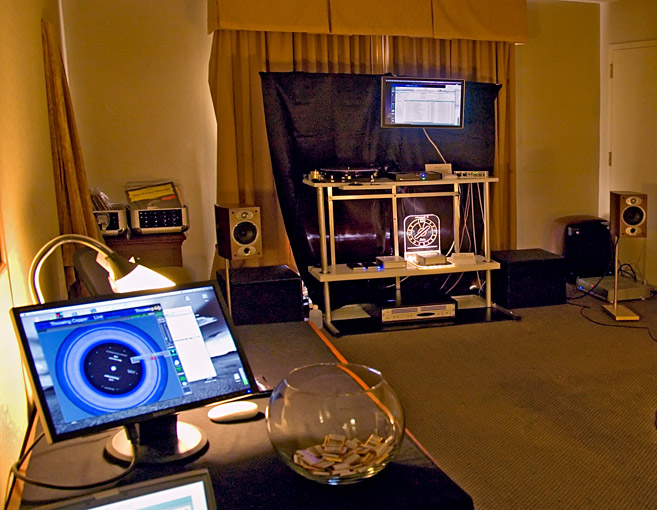
March 2010
Channel D Unveils New Pure Music-Player Software
Channel D, developers of innovative audio software solutions for Apple® Macintosh computers—including the acclaimed audiophile-quality Pure Vinyl software, a high-resolution vinyl transcription, archiving and editing program—recently introduced a new high-resolution digital audio playback software program for Apple iTunes®.
|
|
 The (mostly) analog end of the room
The (mostly) analog end of the room
 Attendees (including Stereophile's John Atkinson)...
Attendees (including Stereophile's John Atkinson)...





 All eyes closed...
All eyes closed...
 "Wow - that was great!"
"Wow - that was great!"